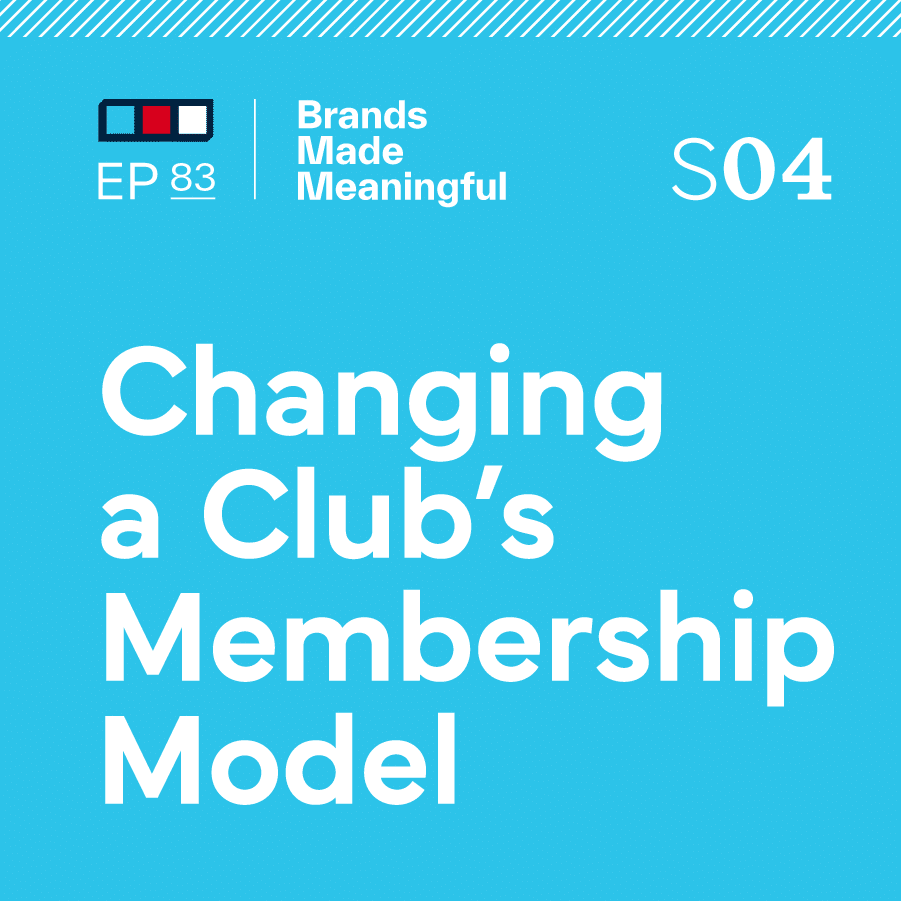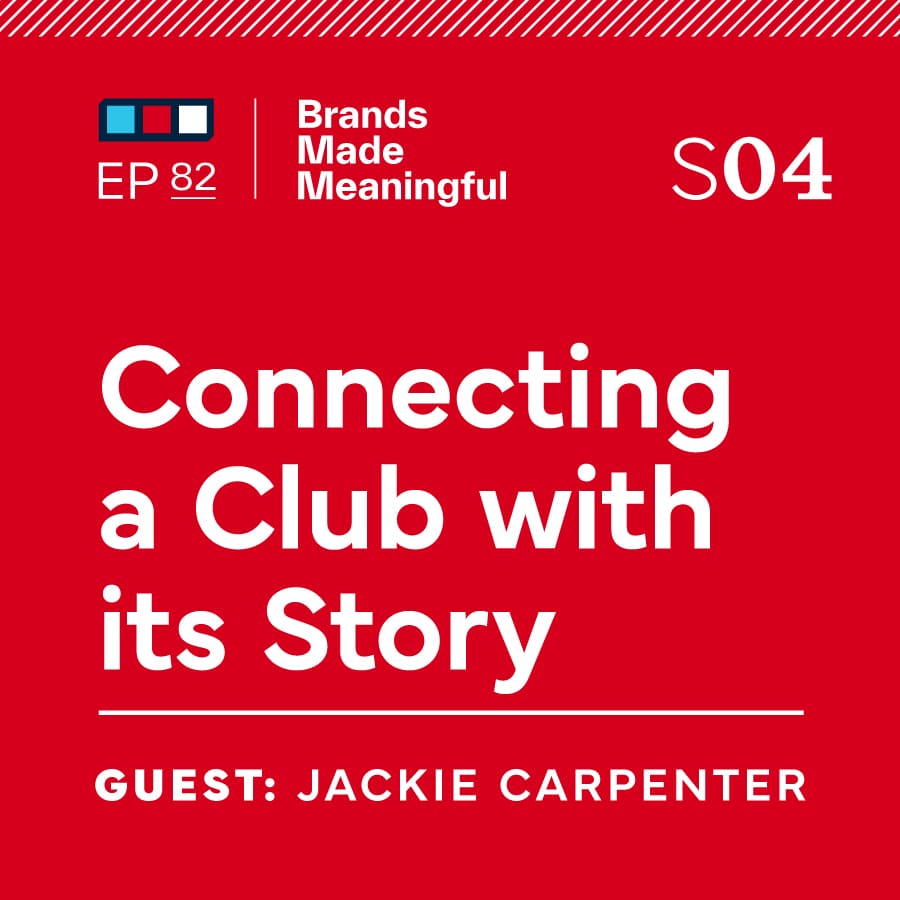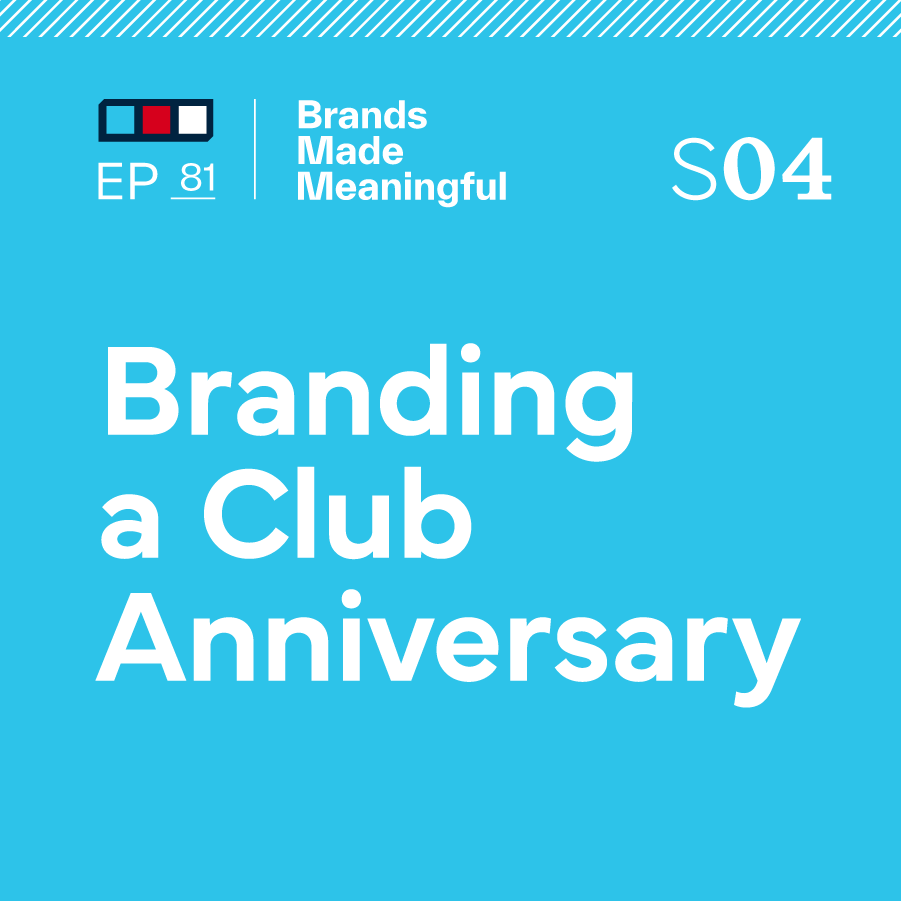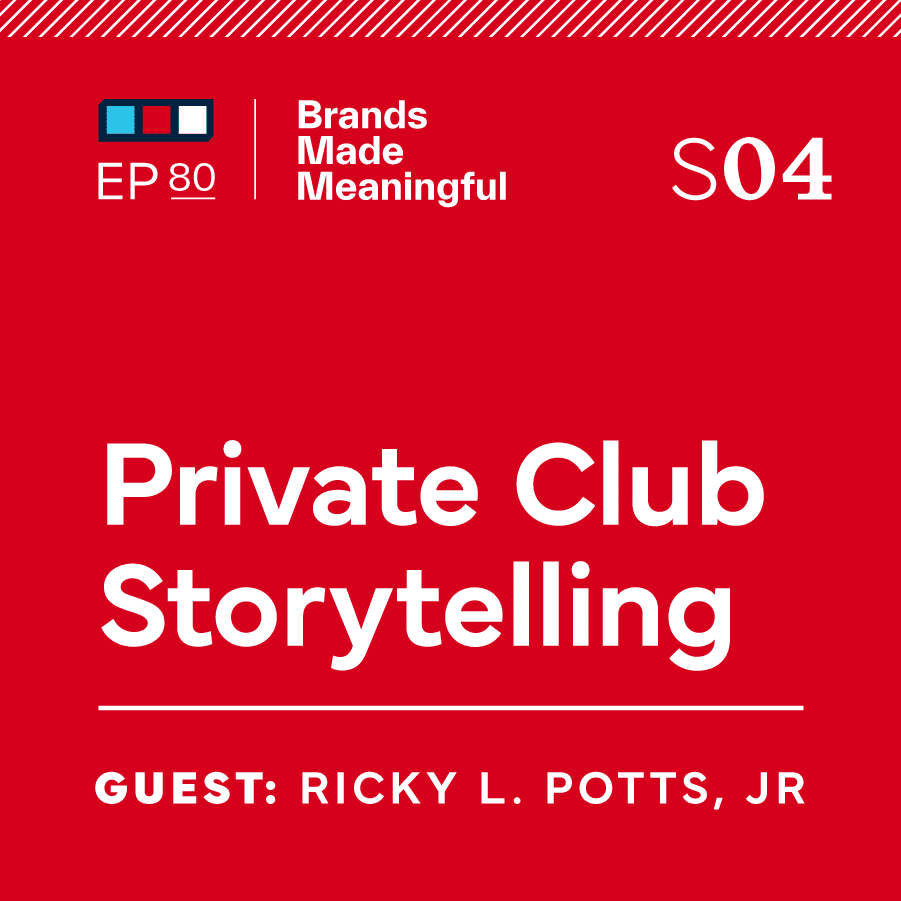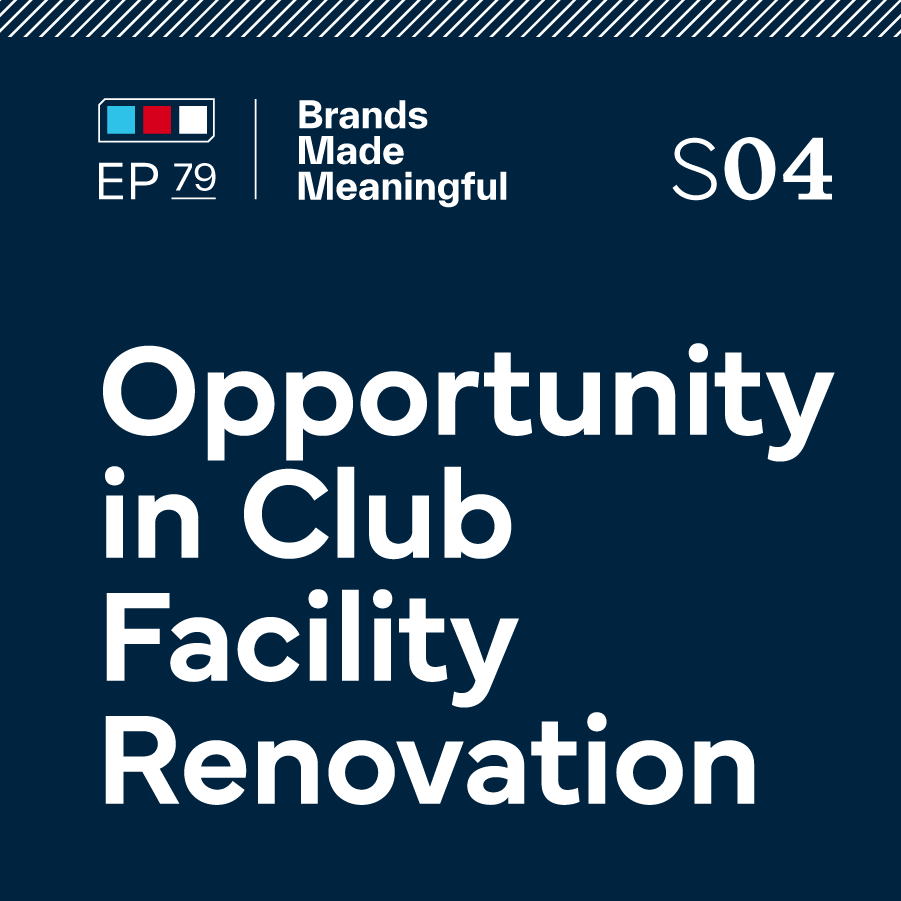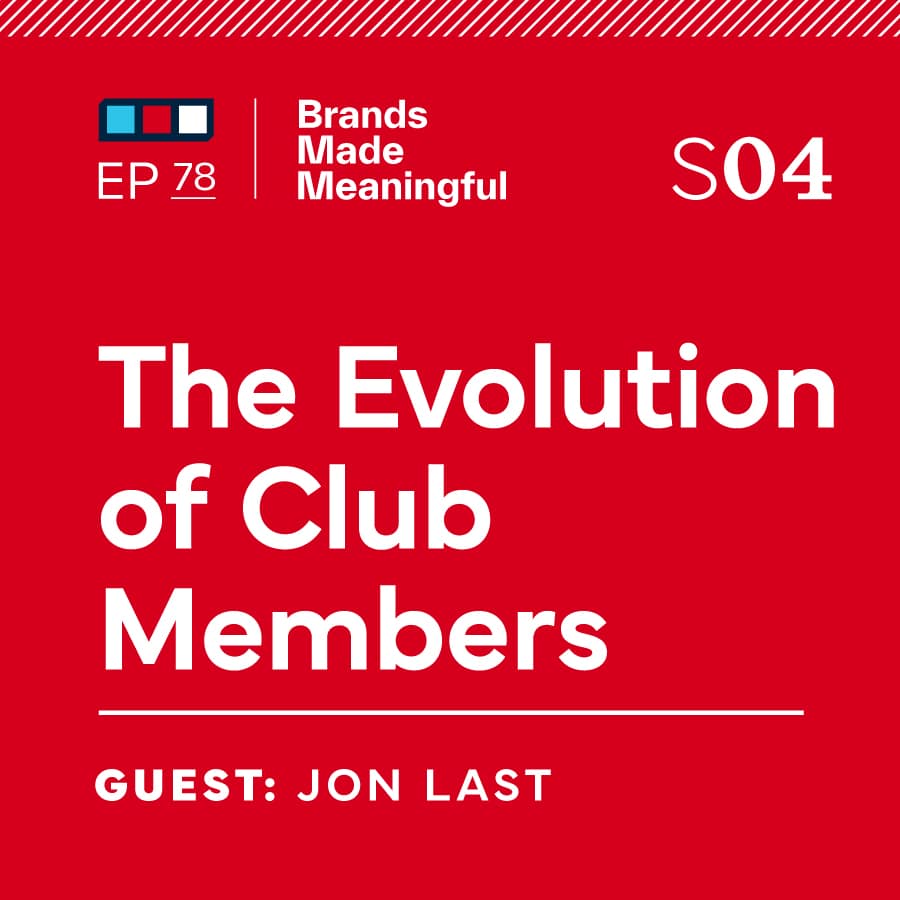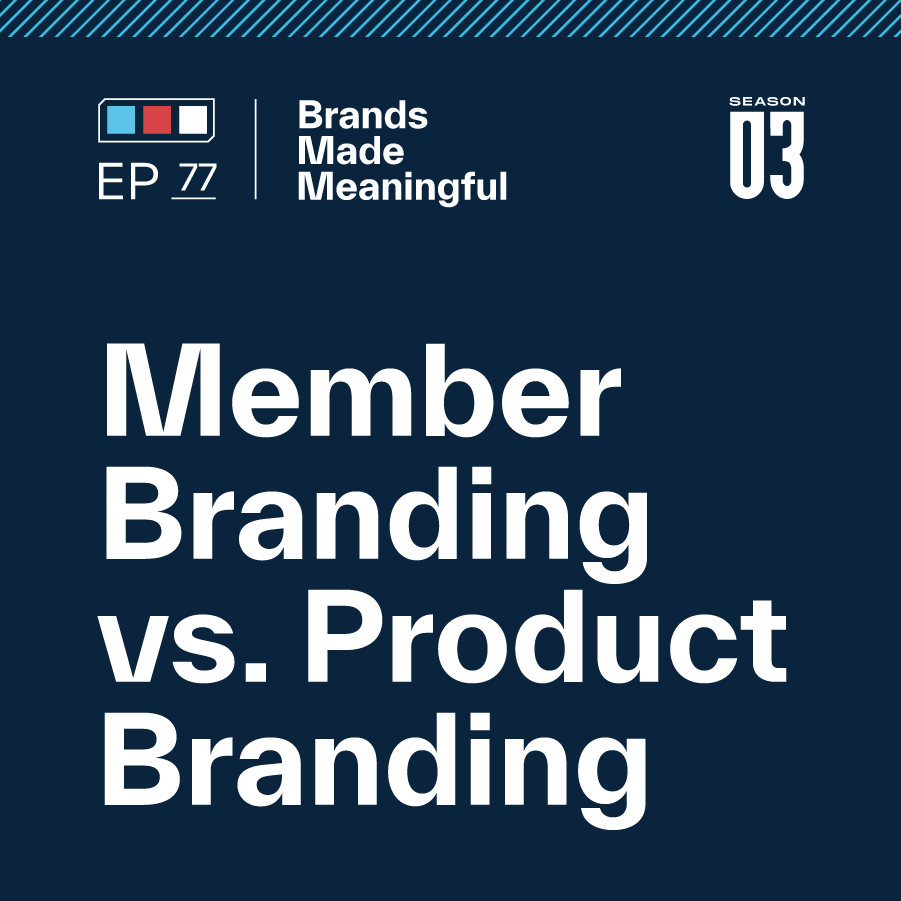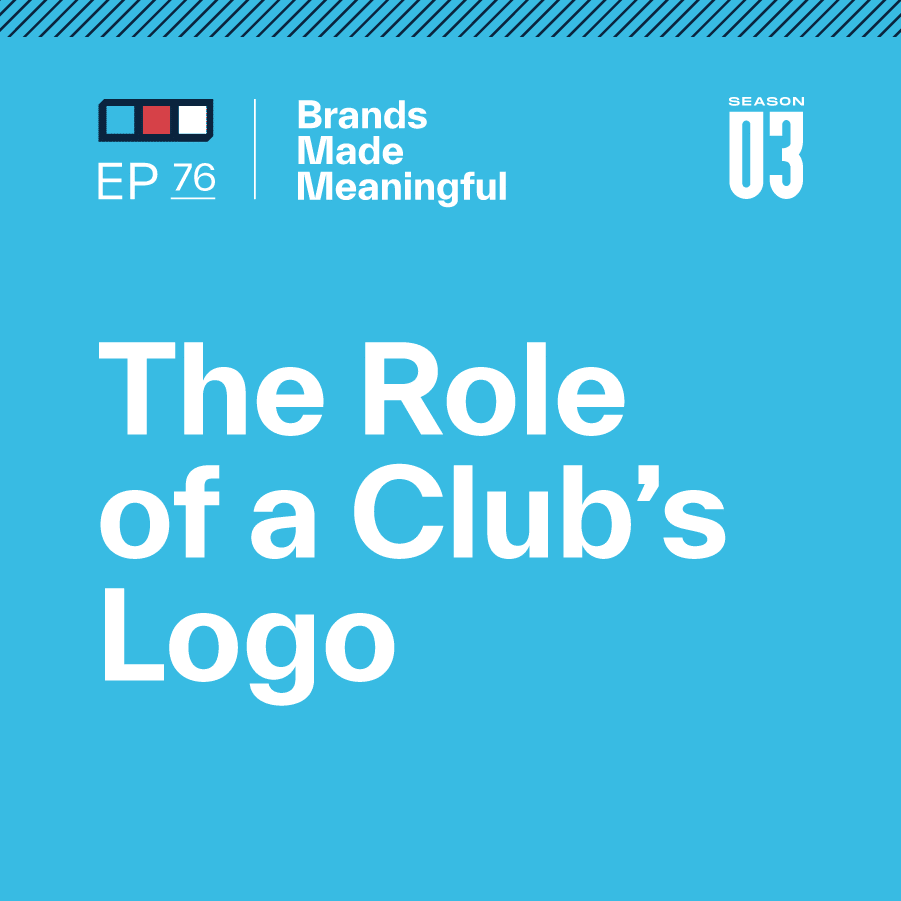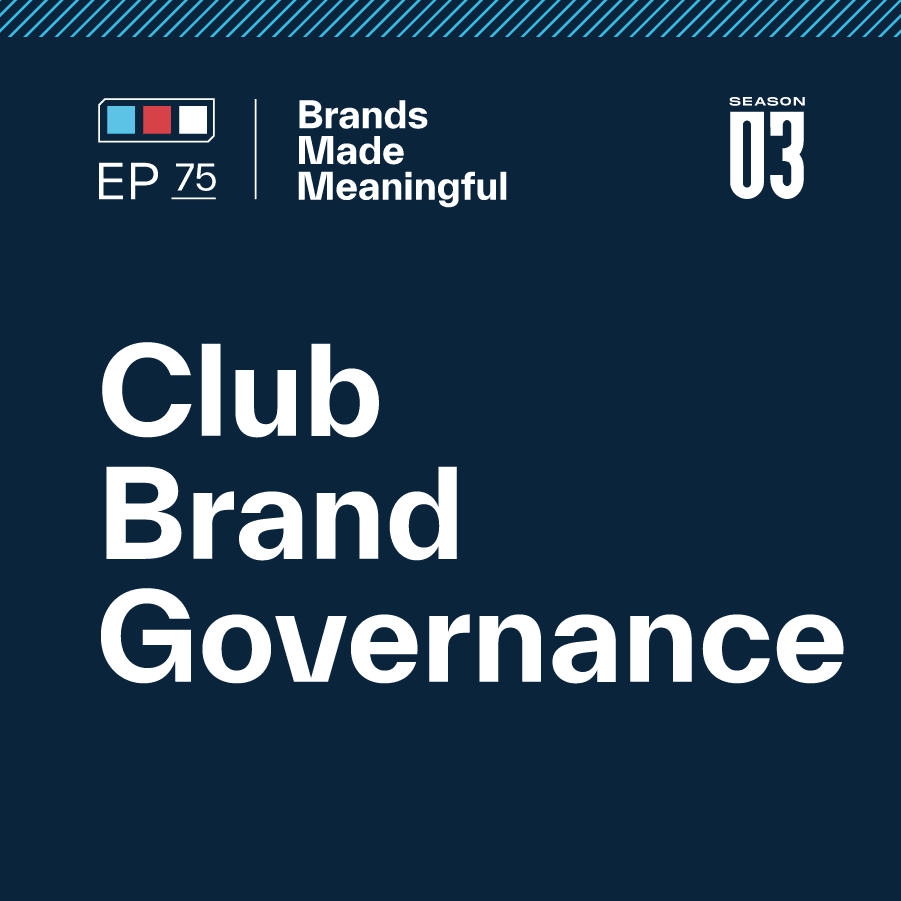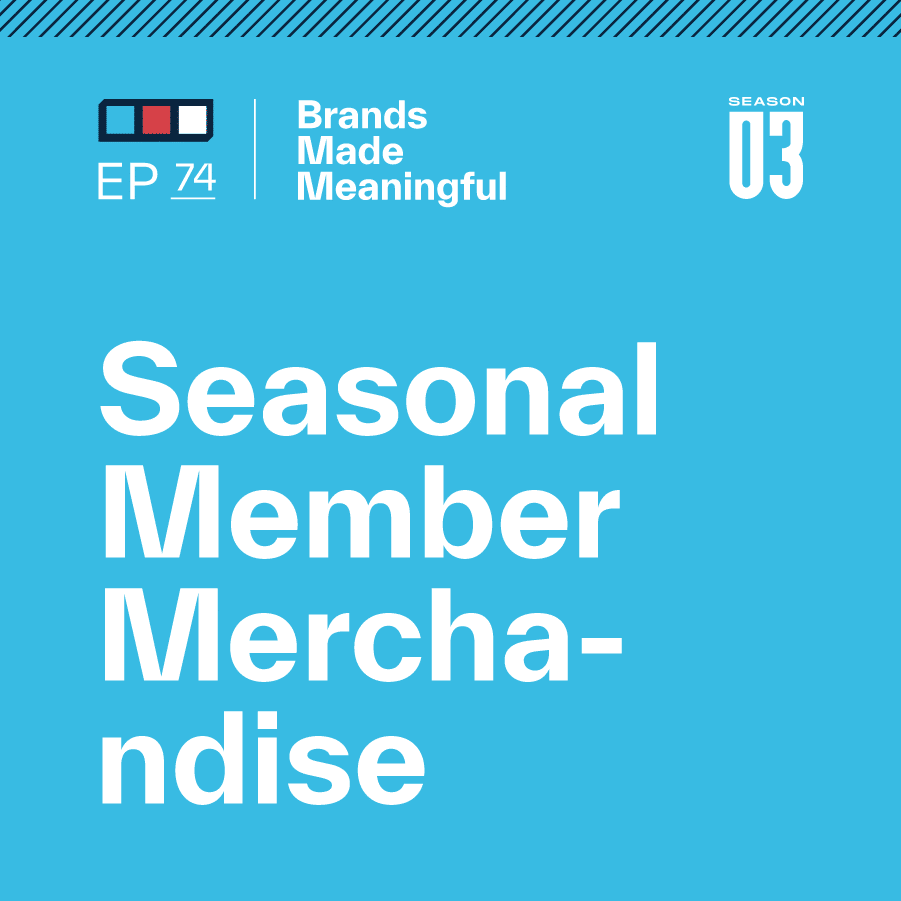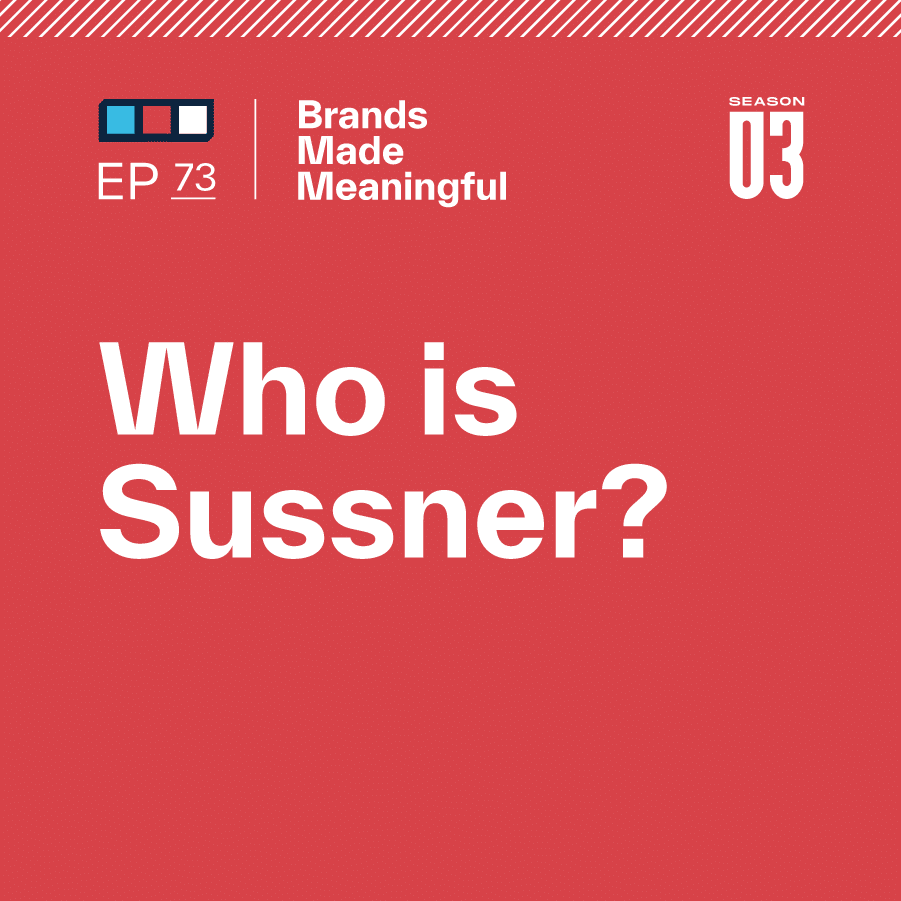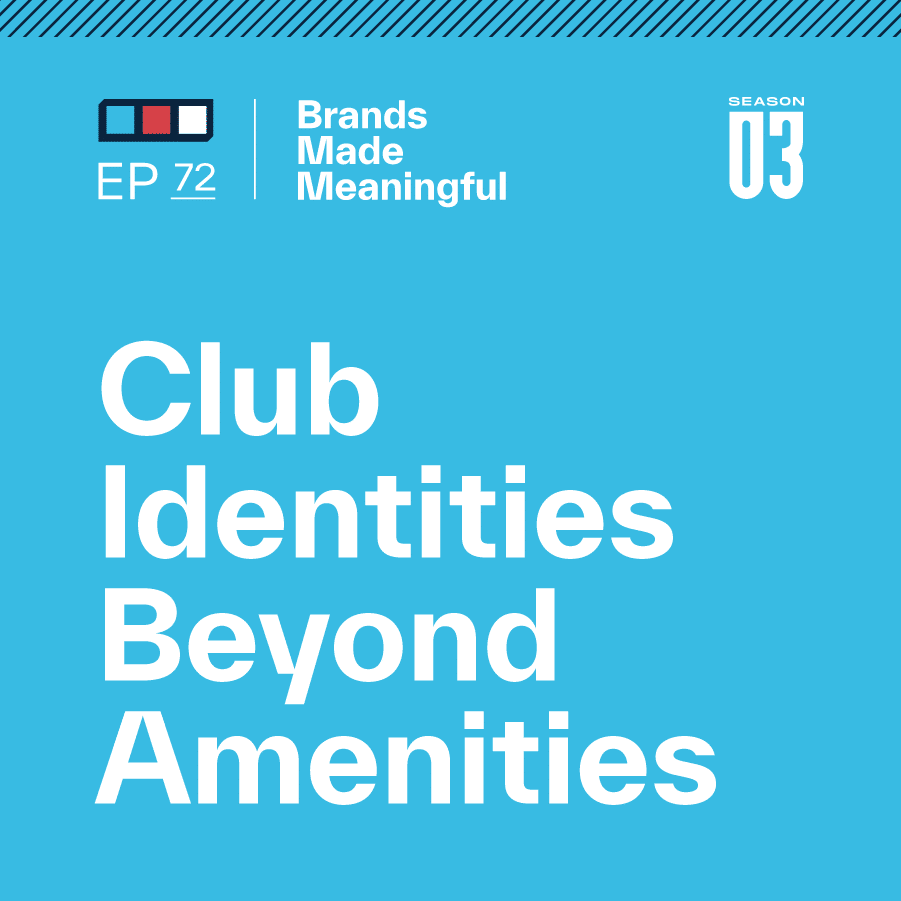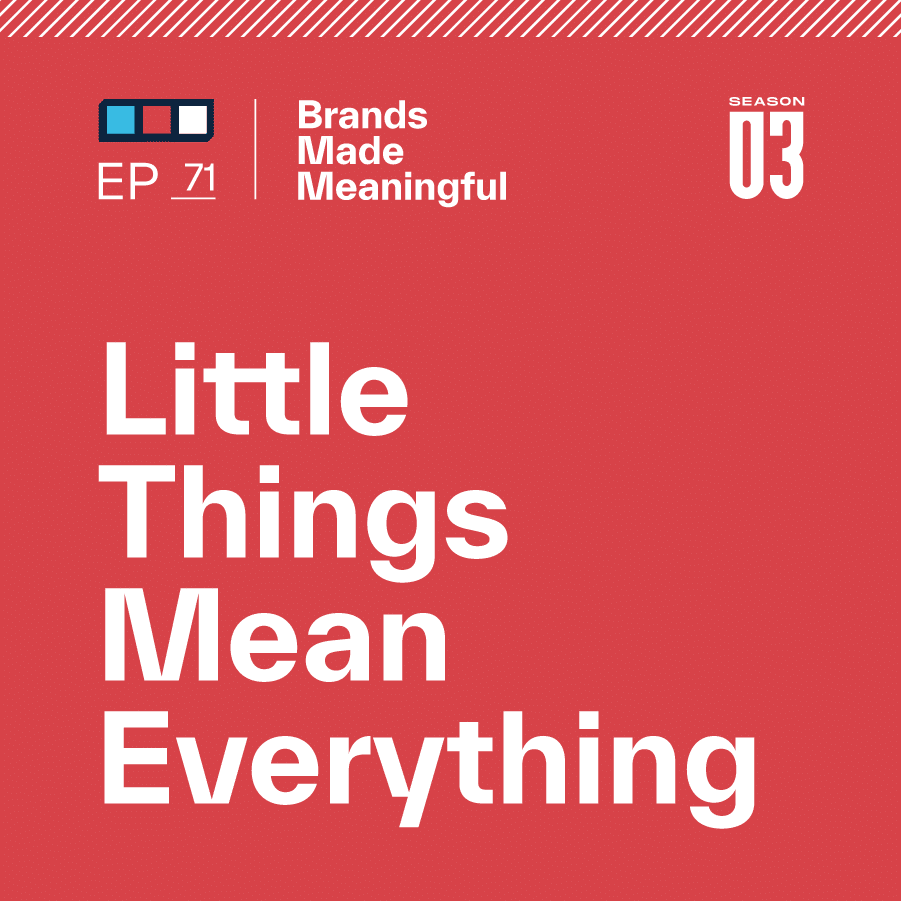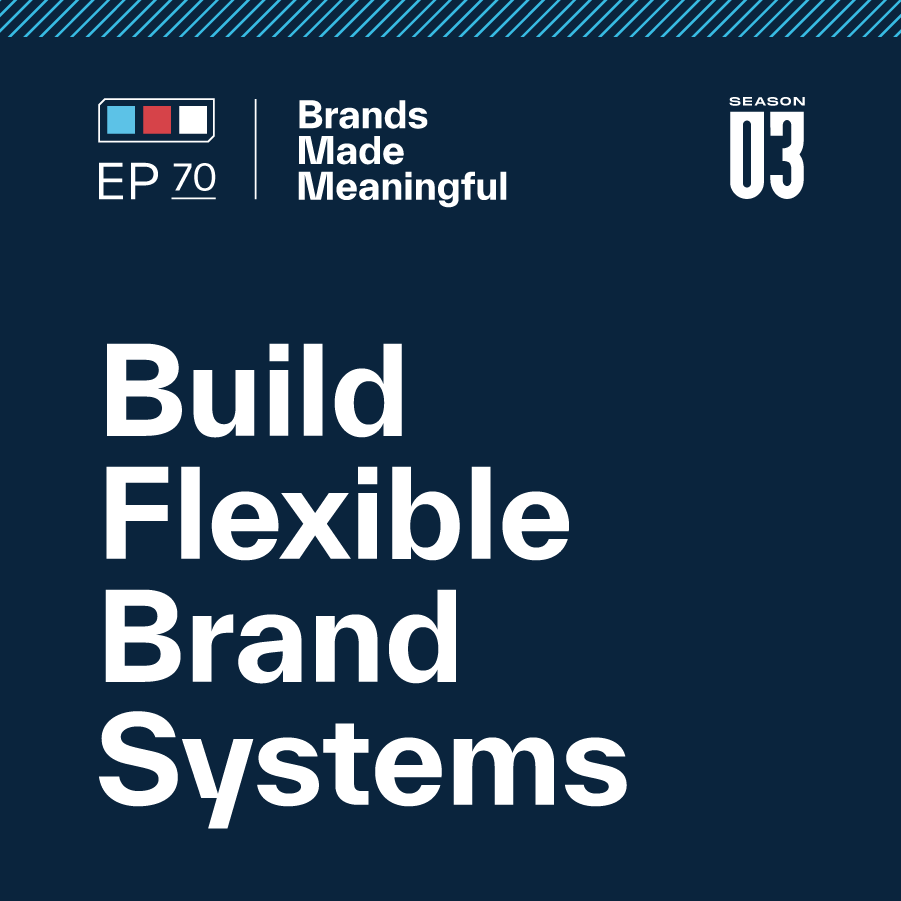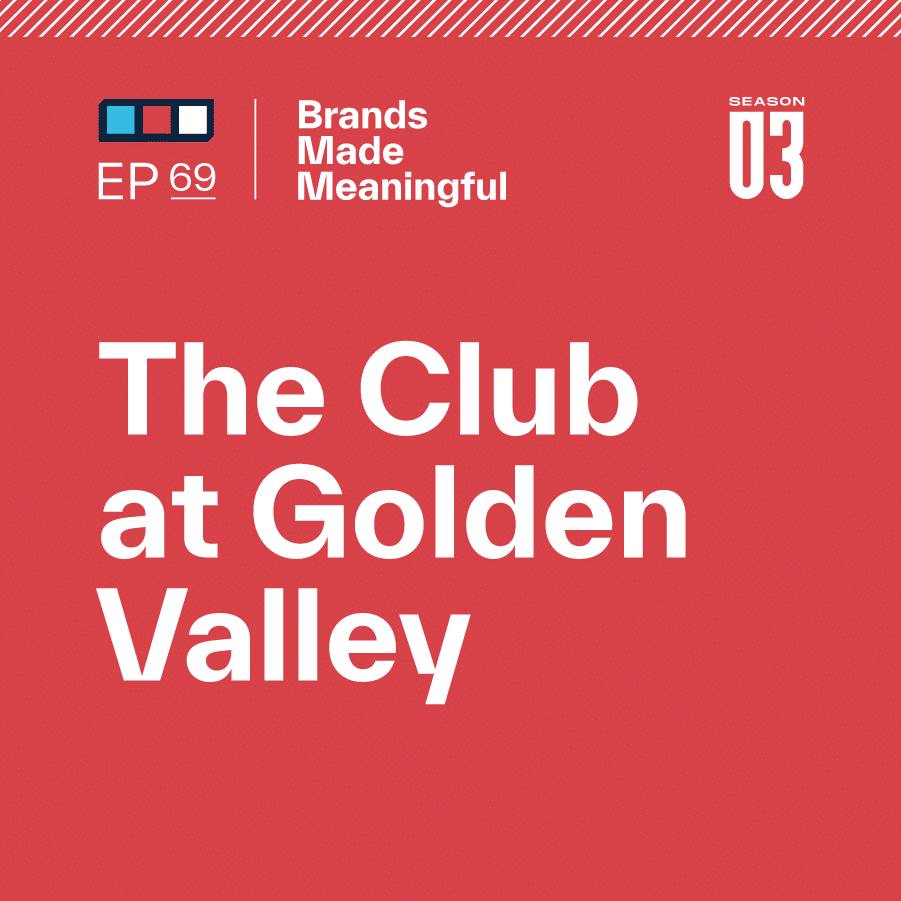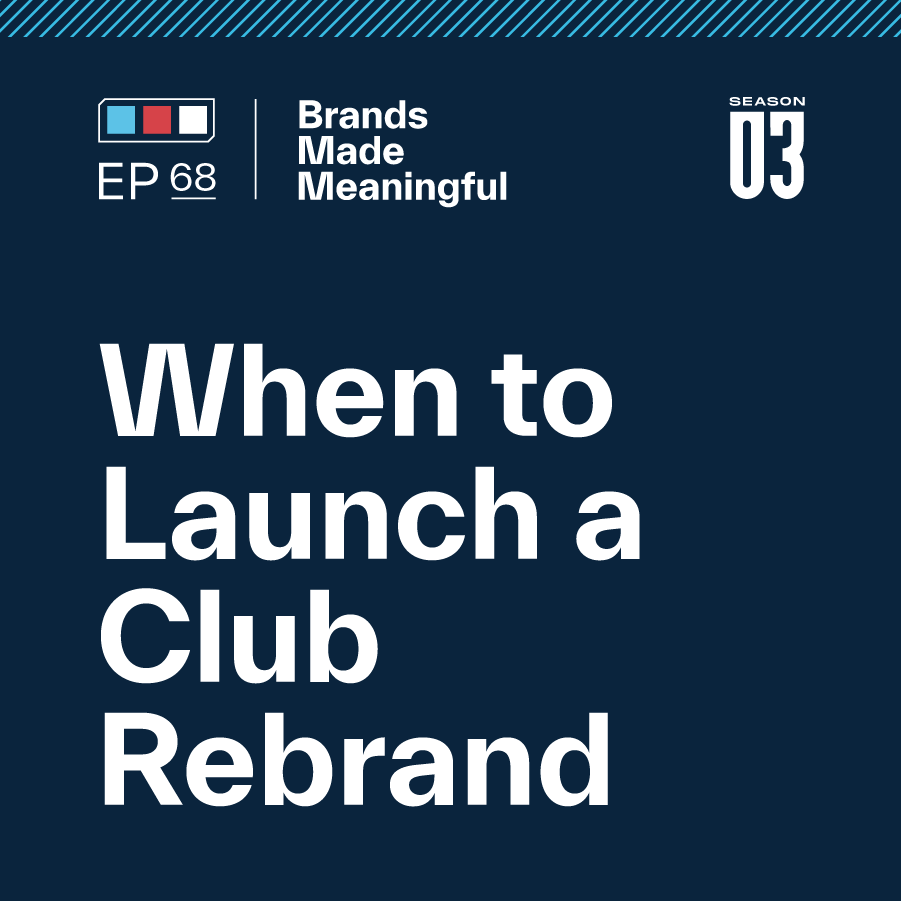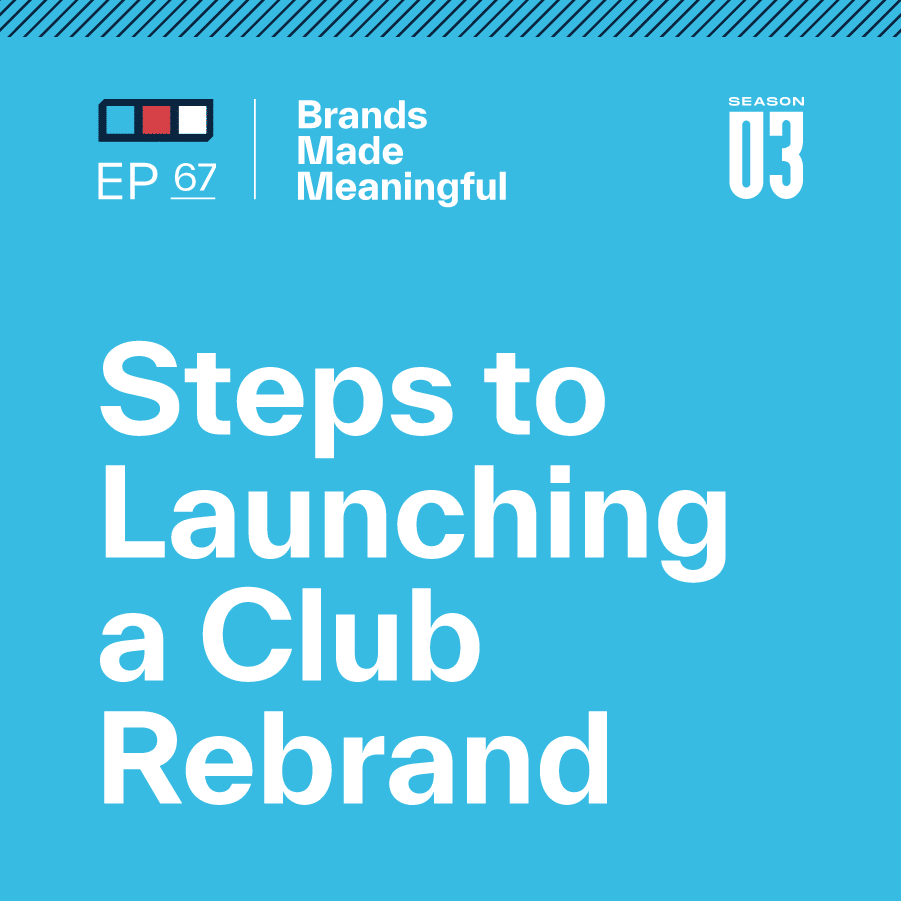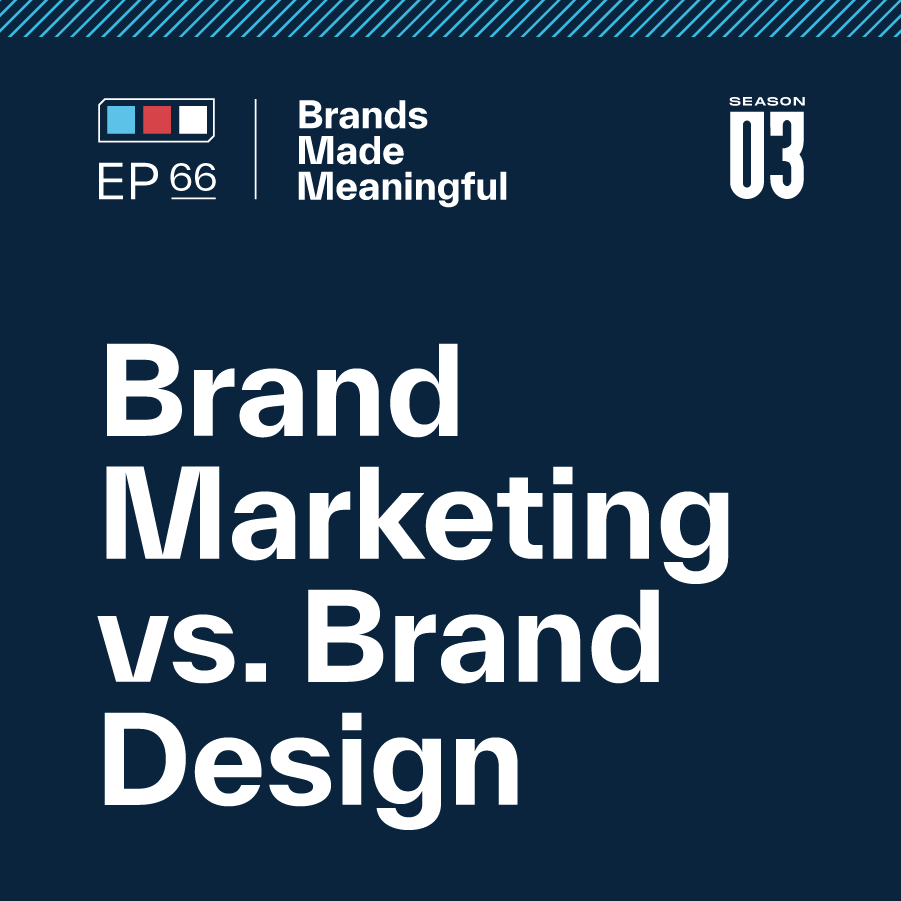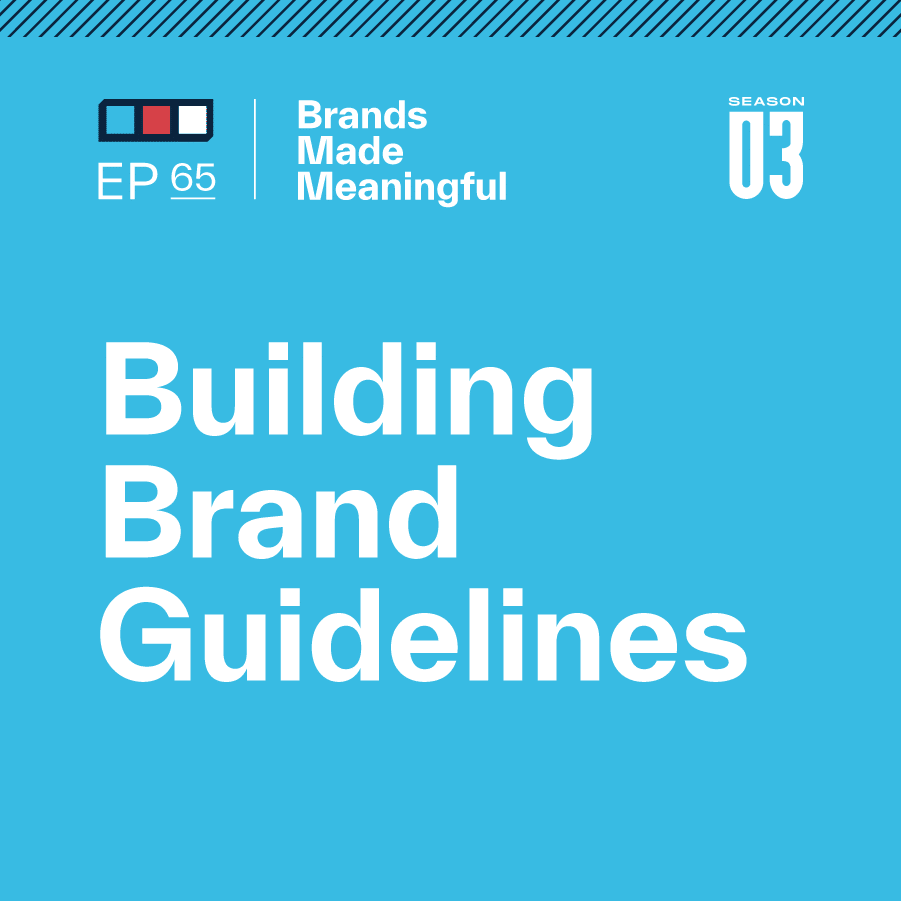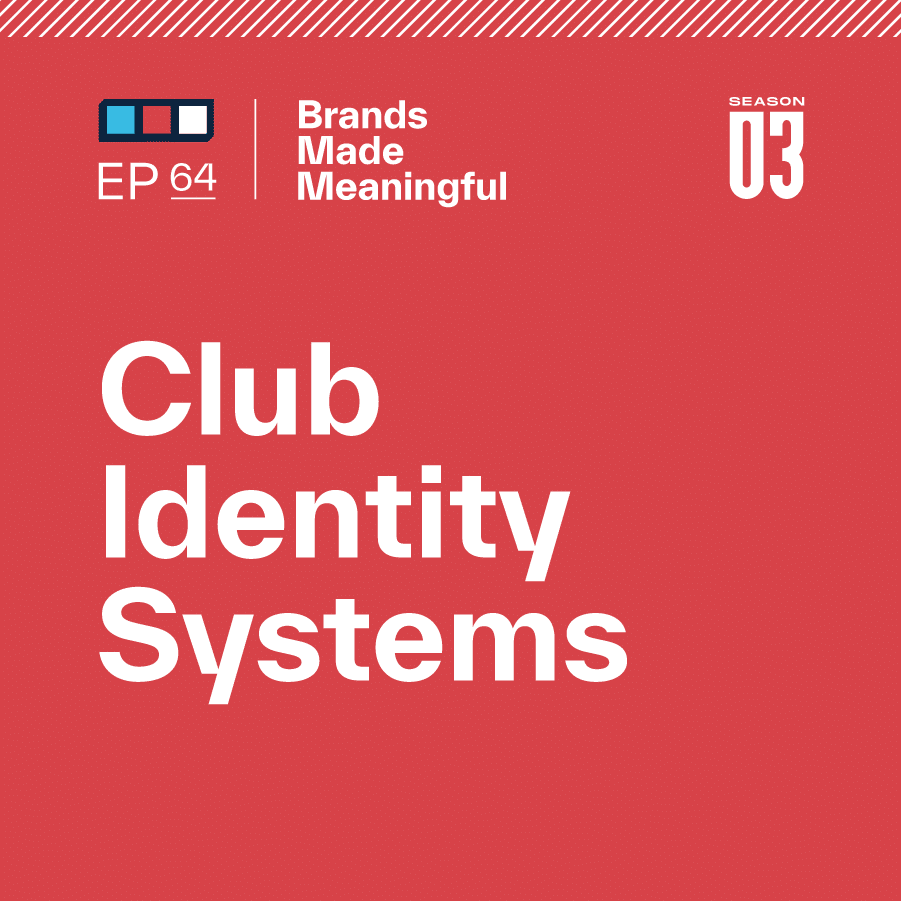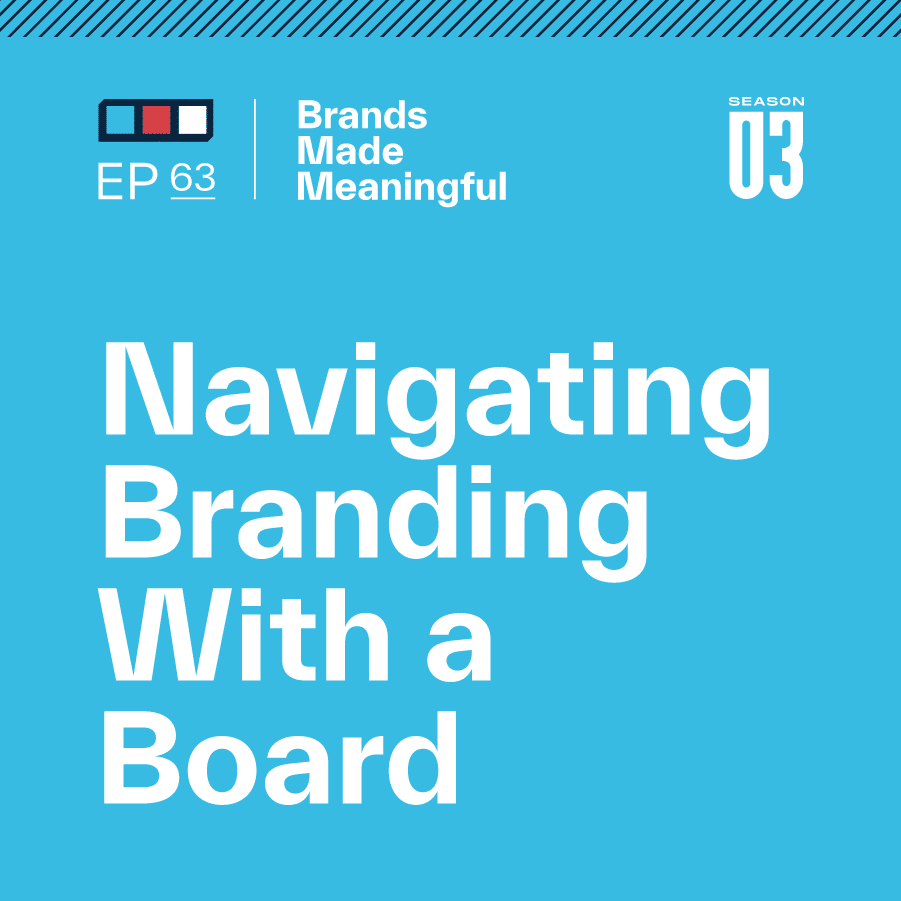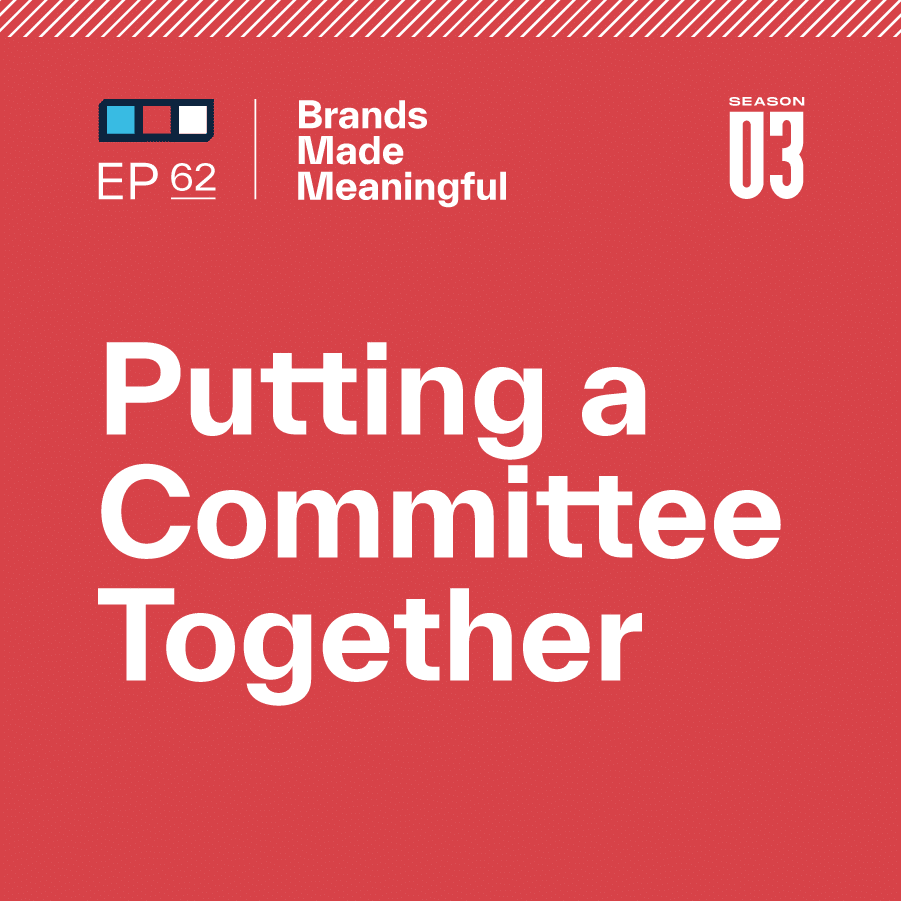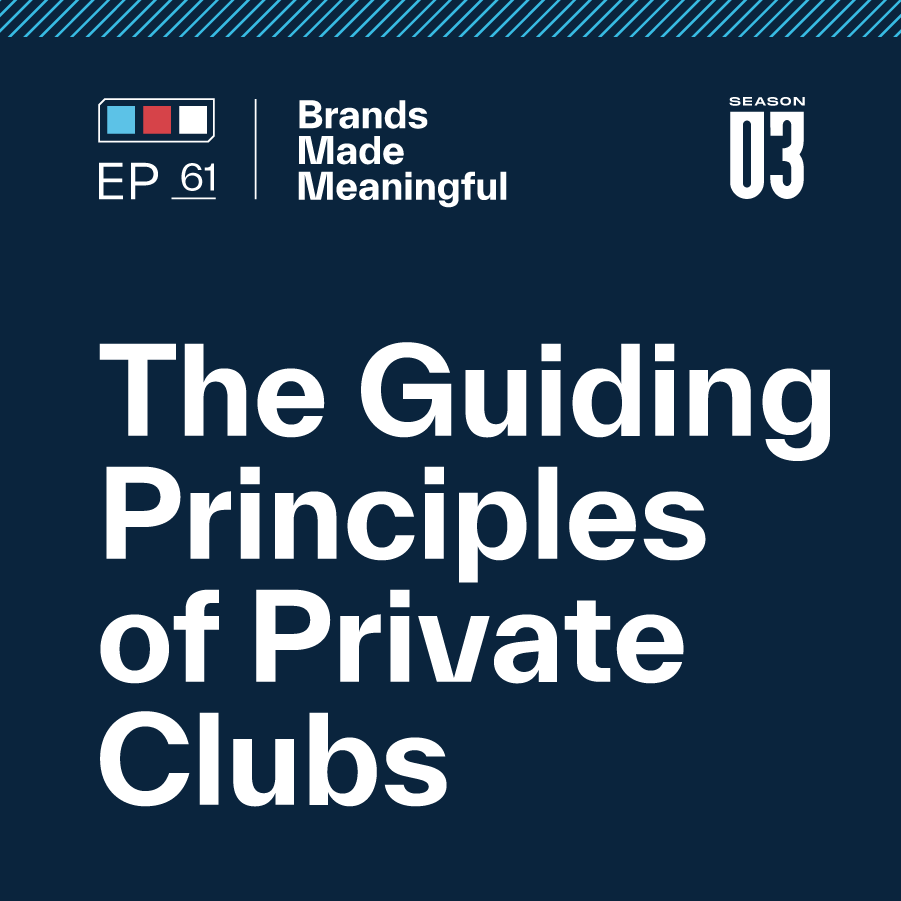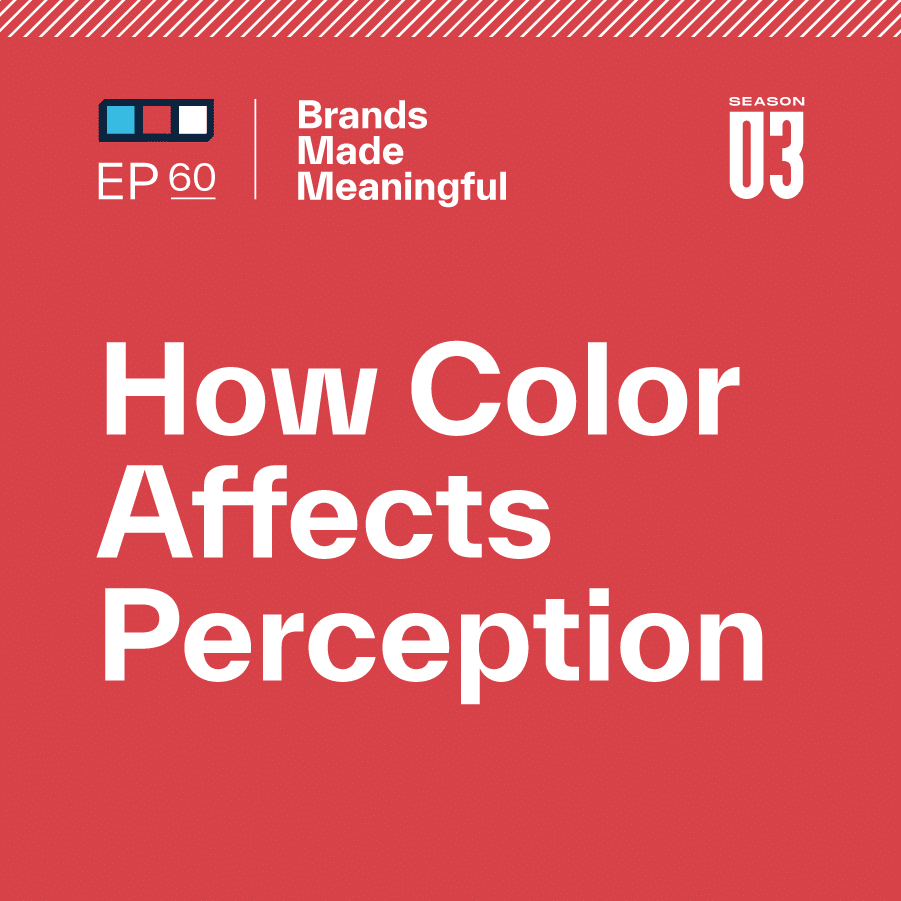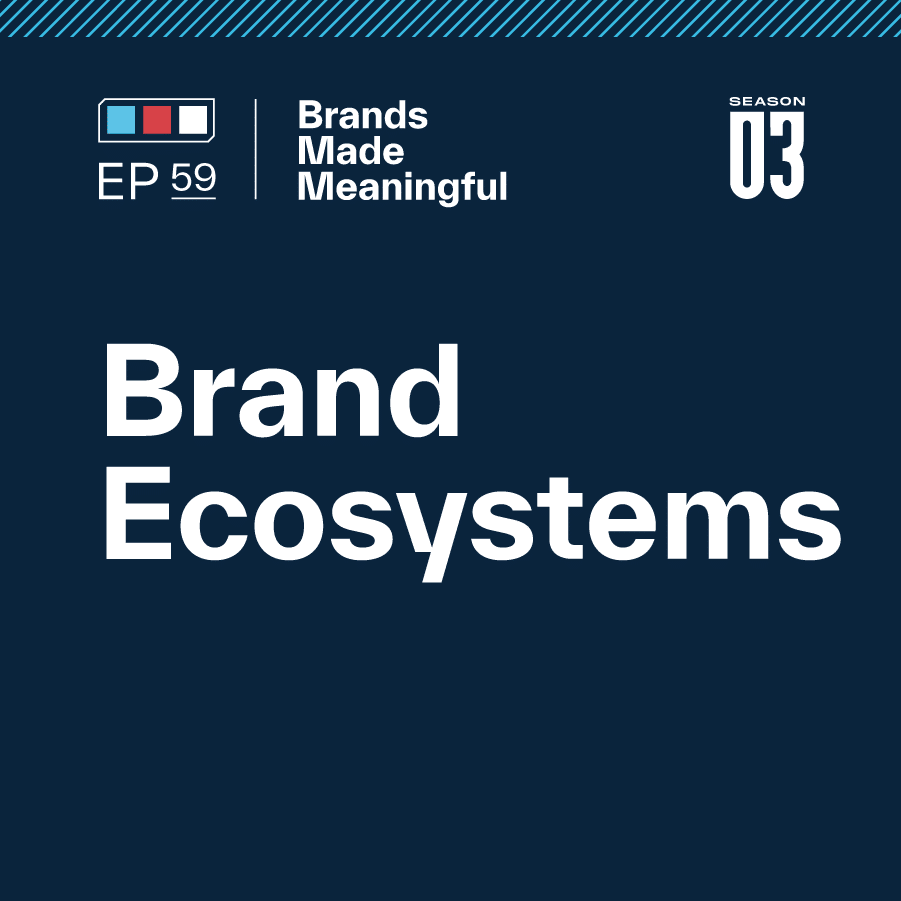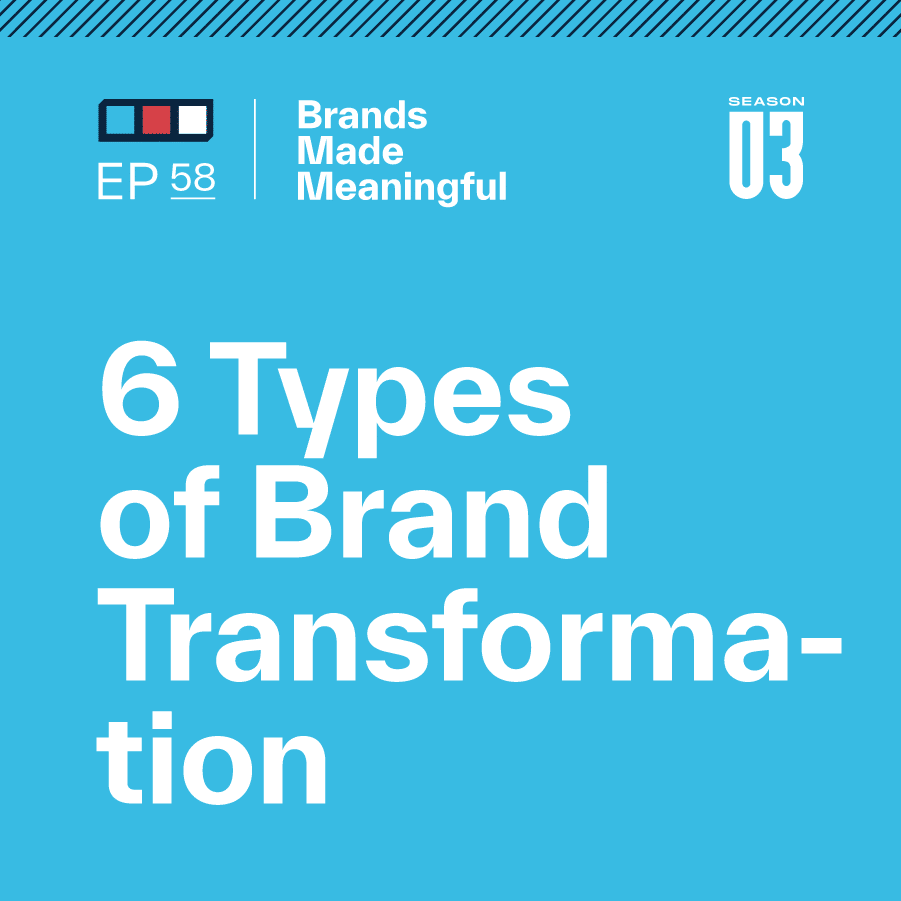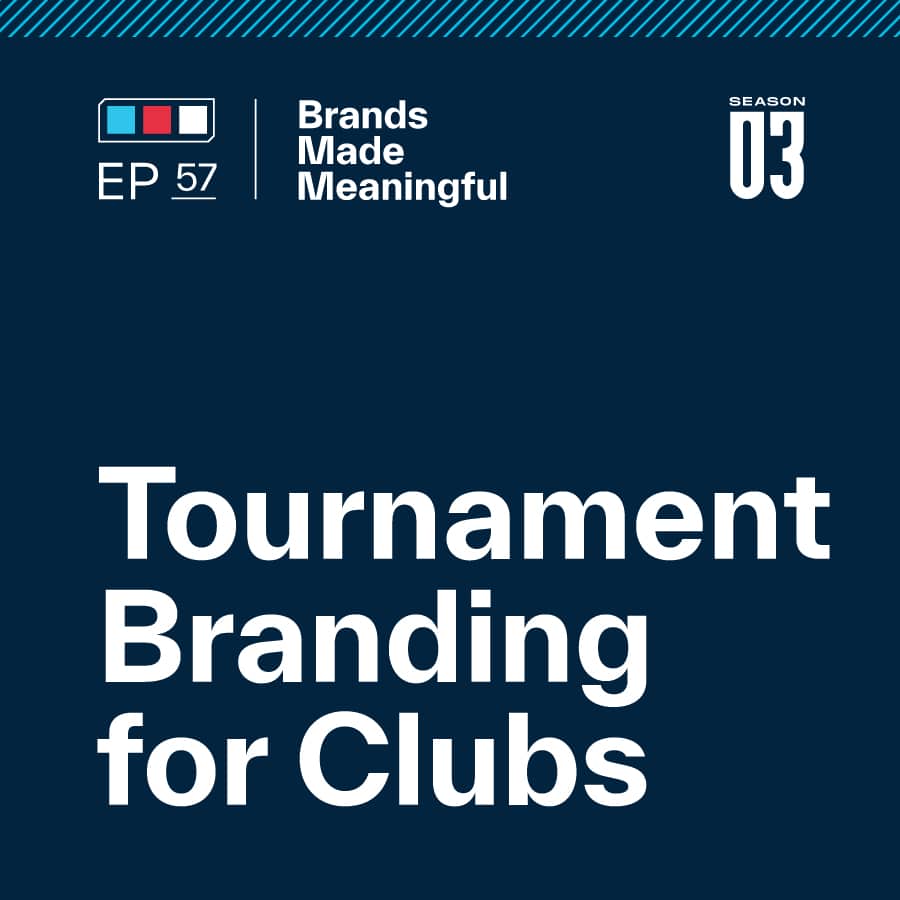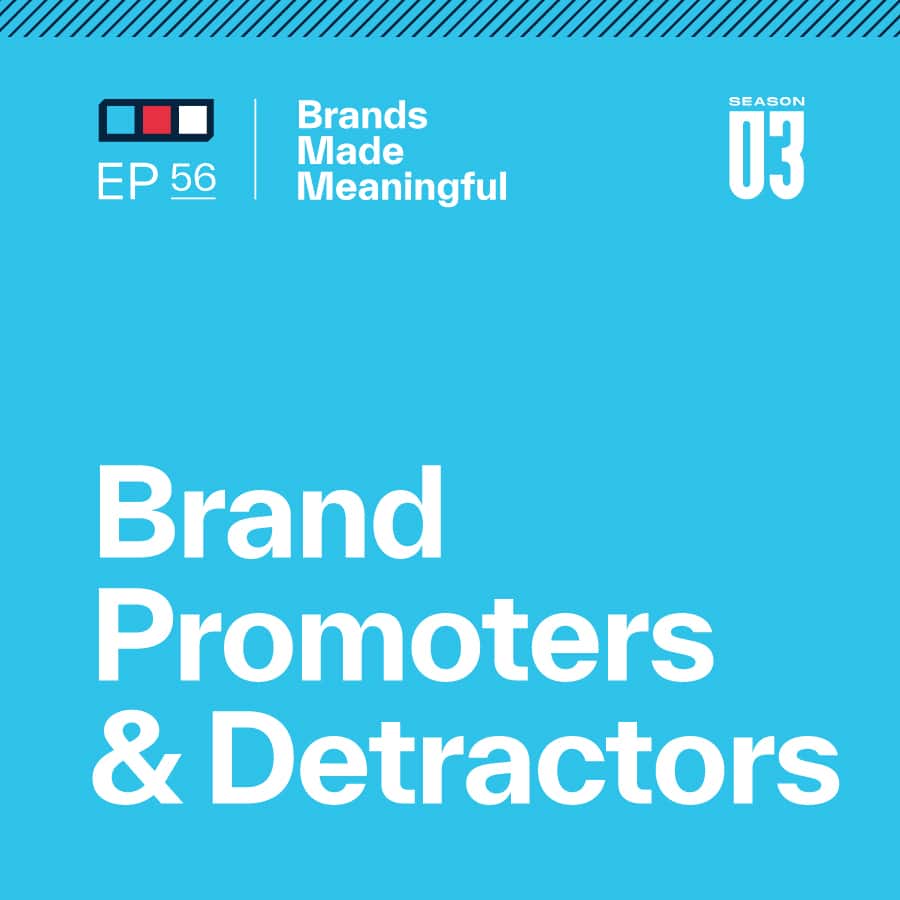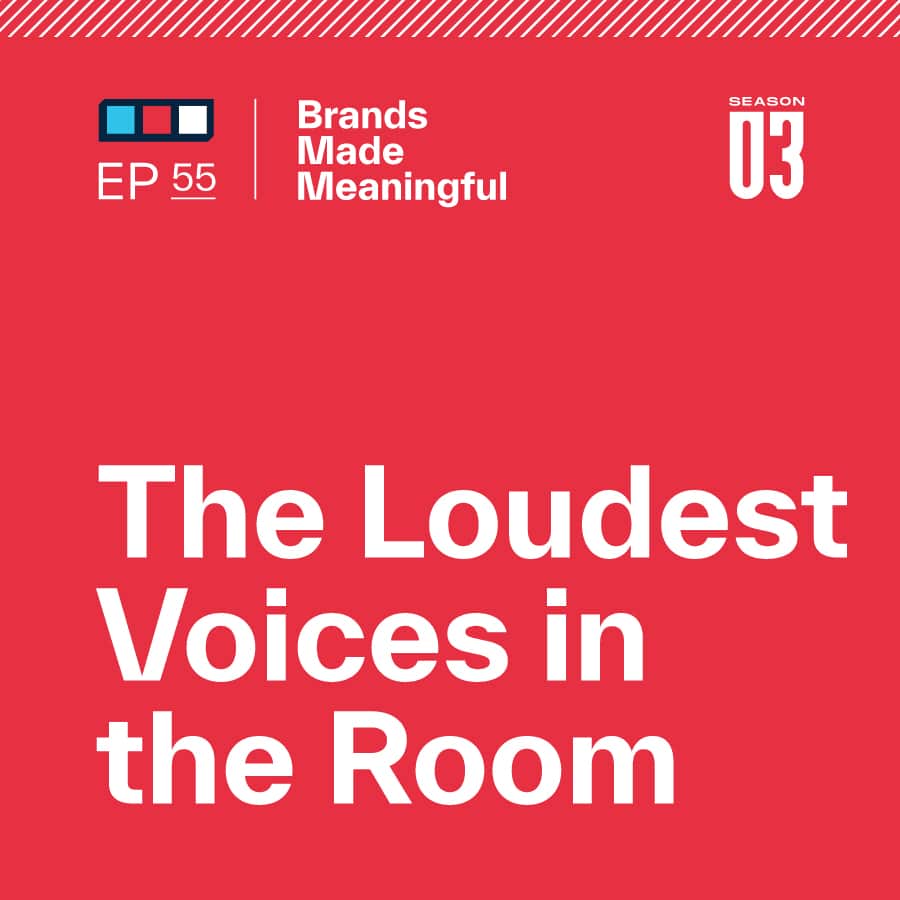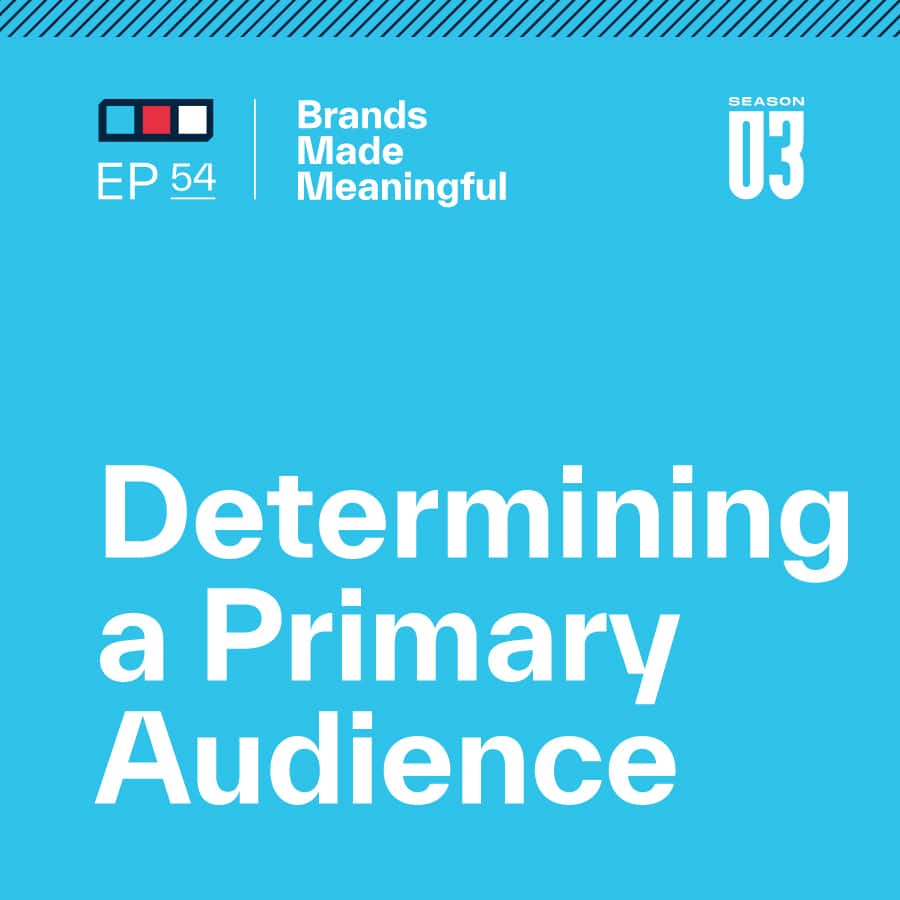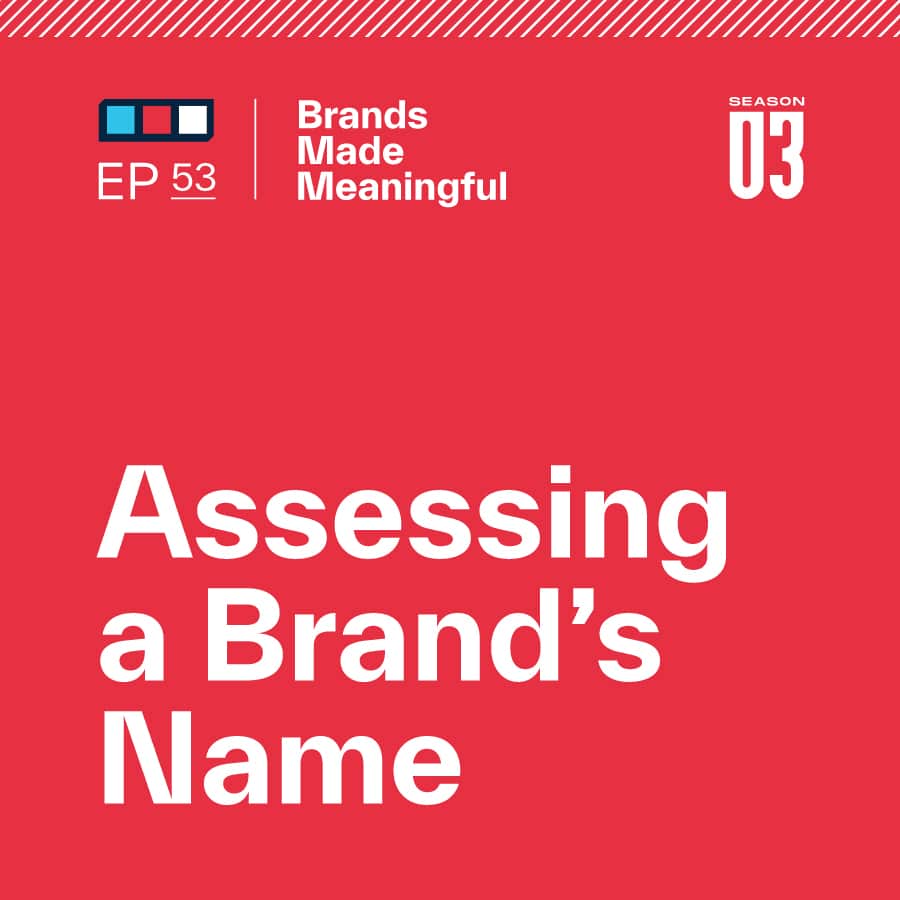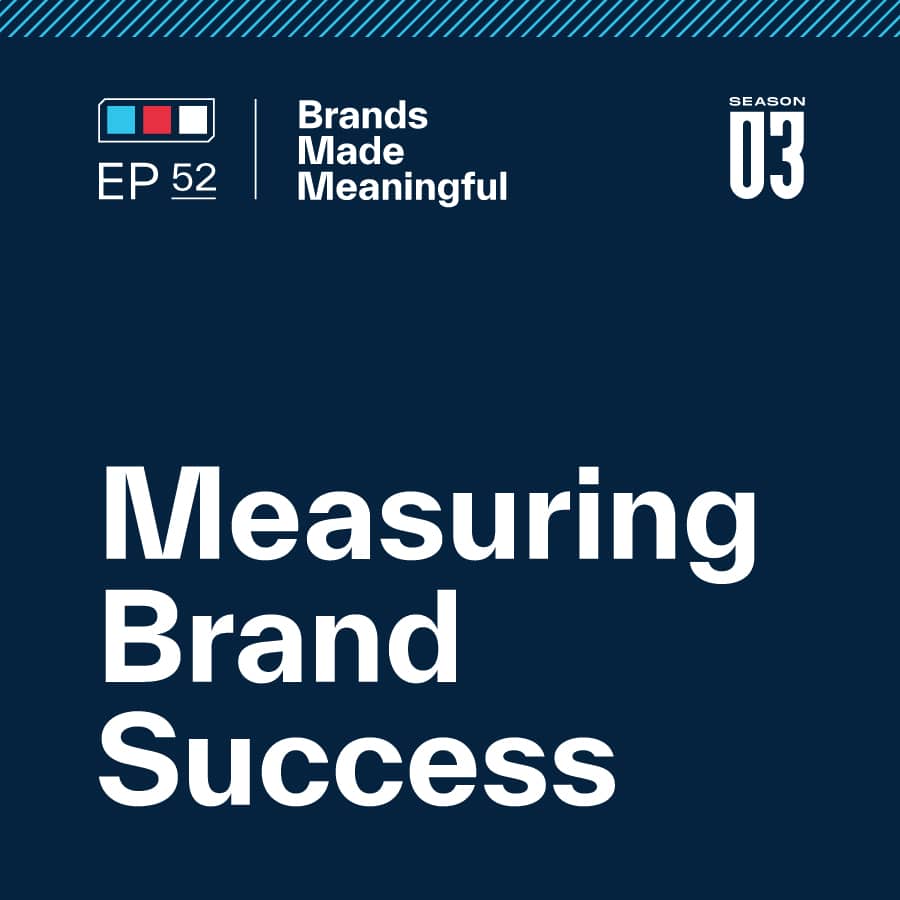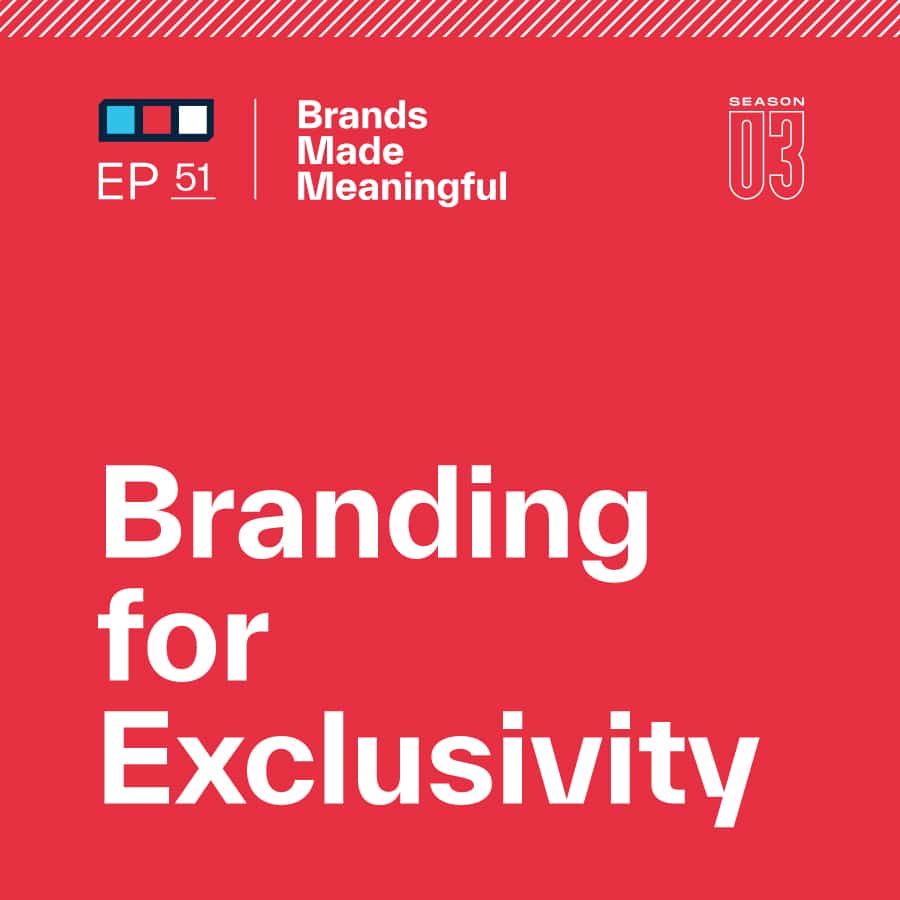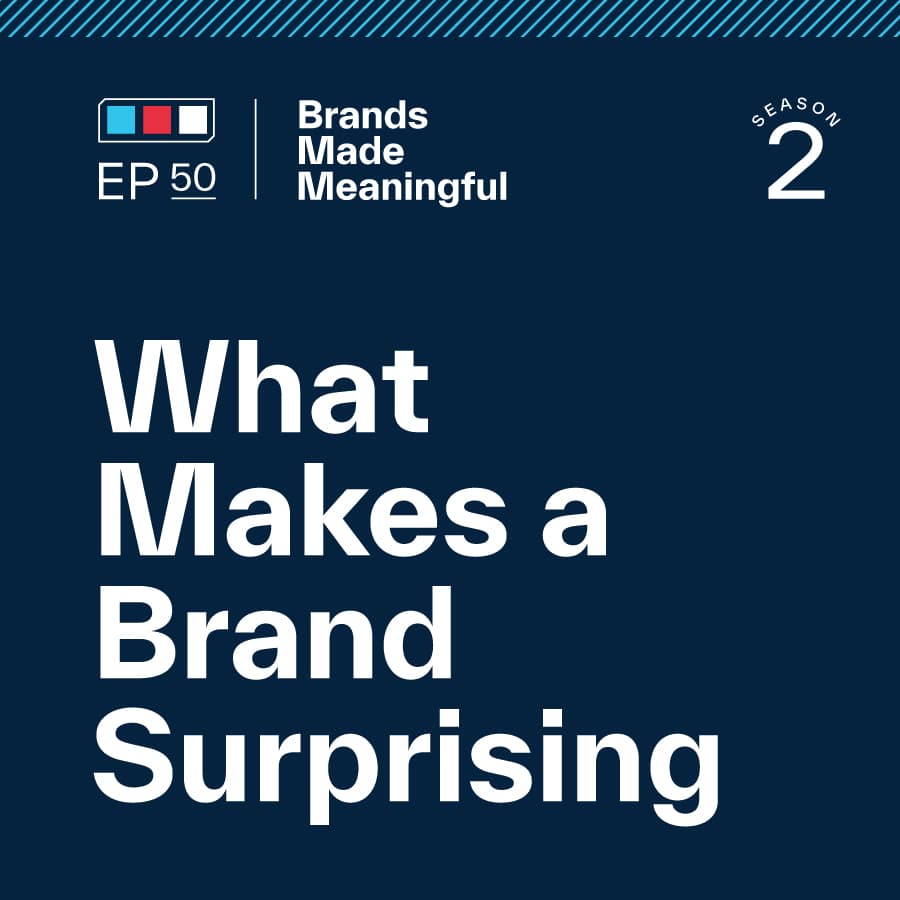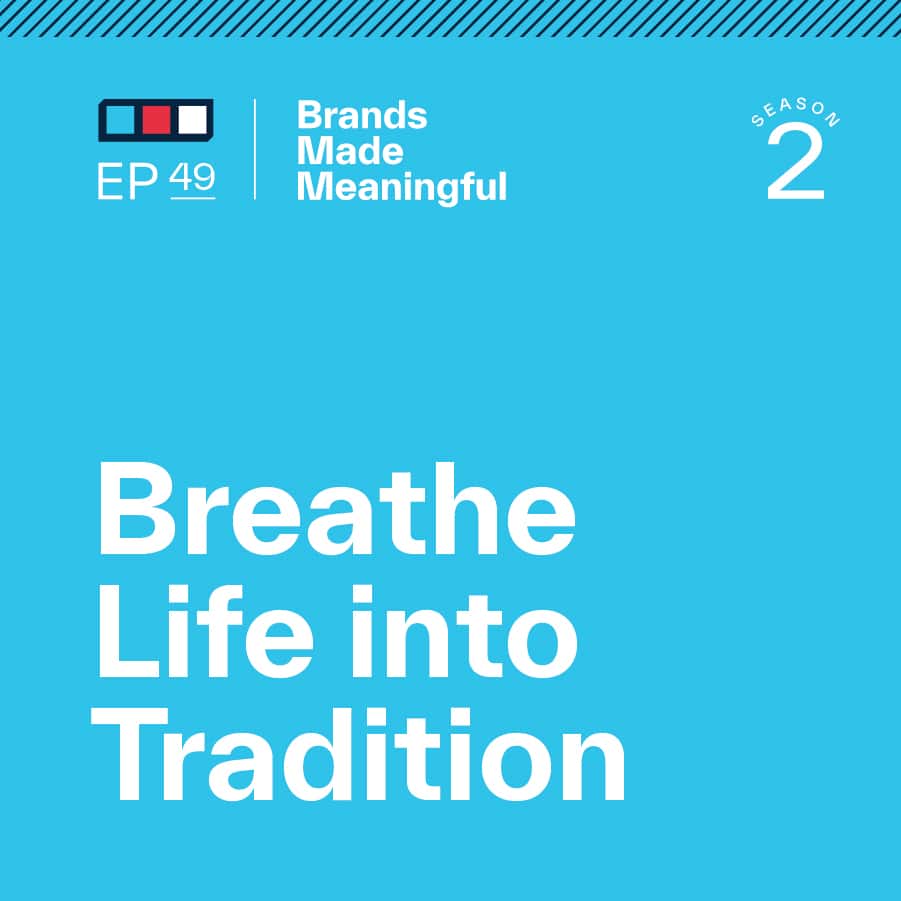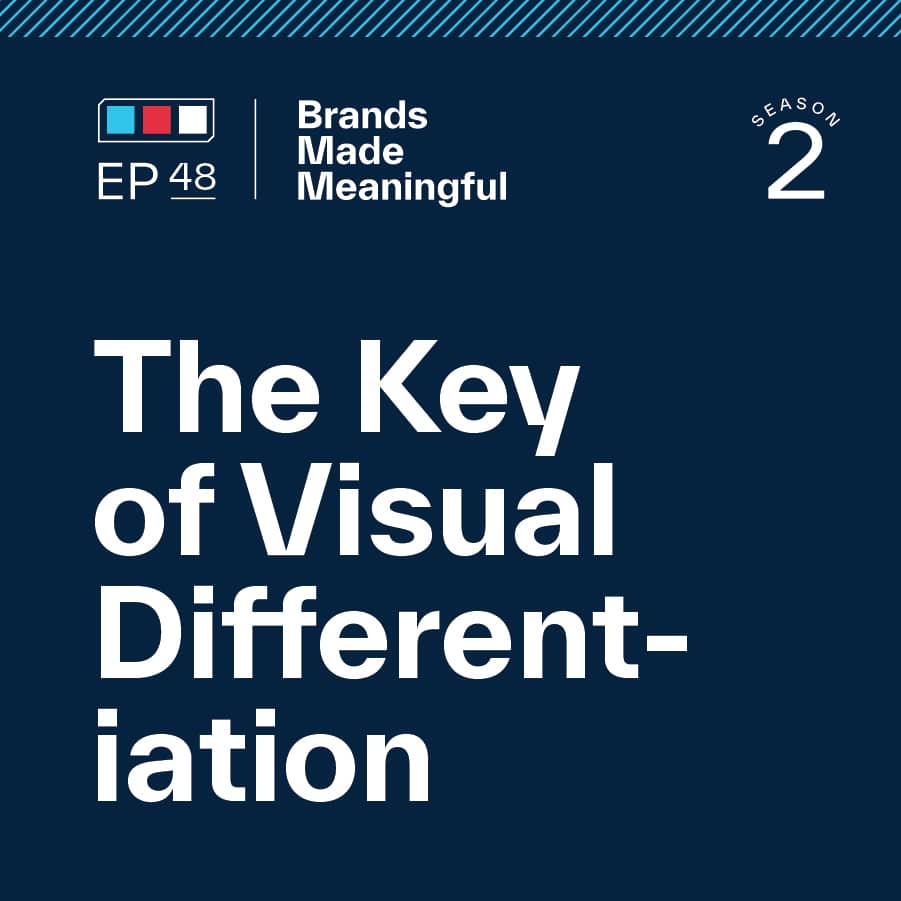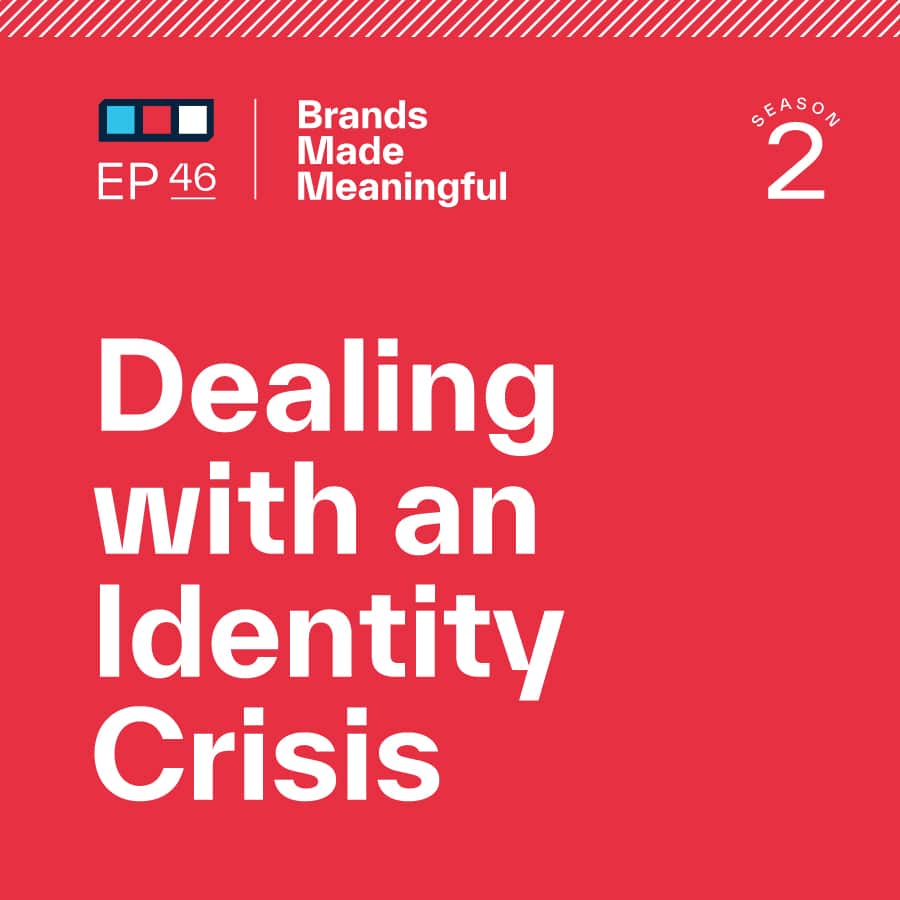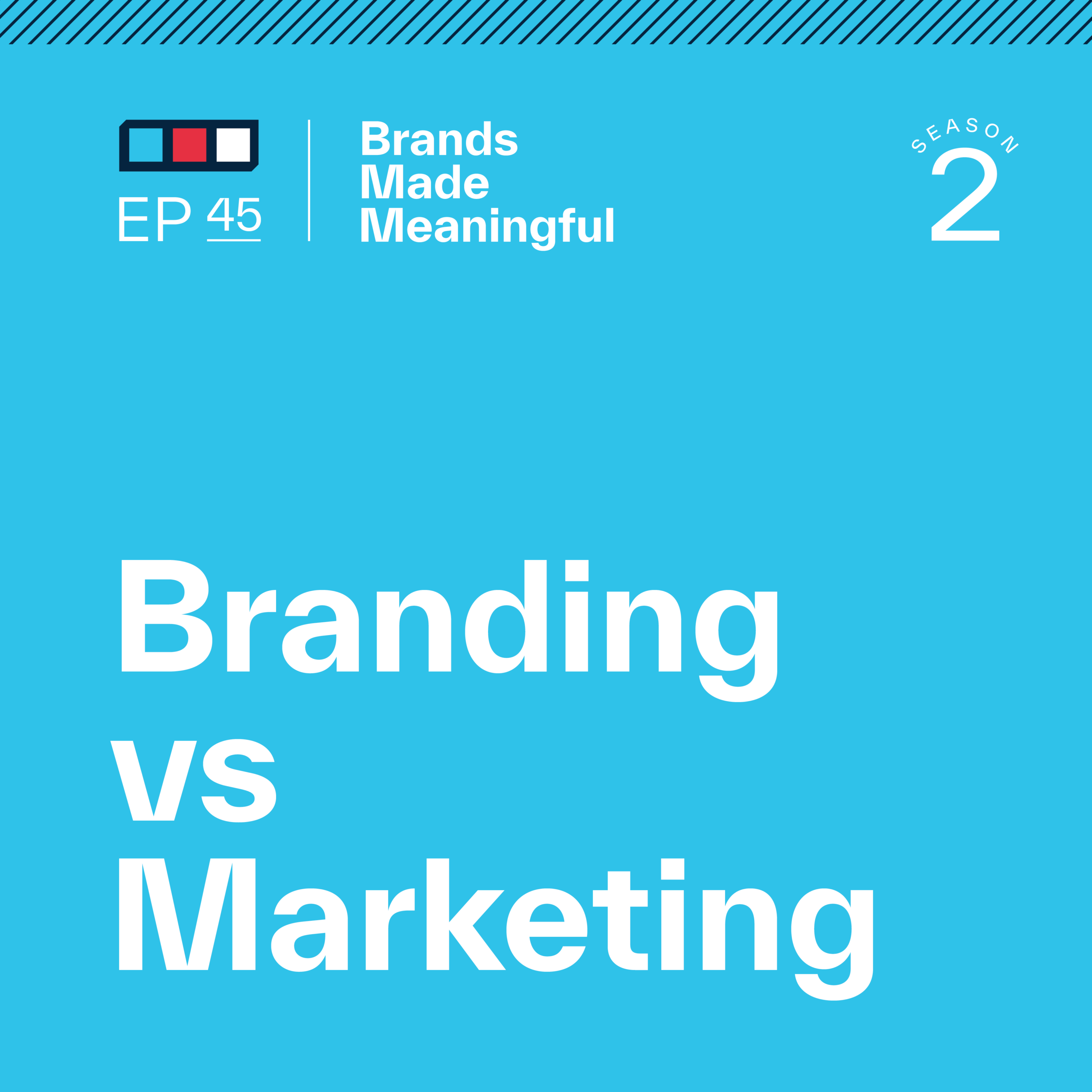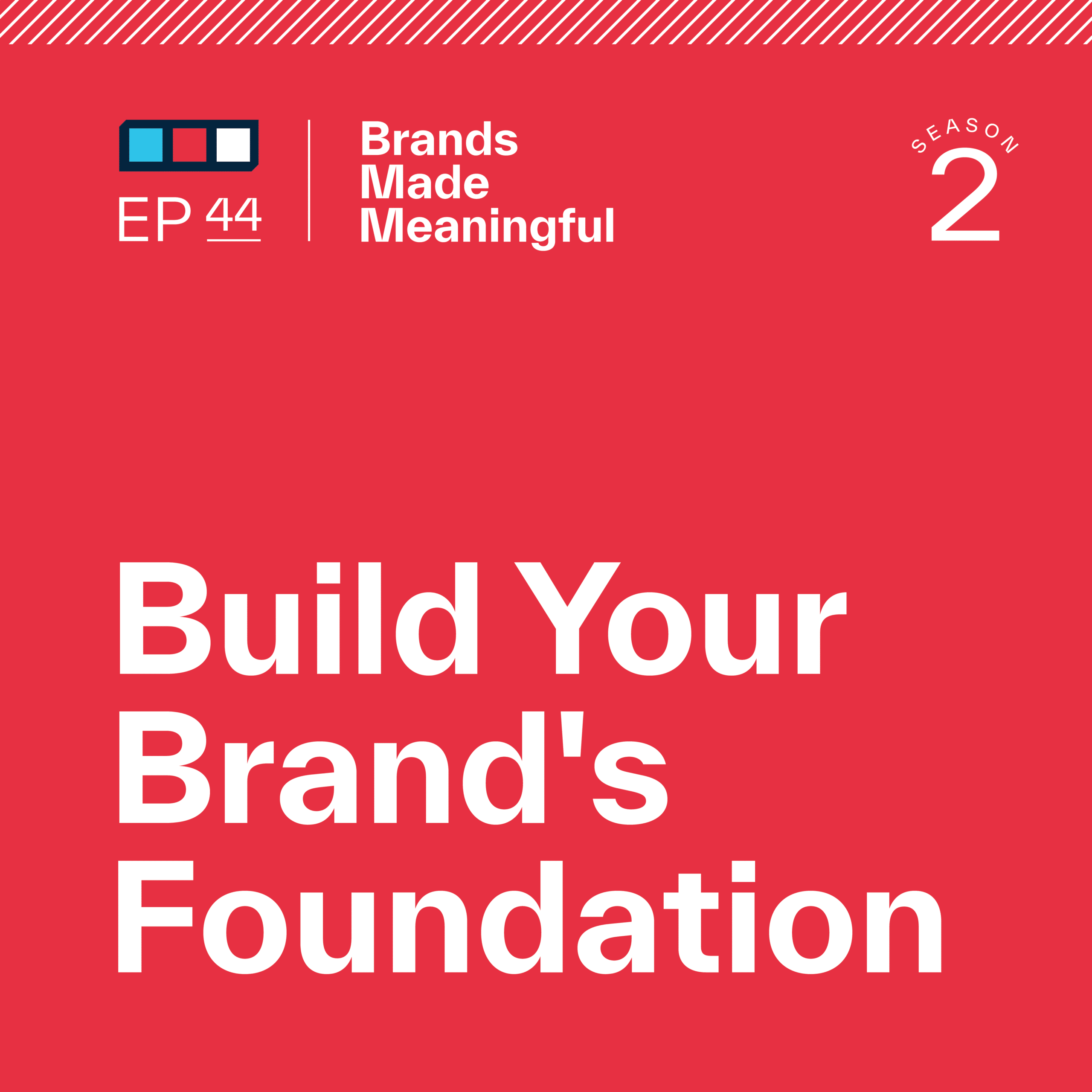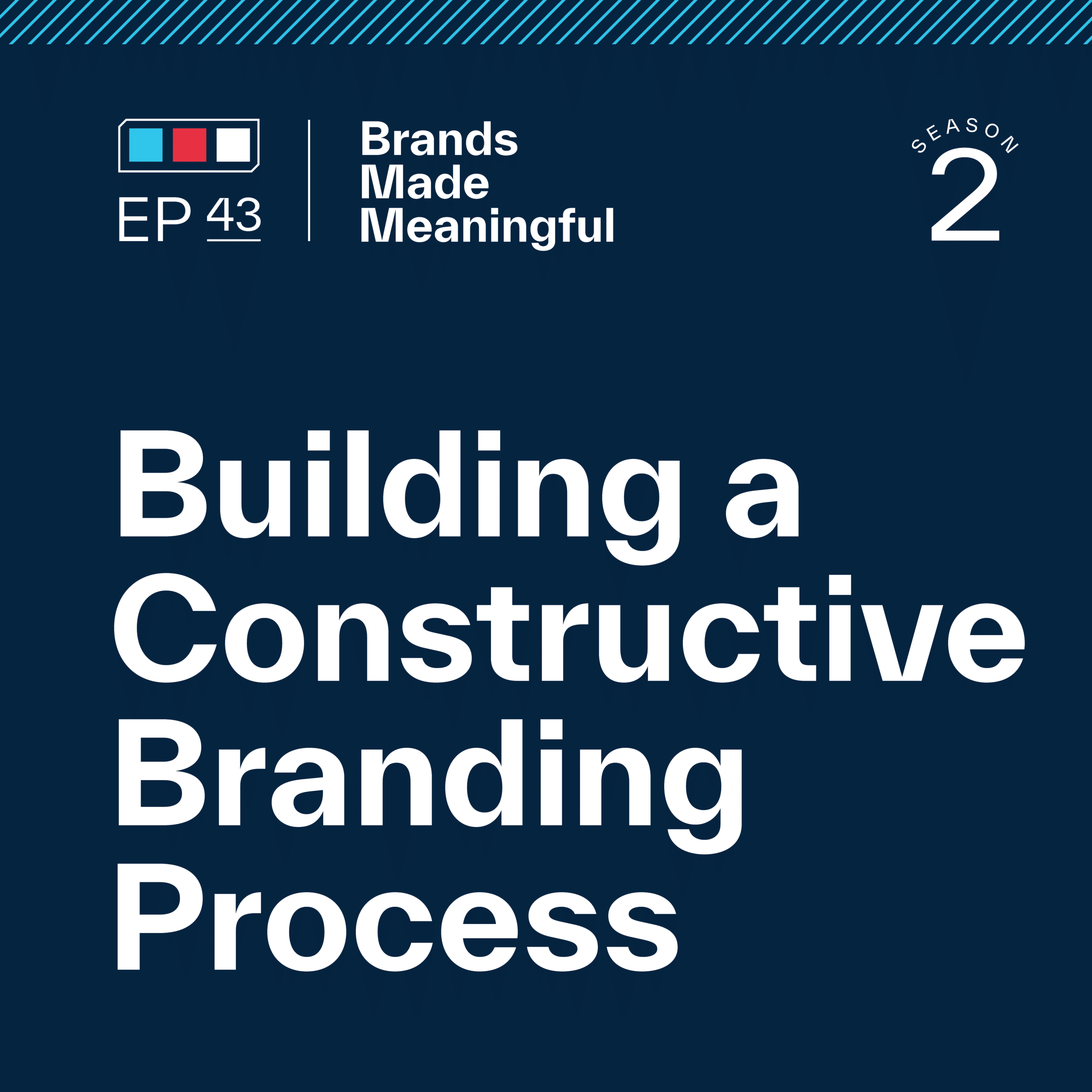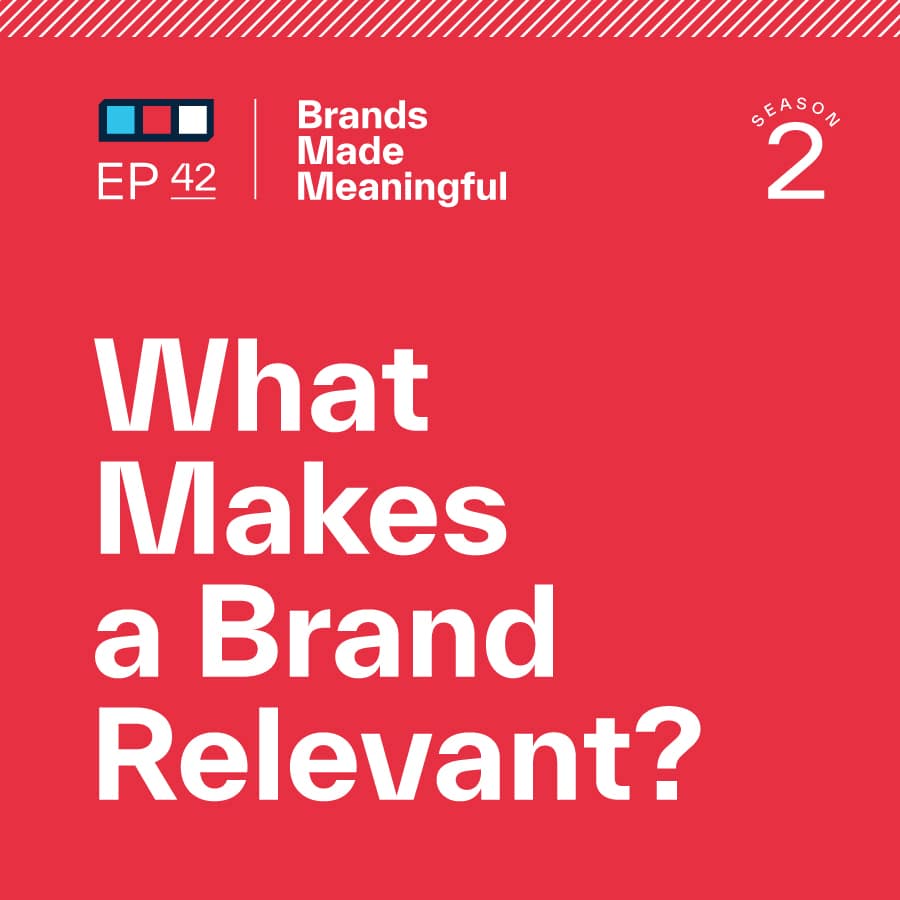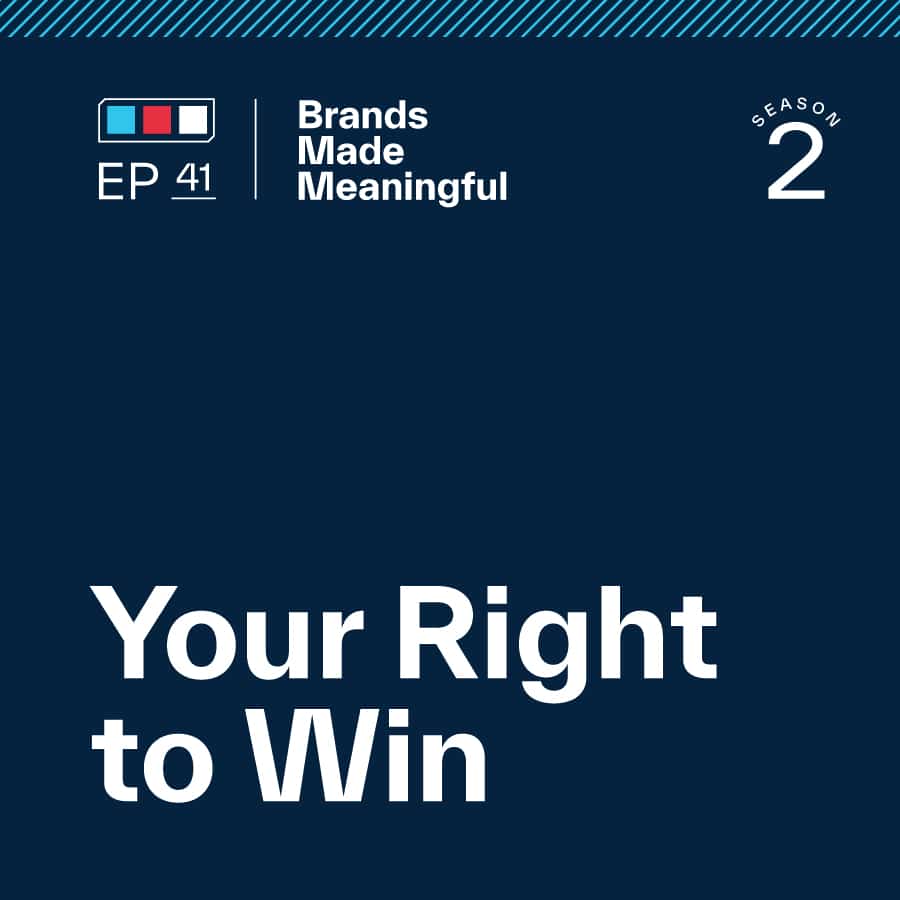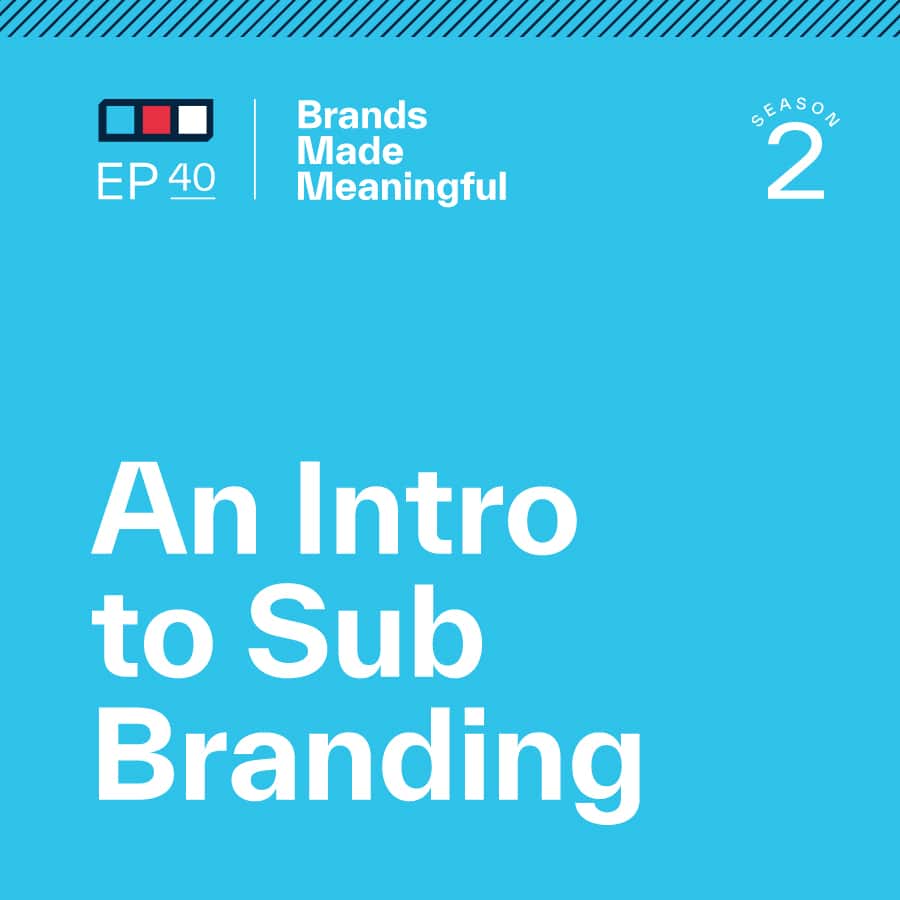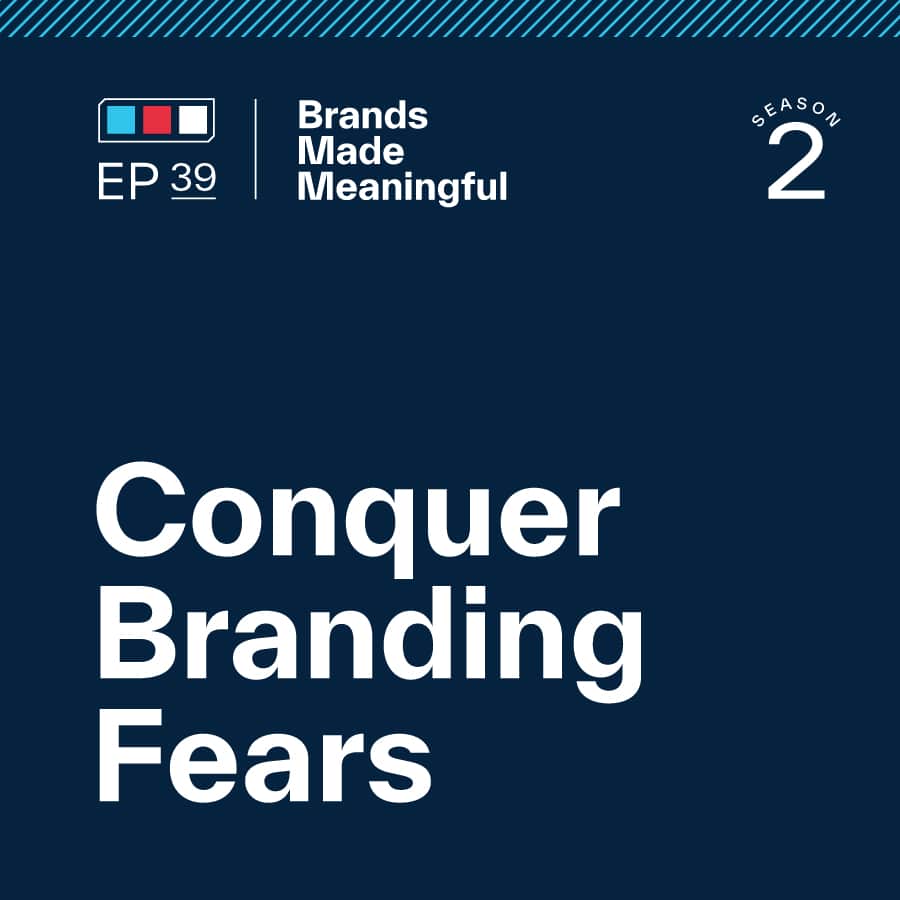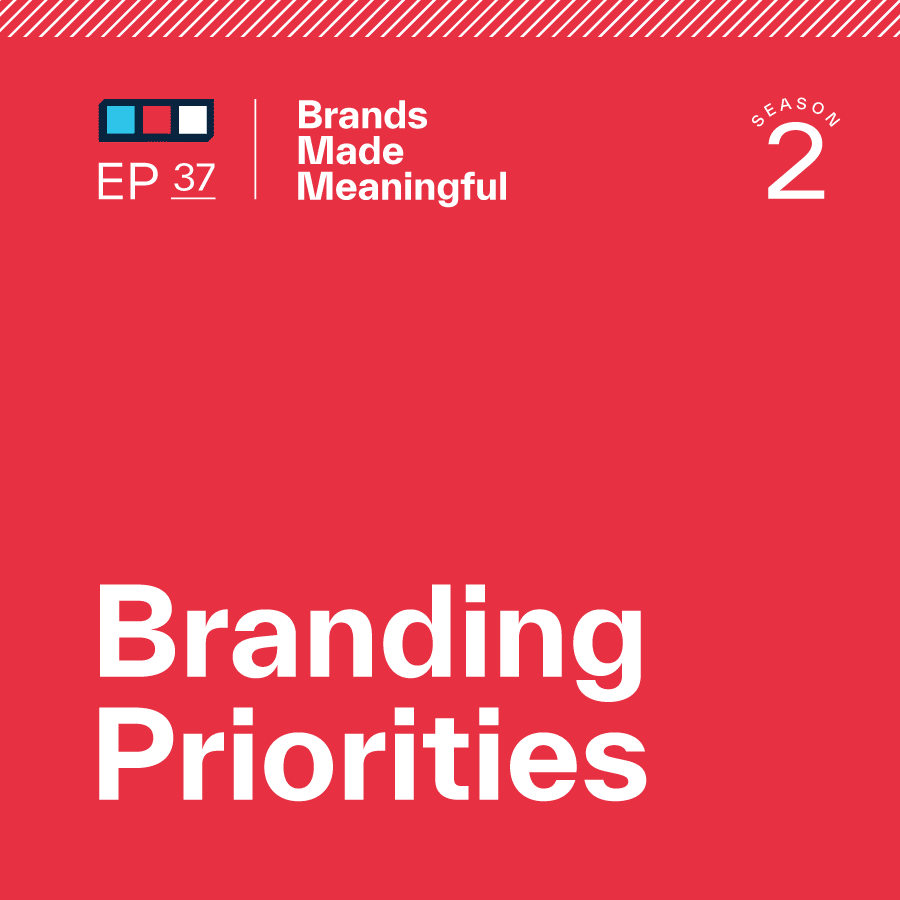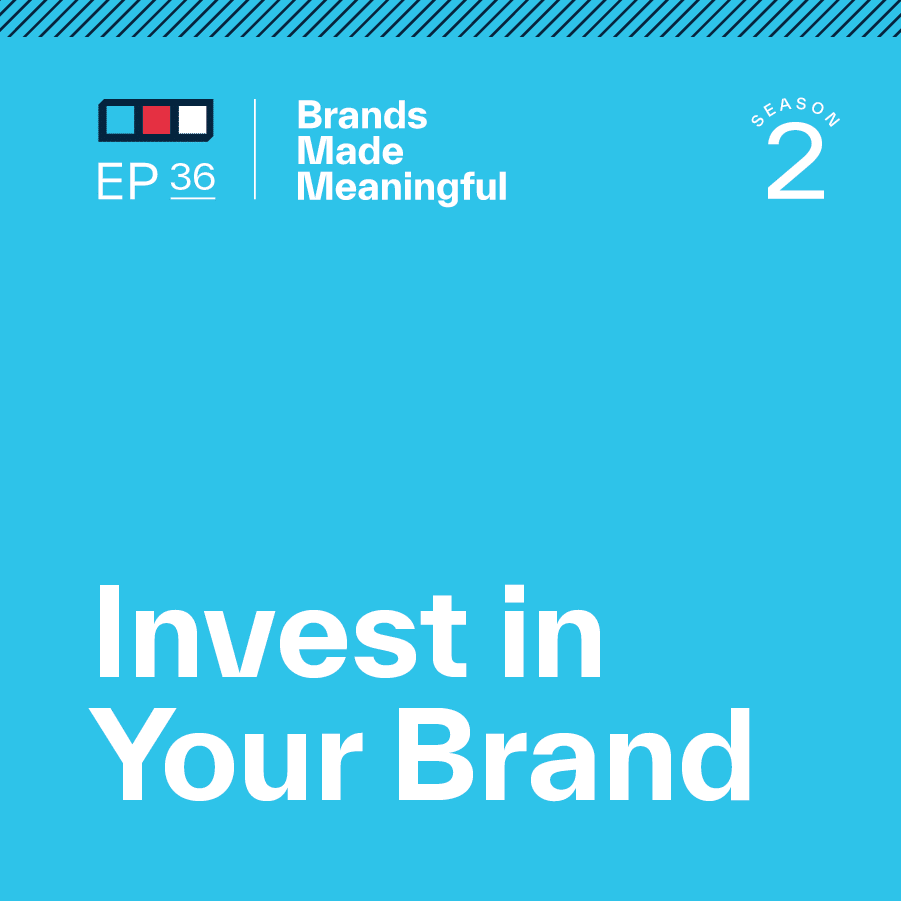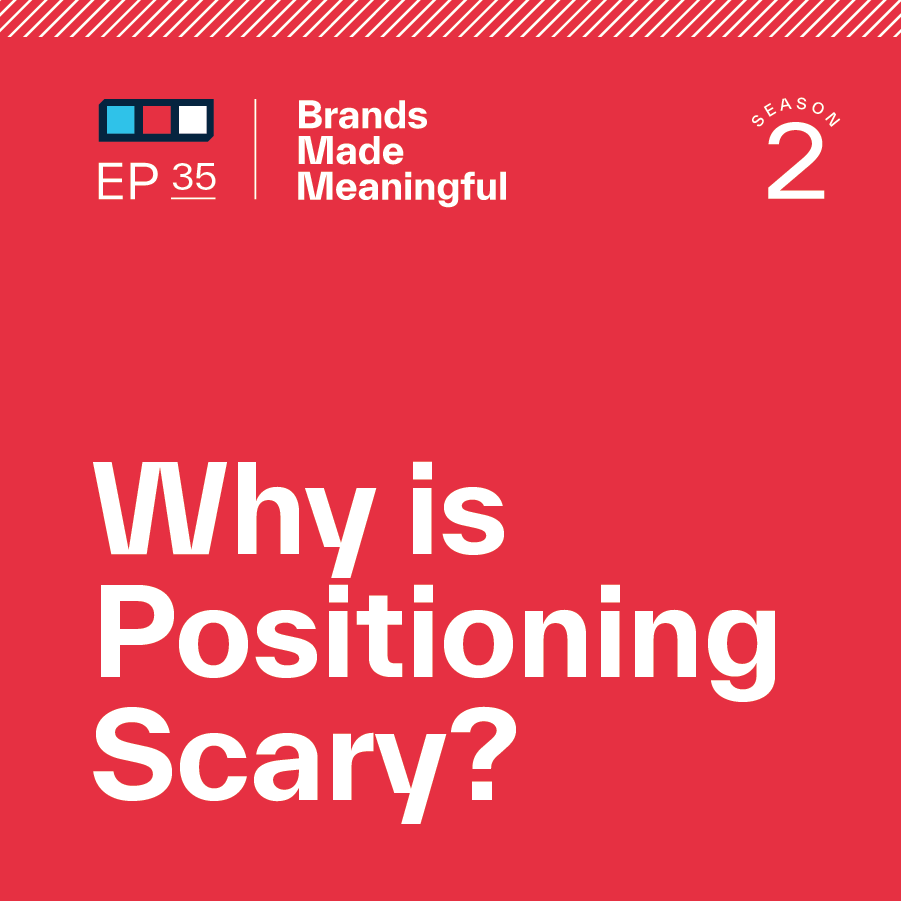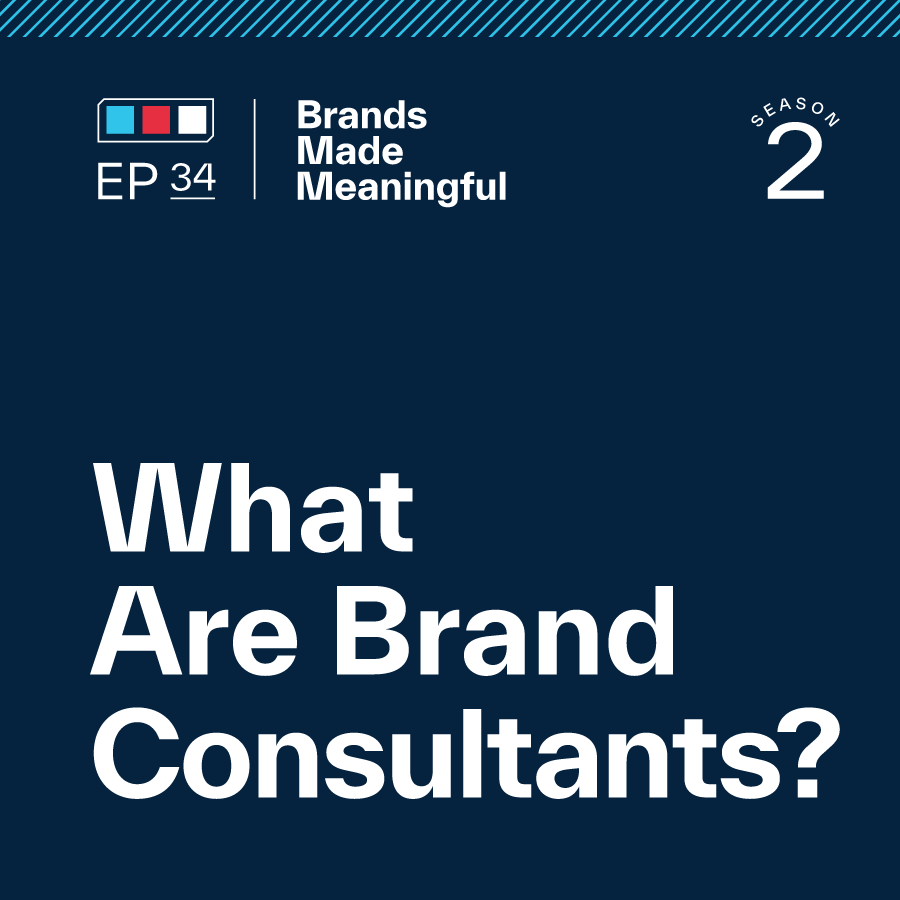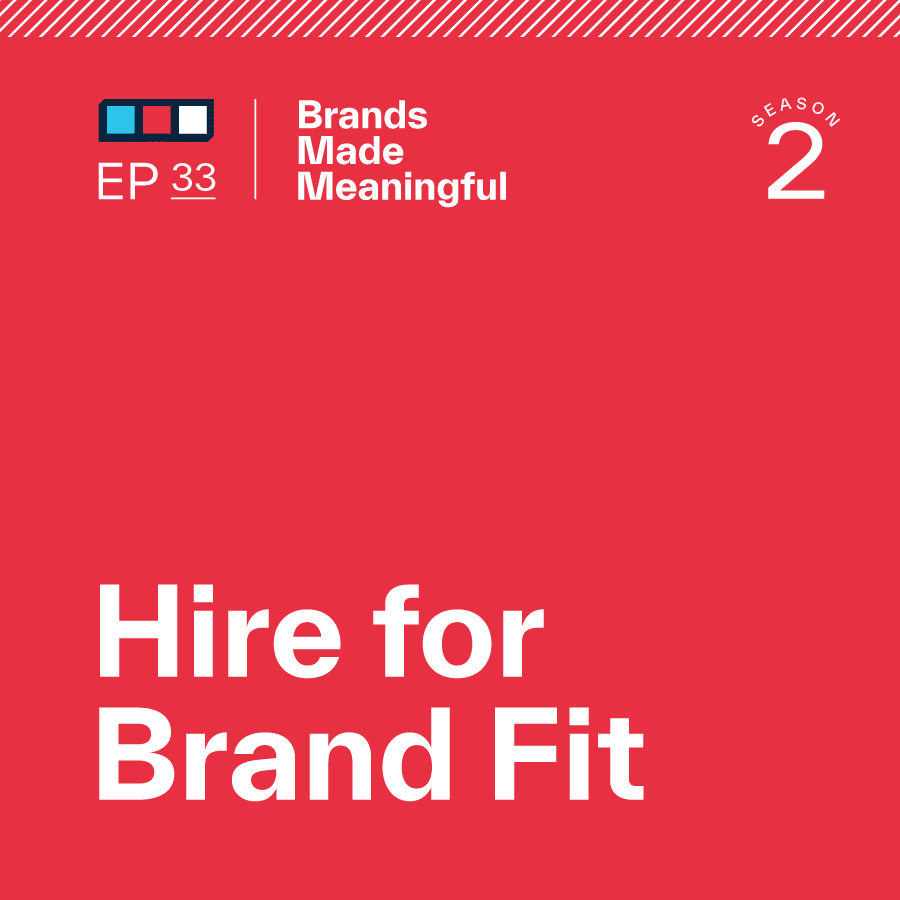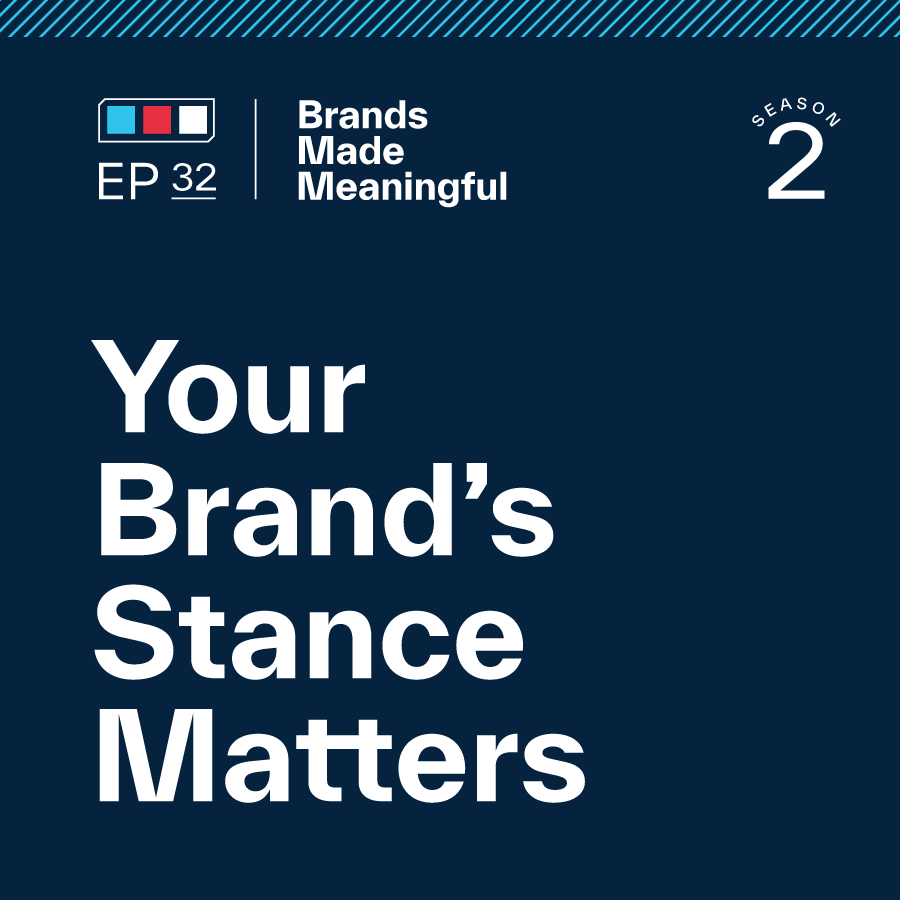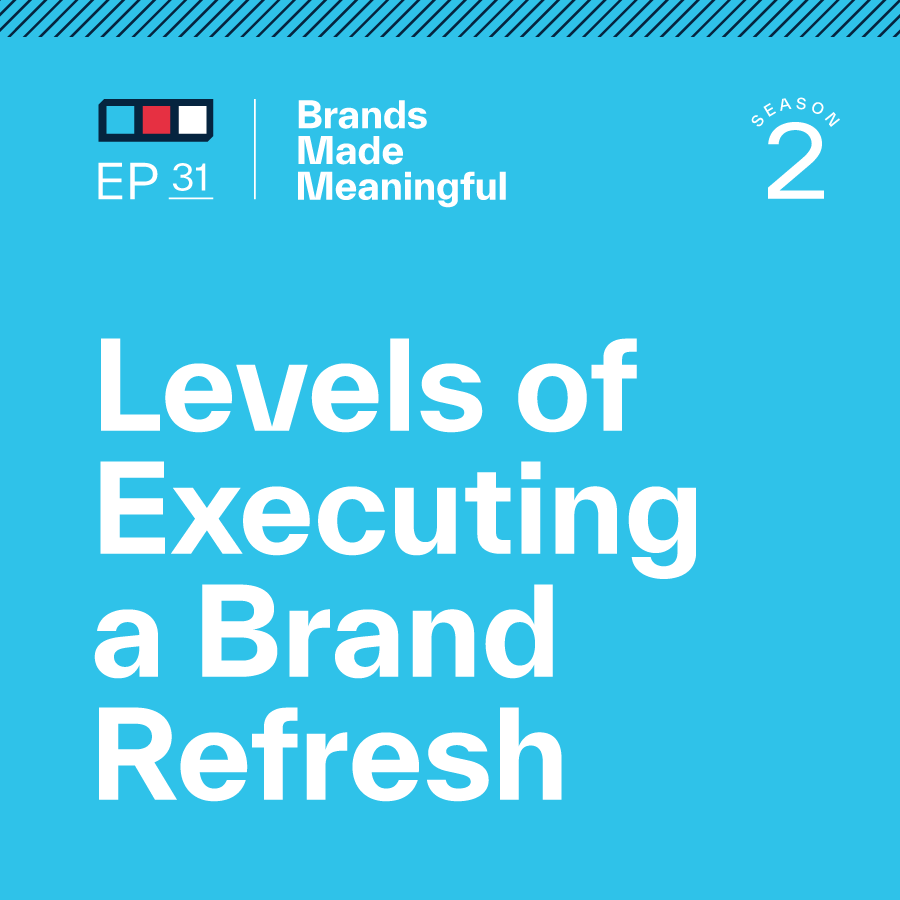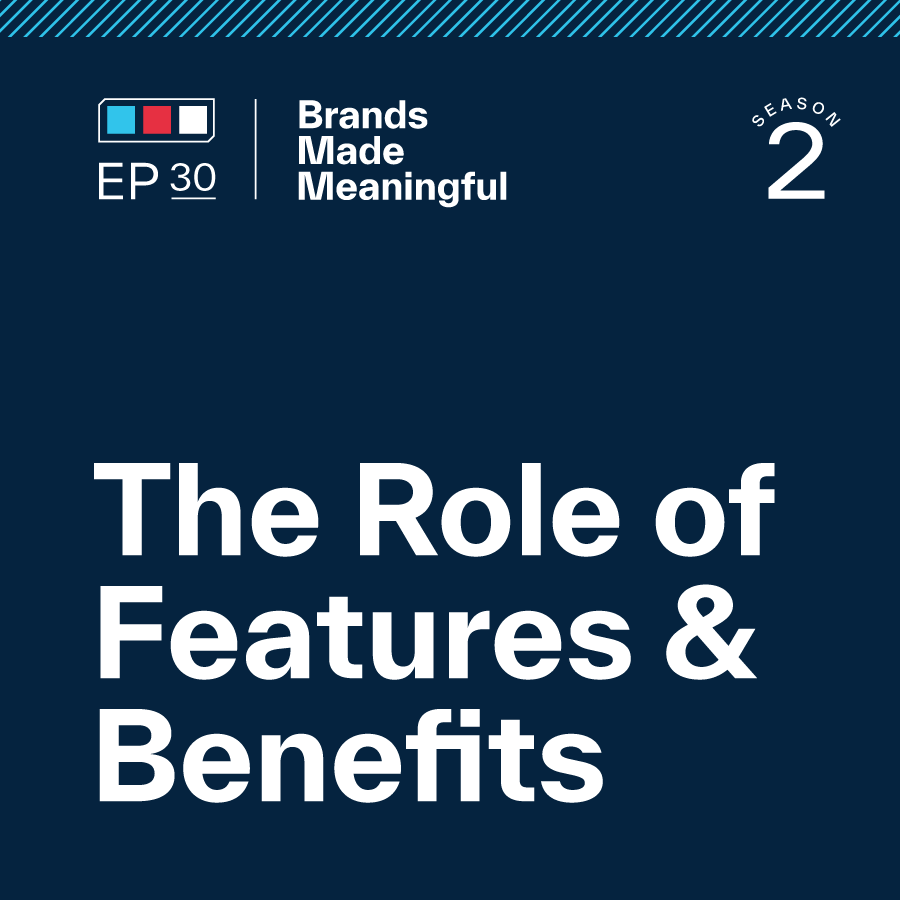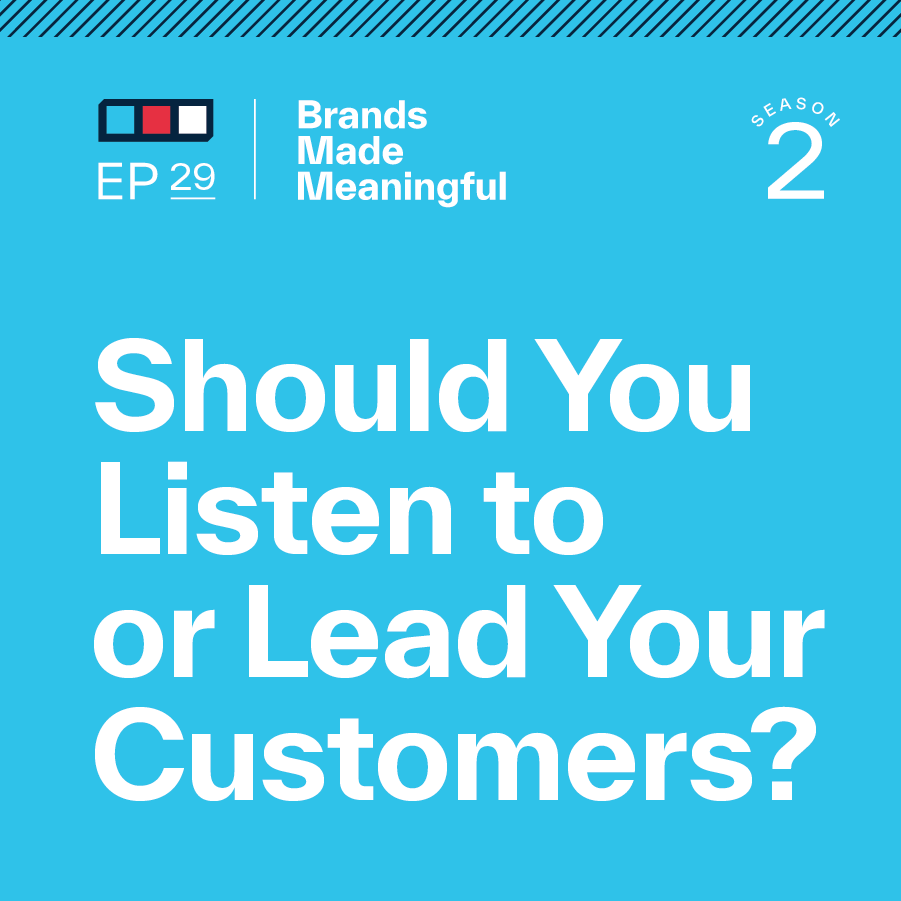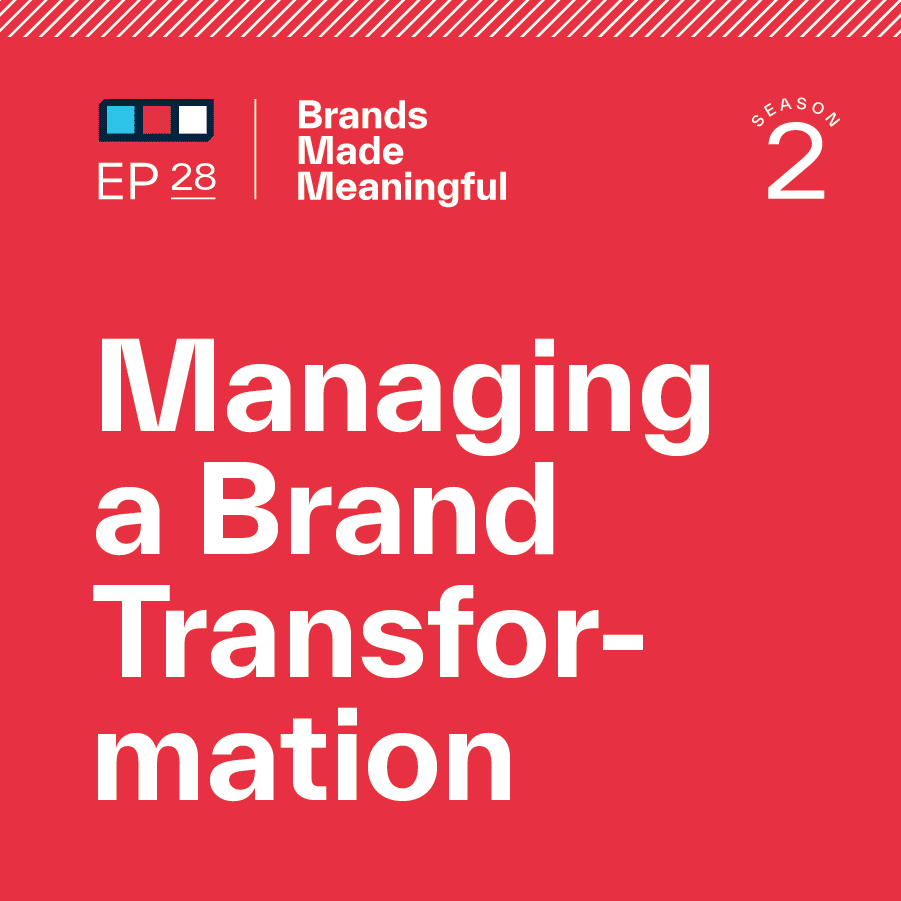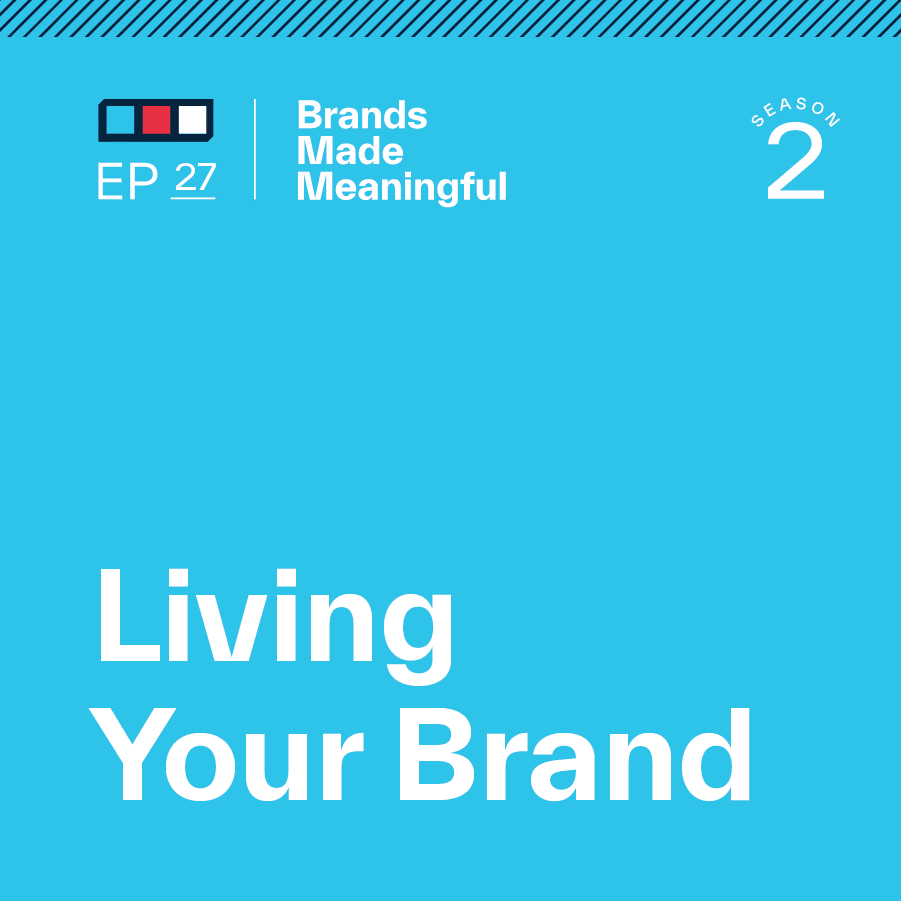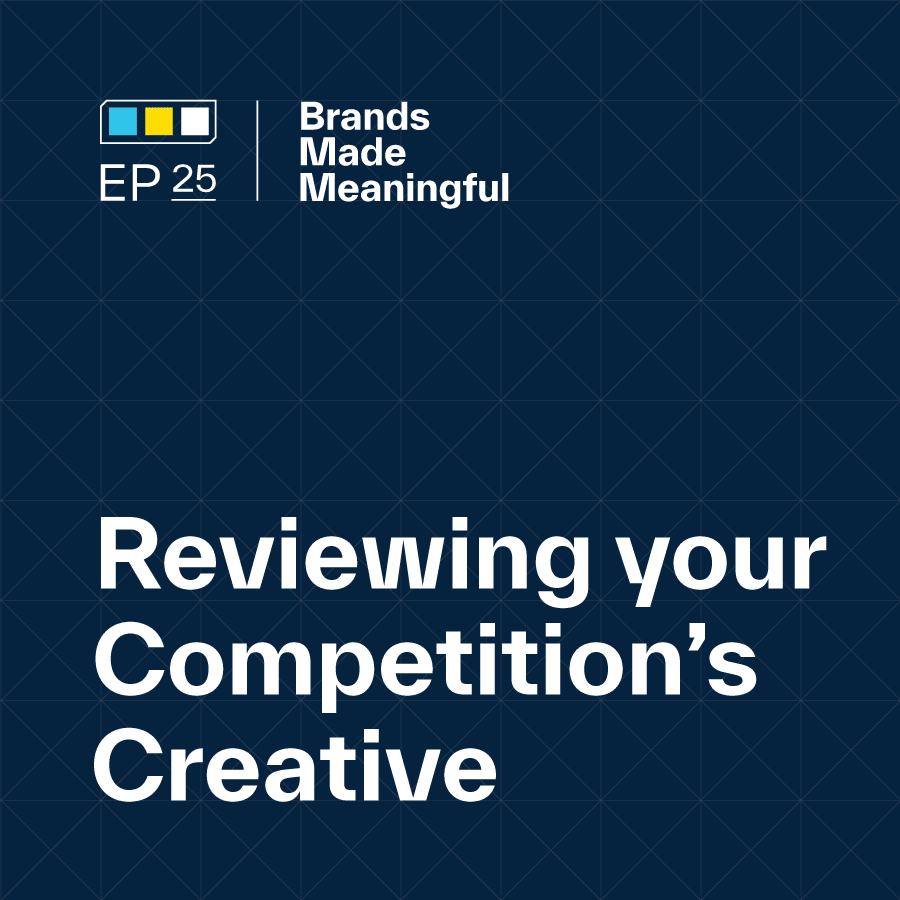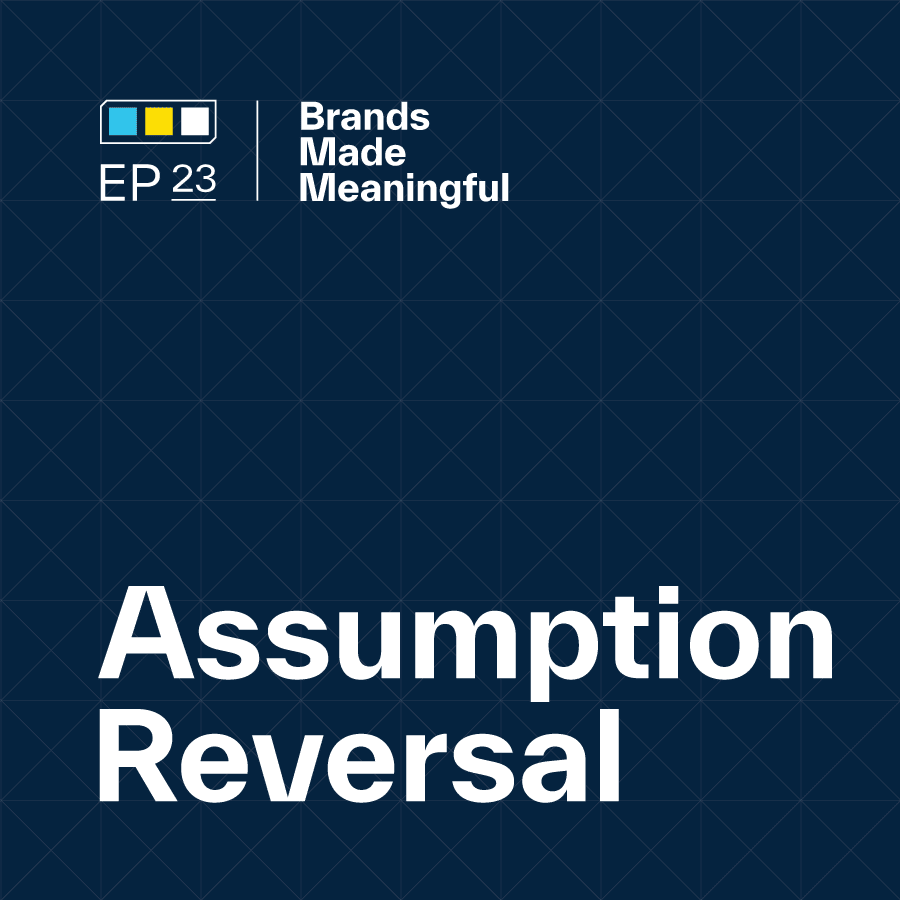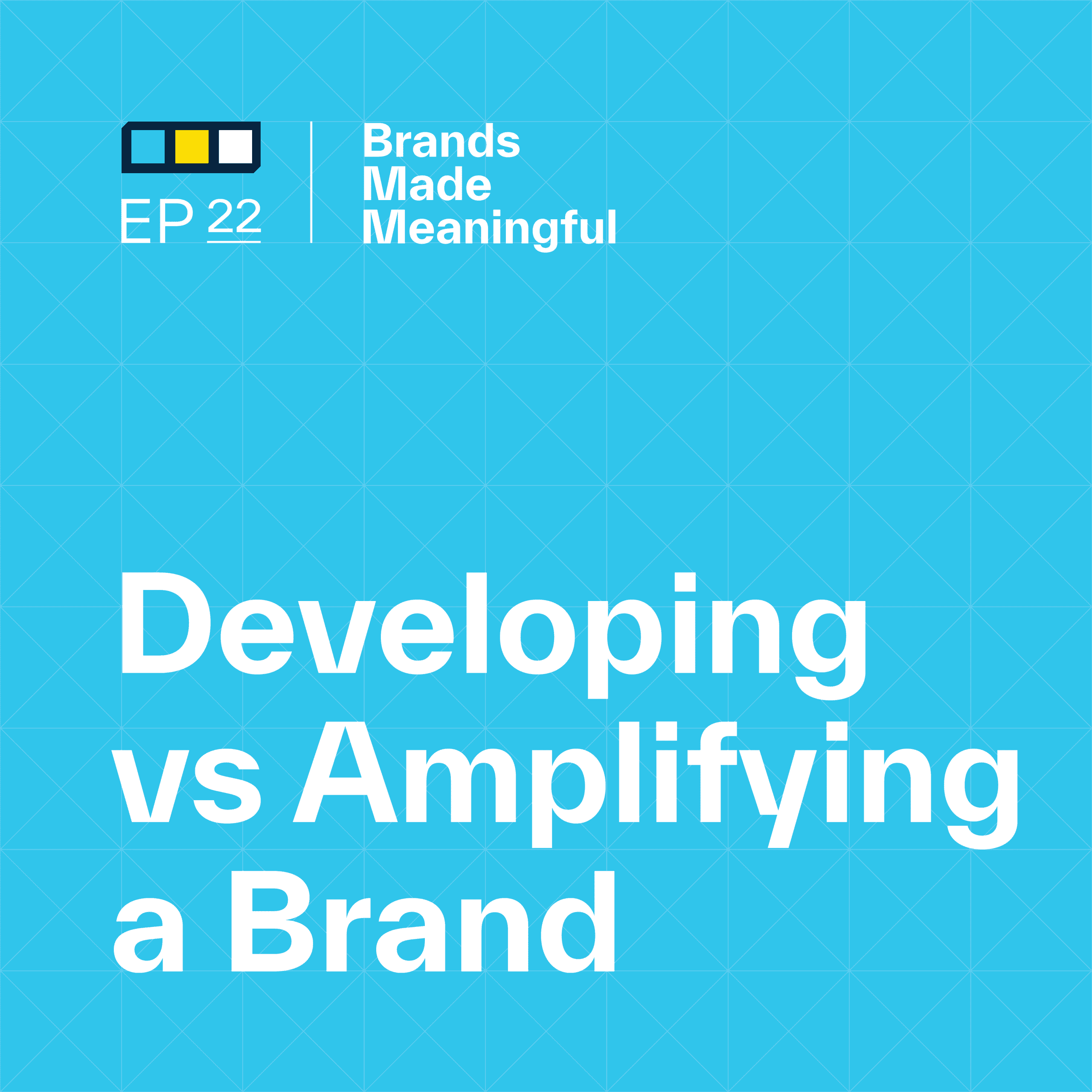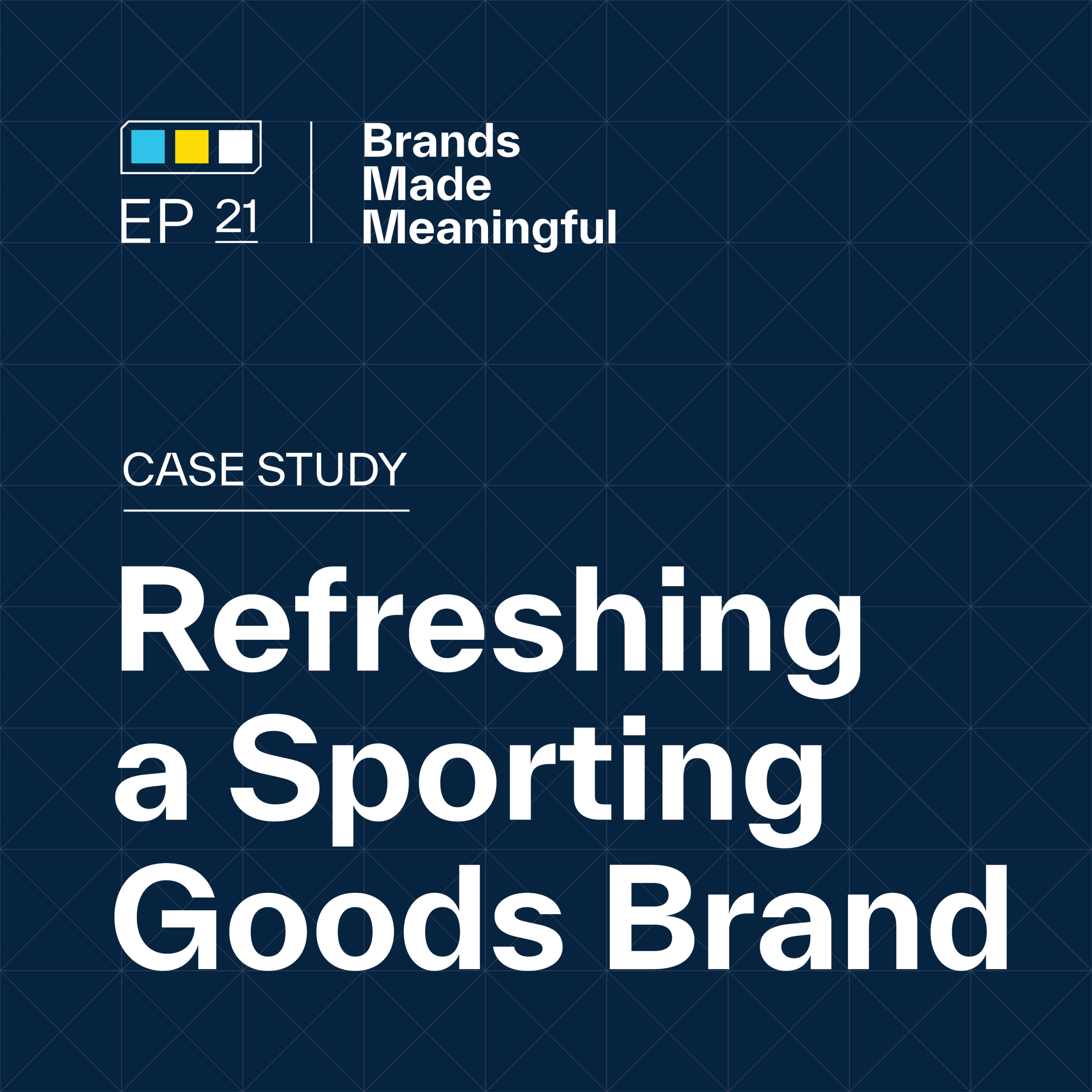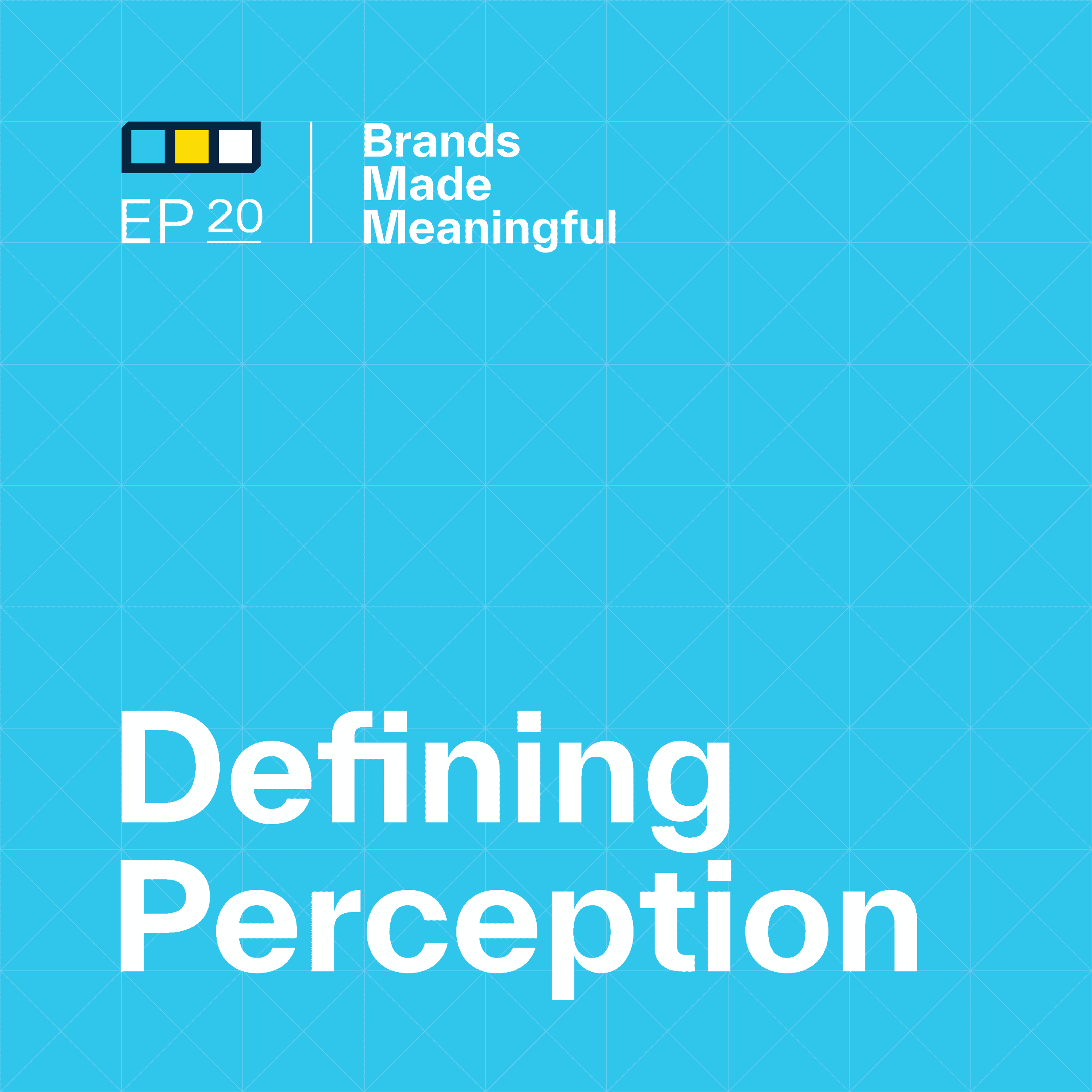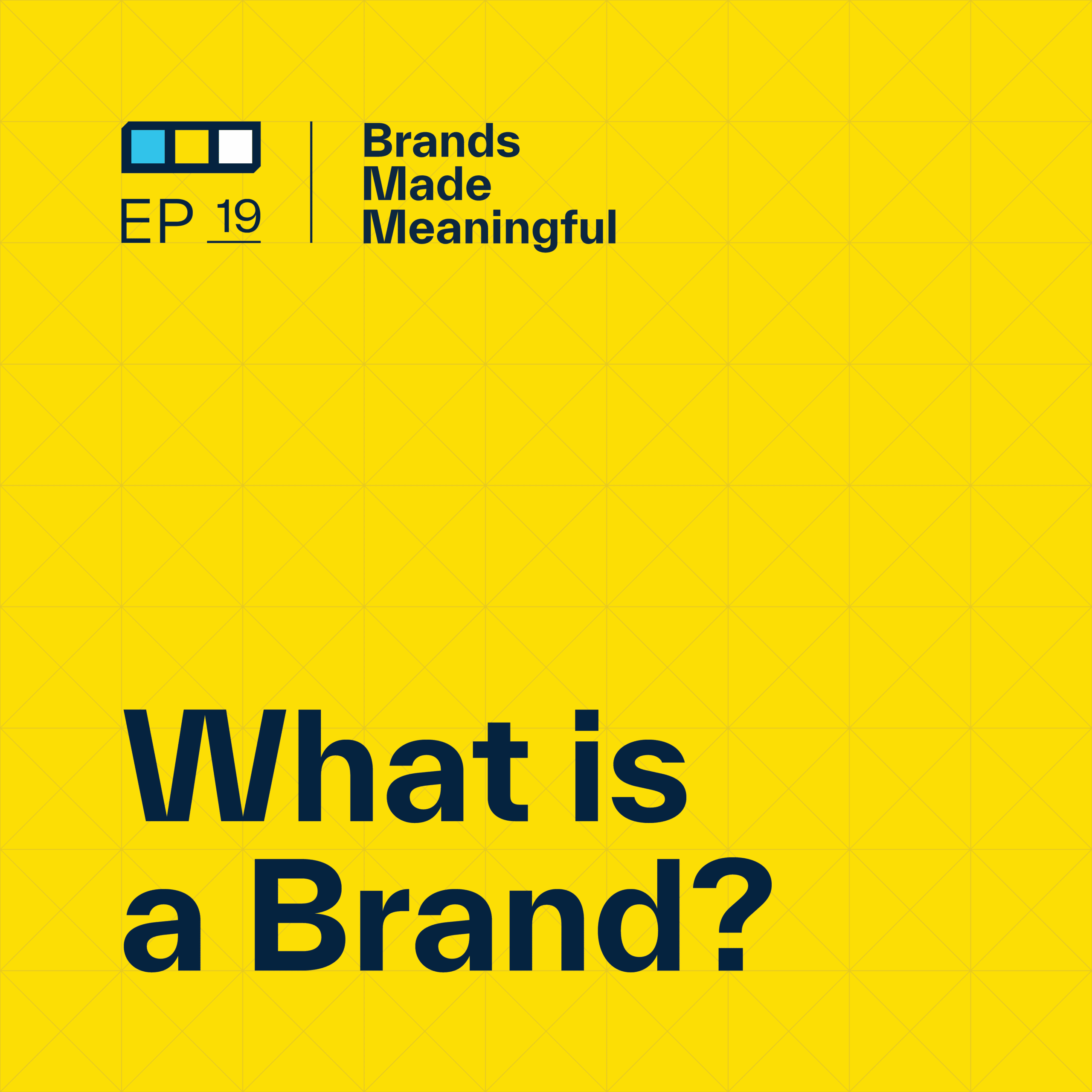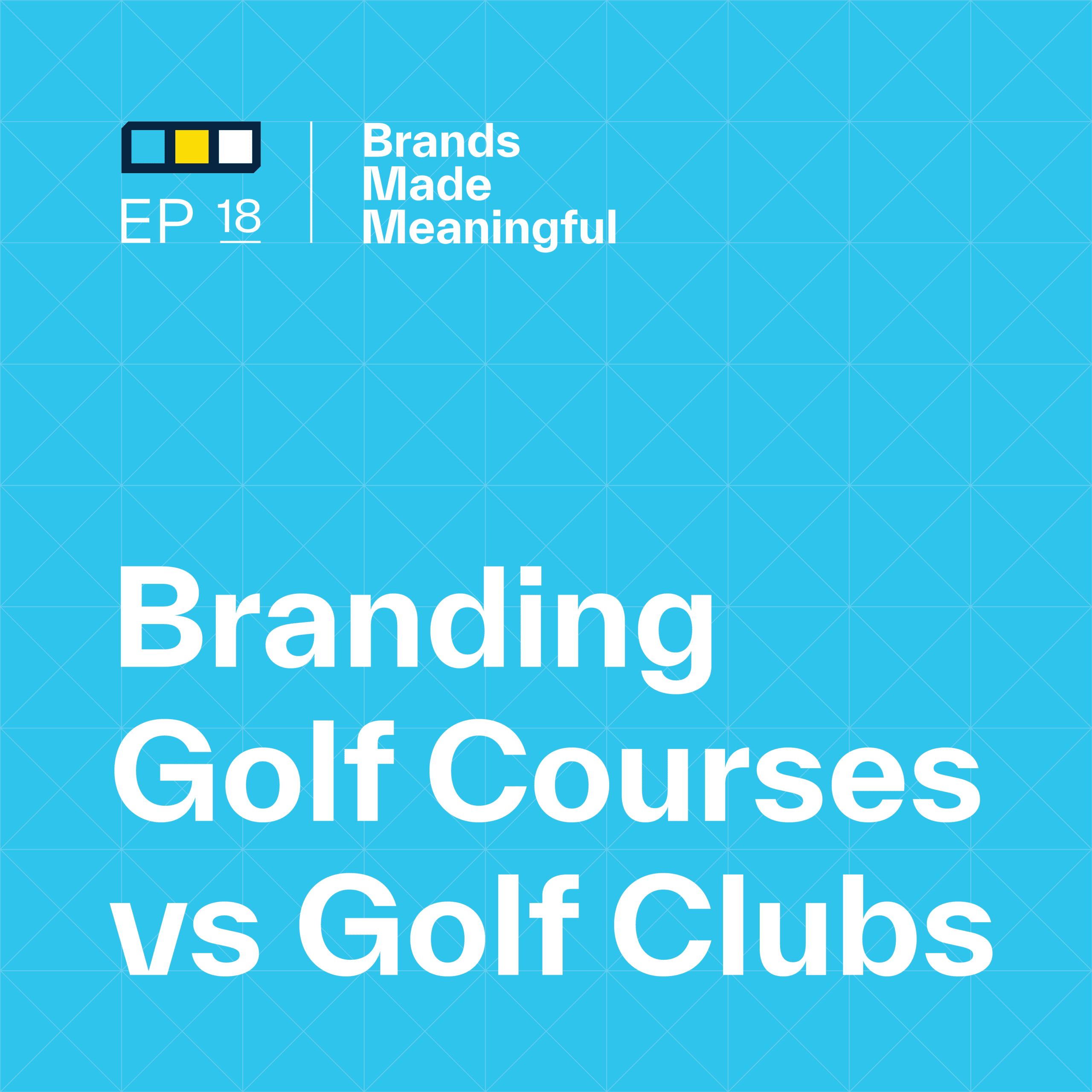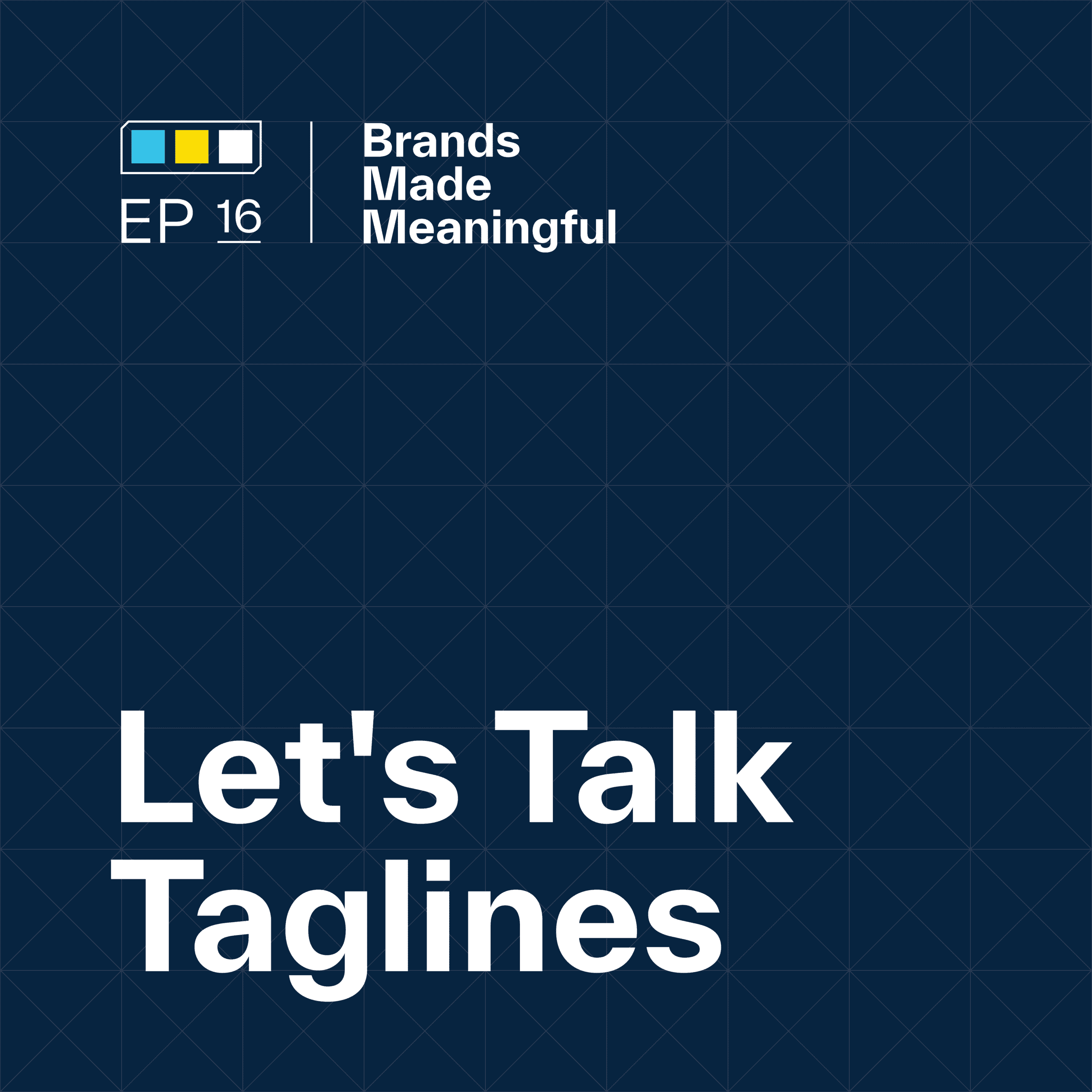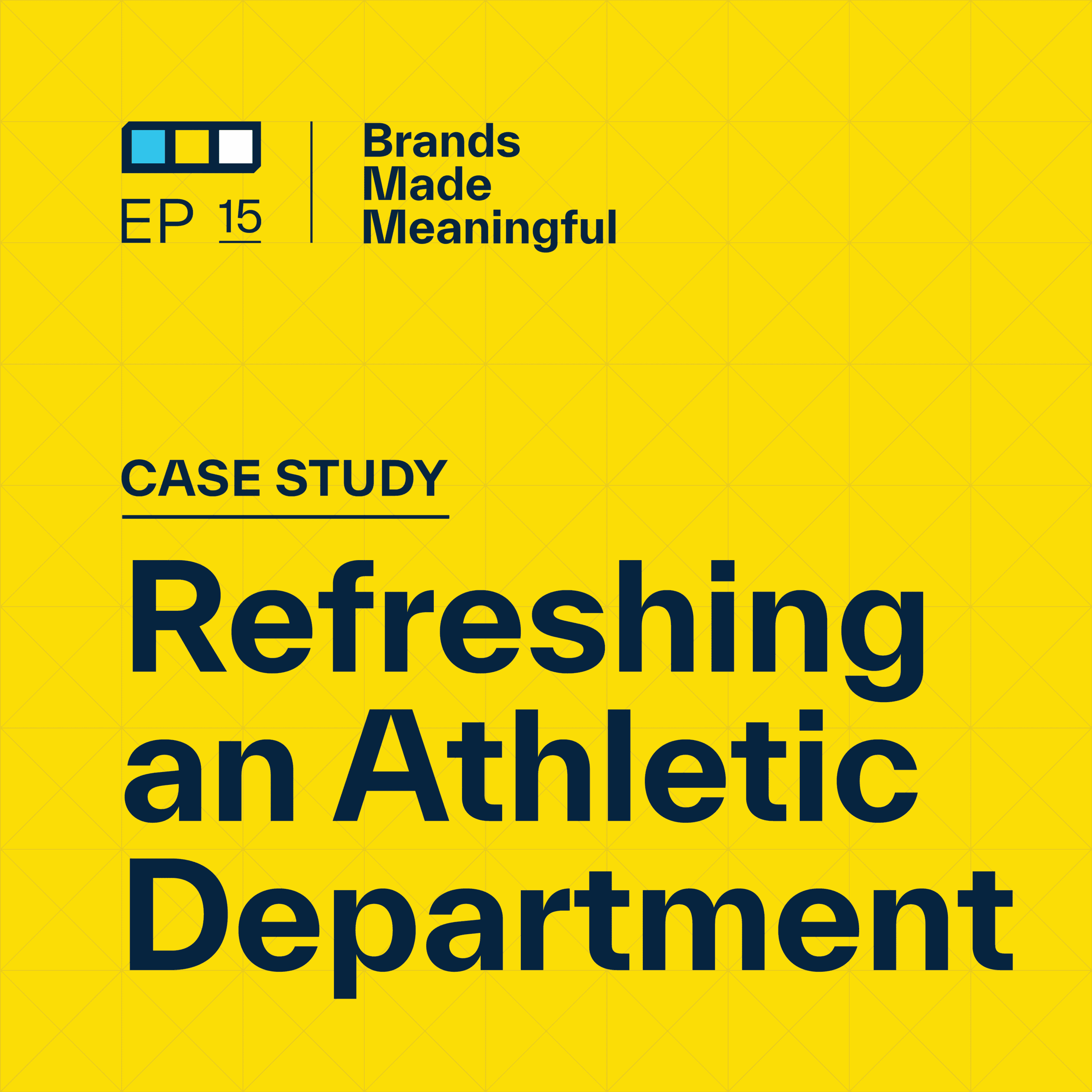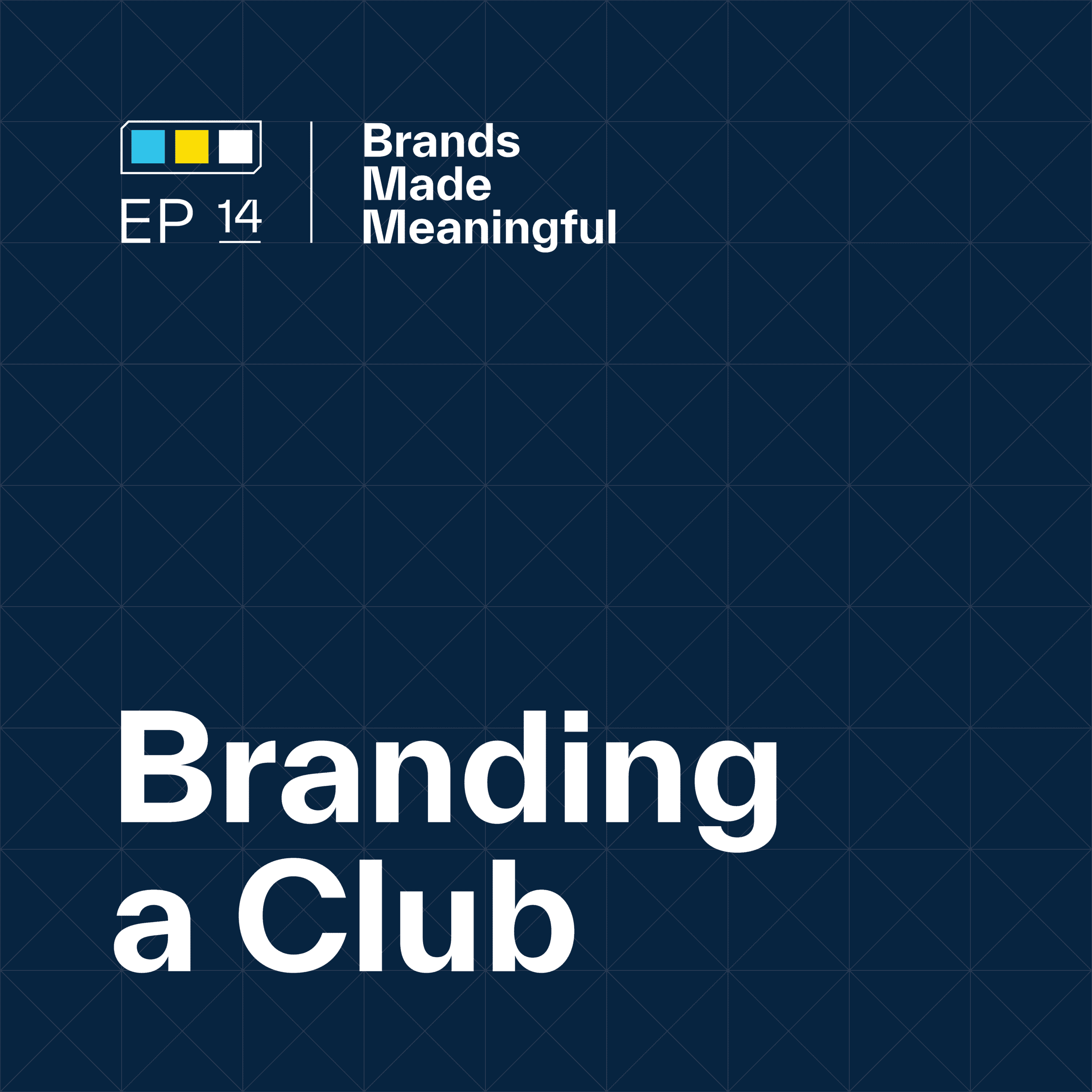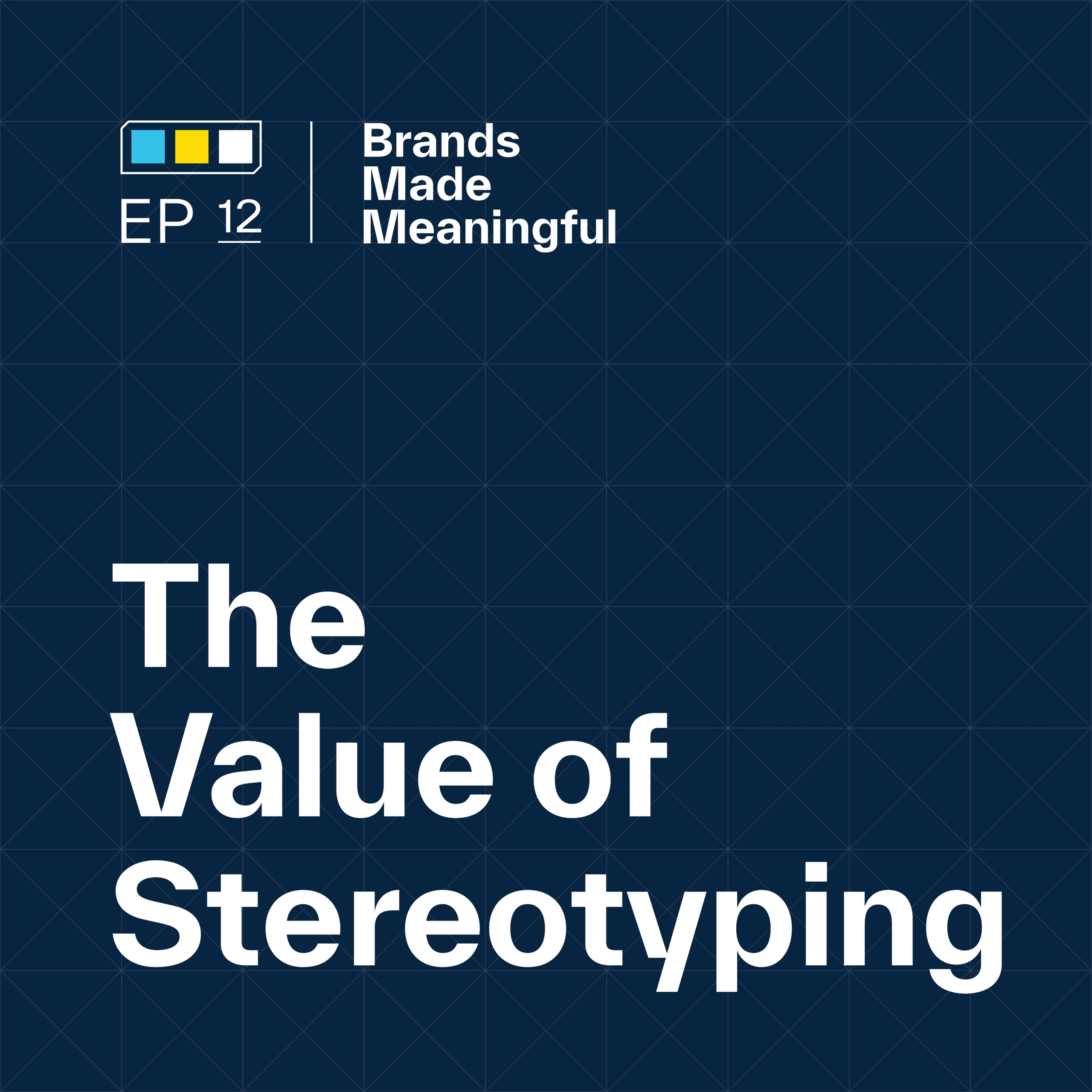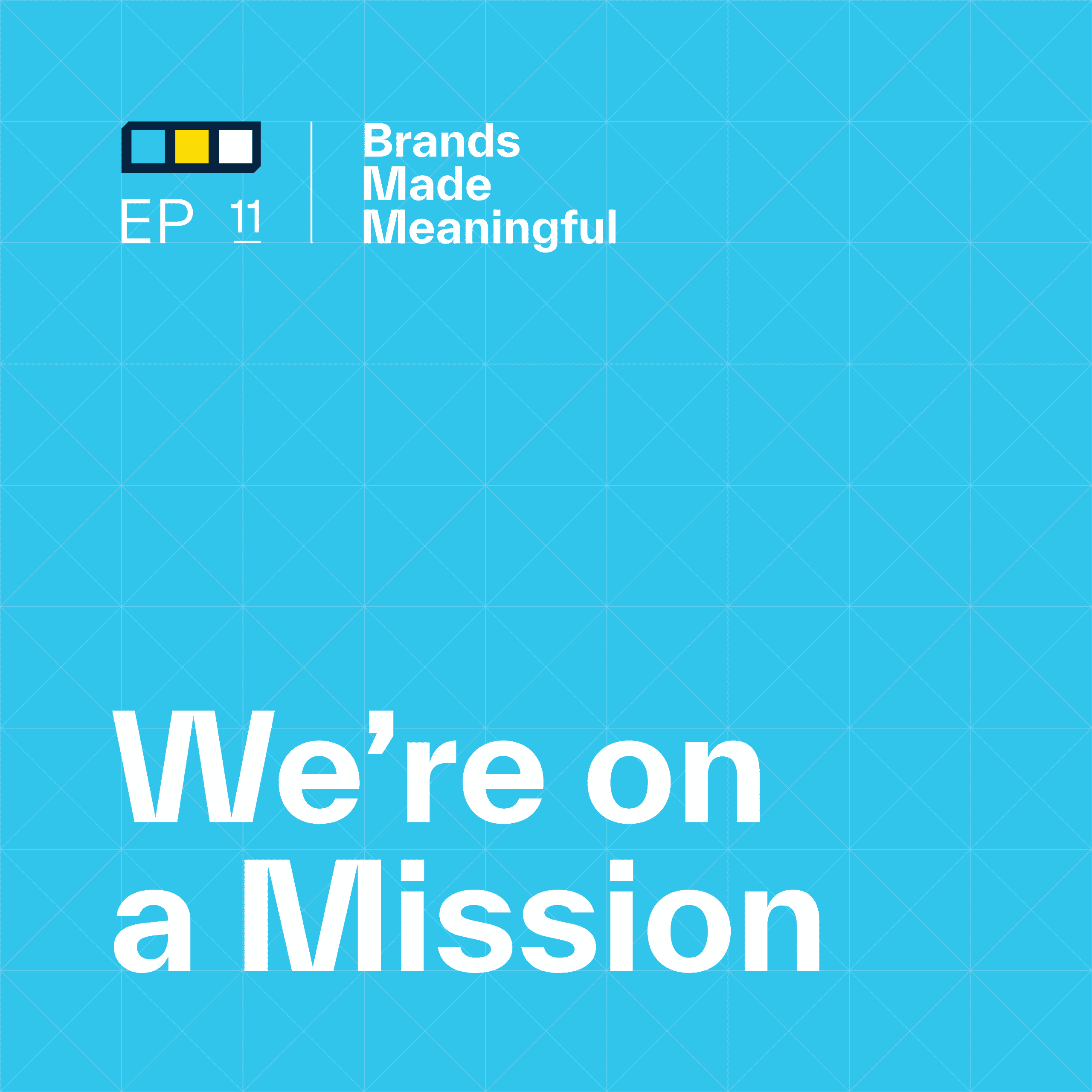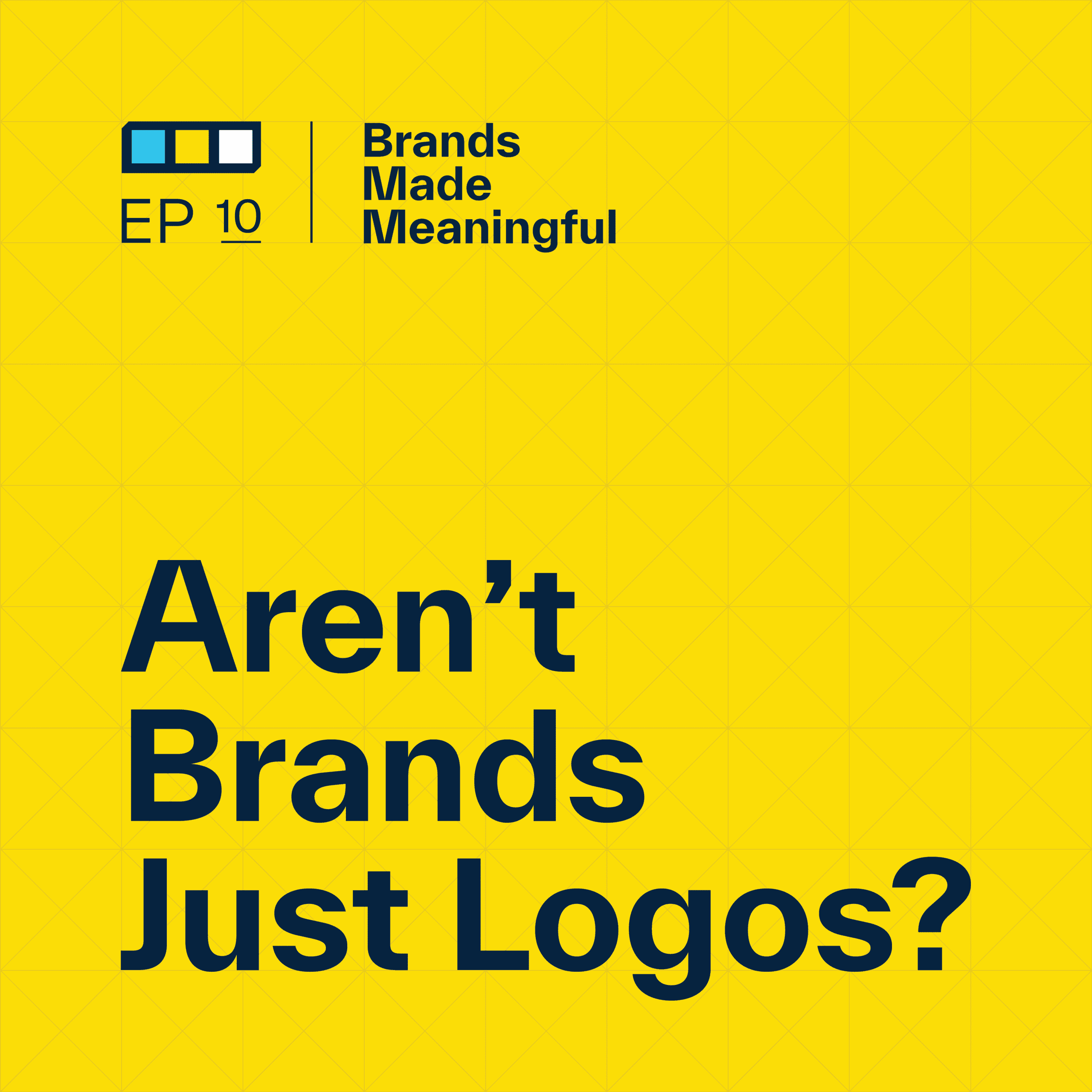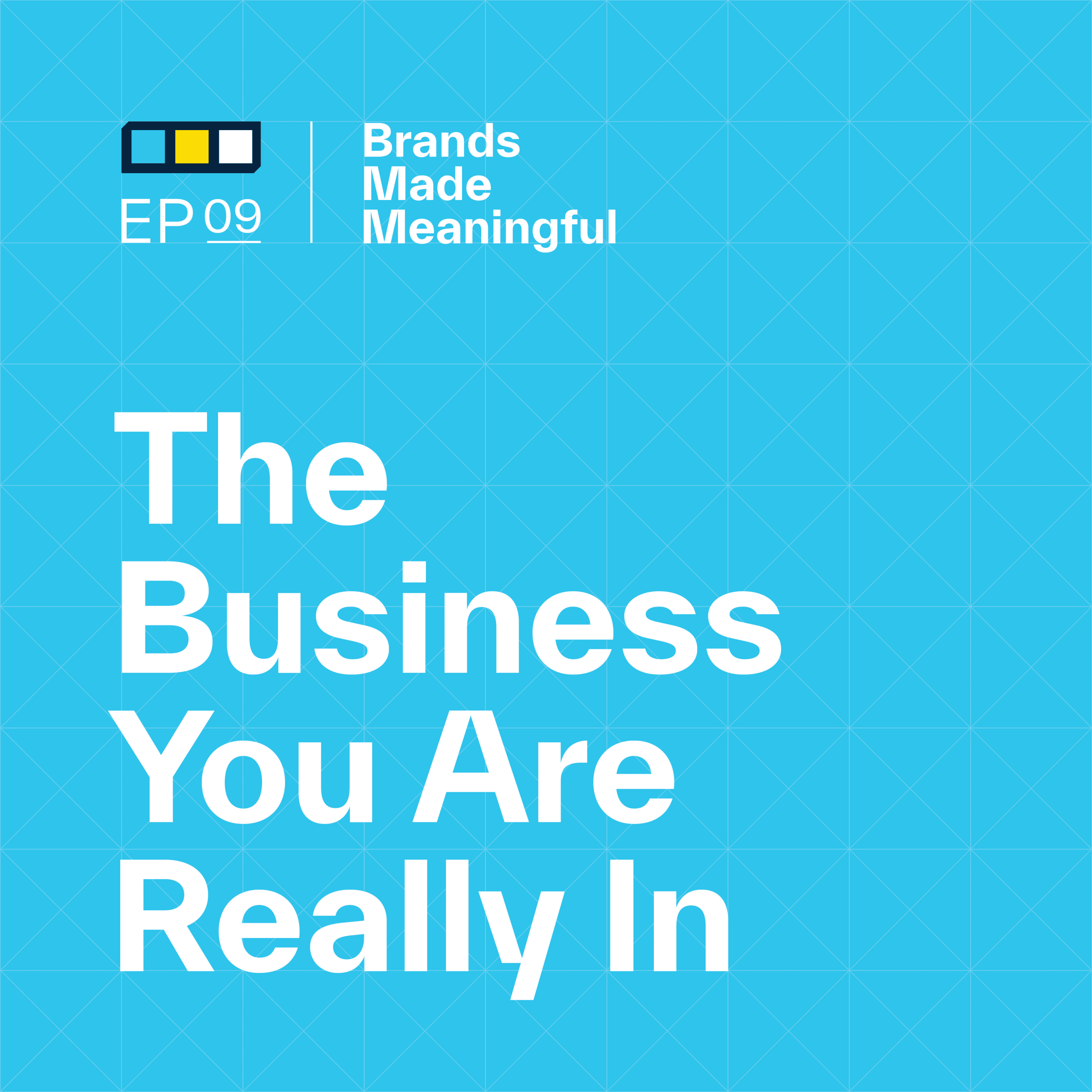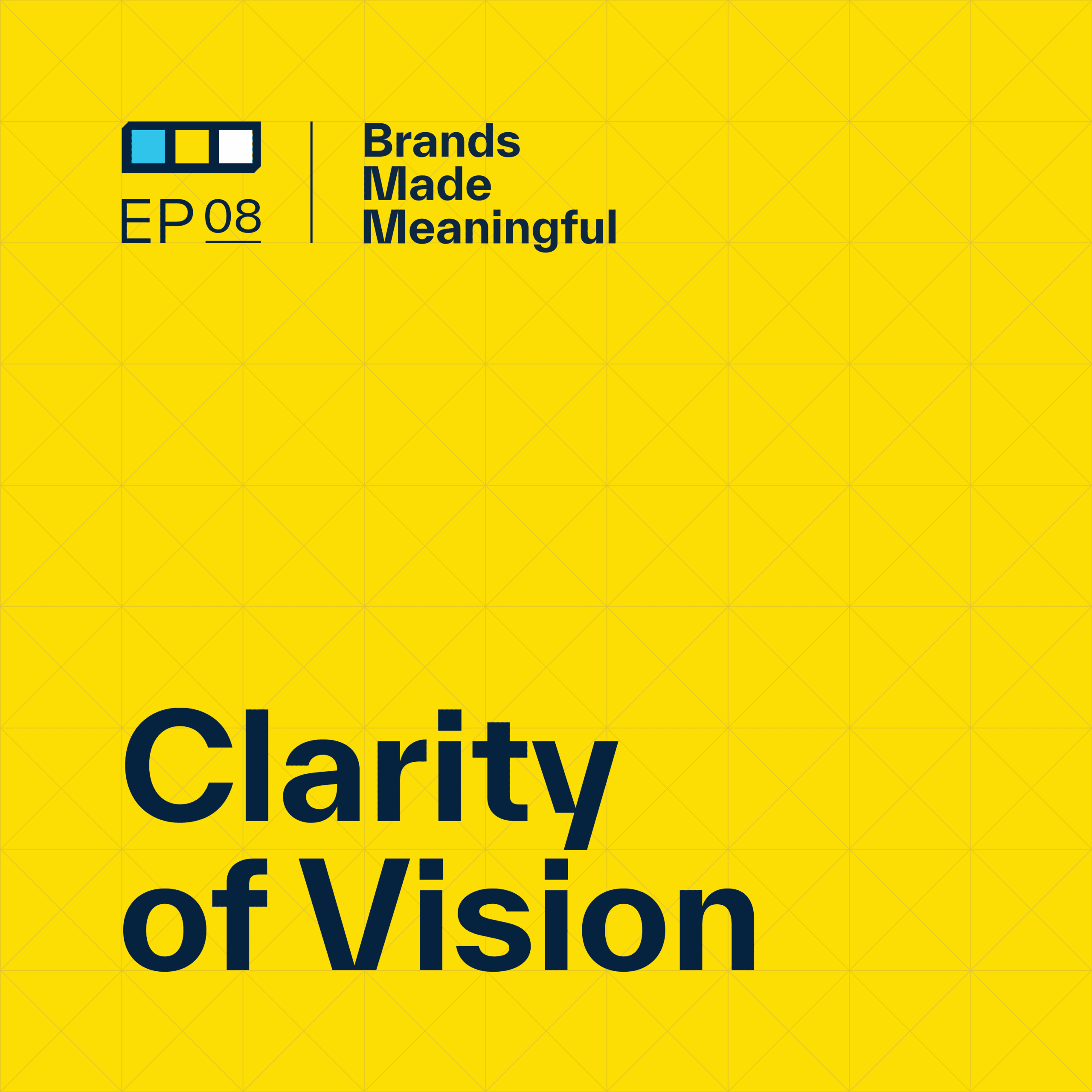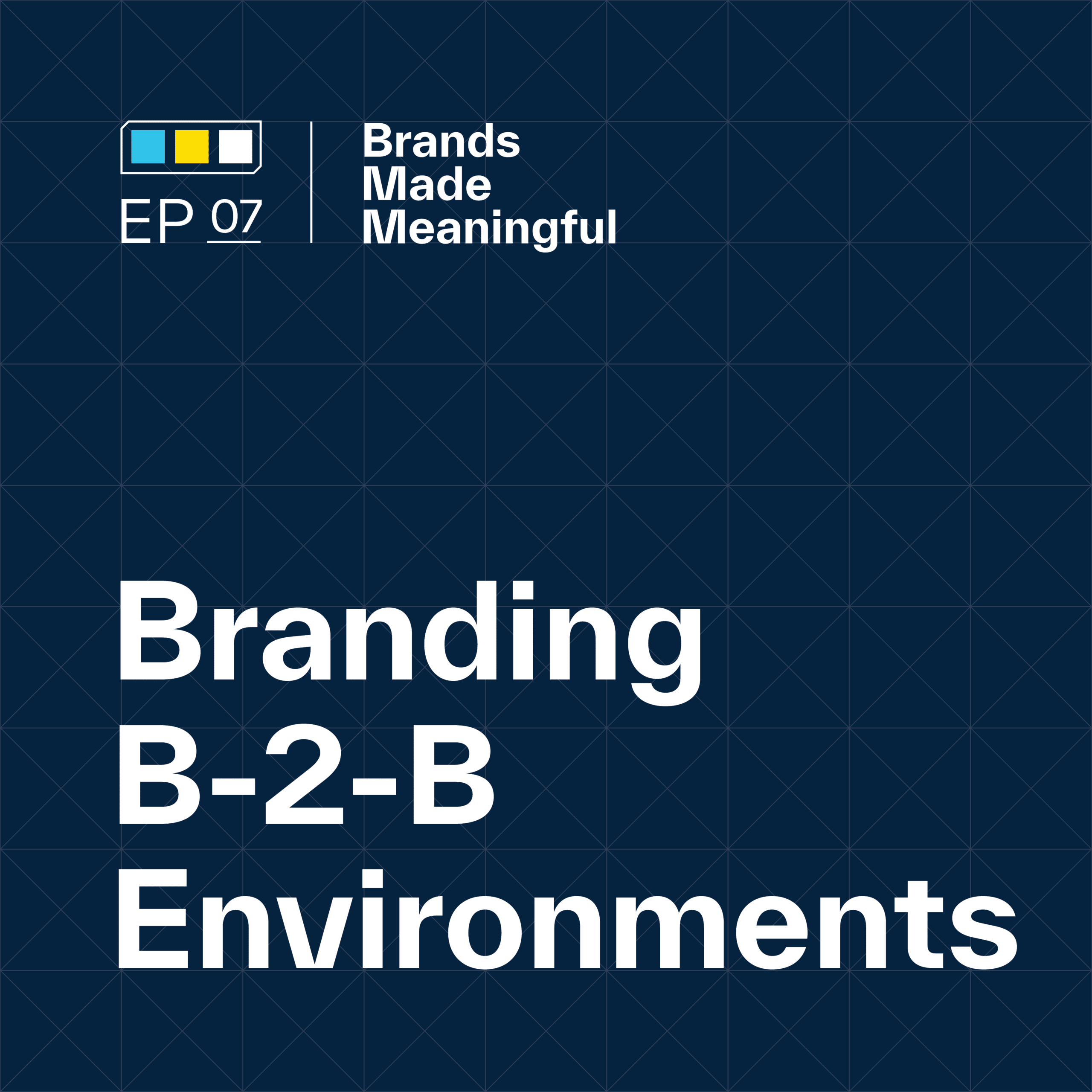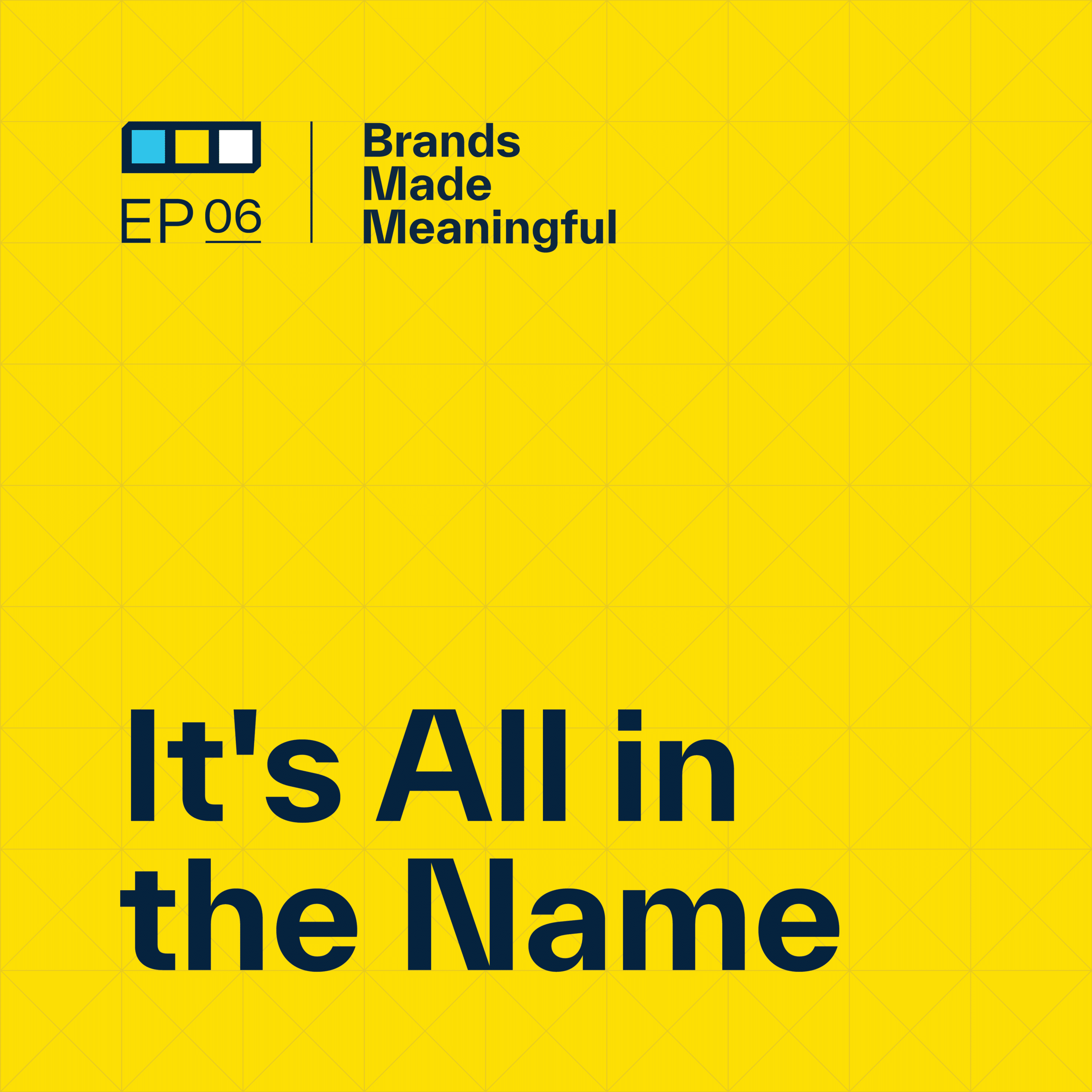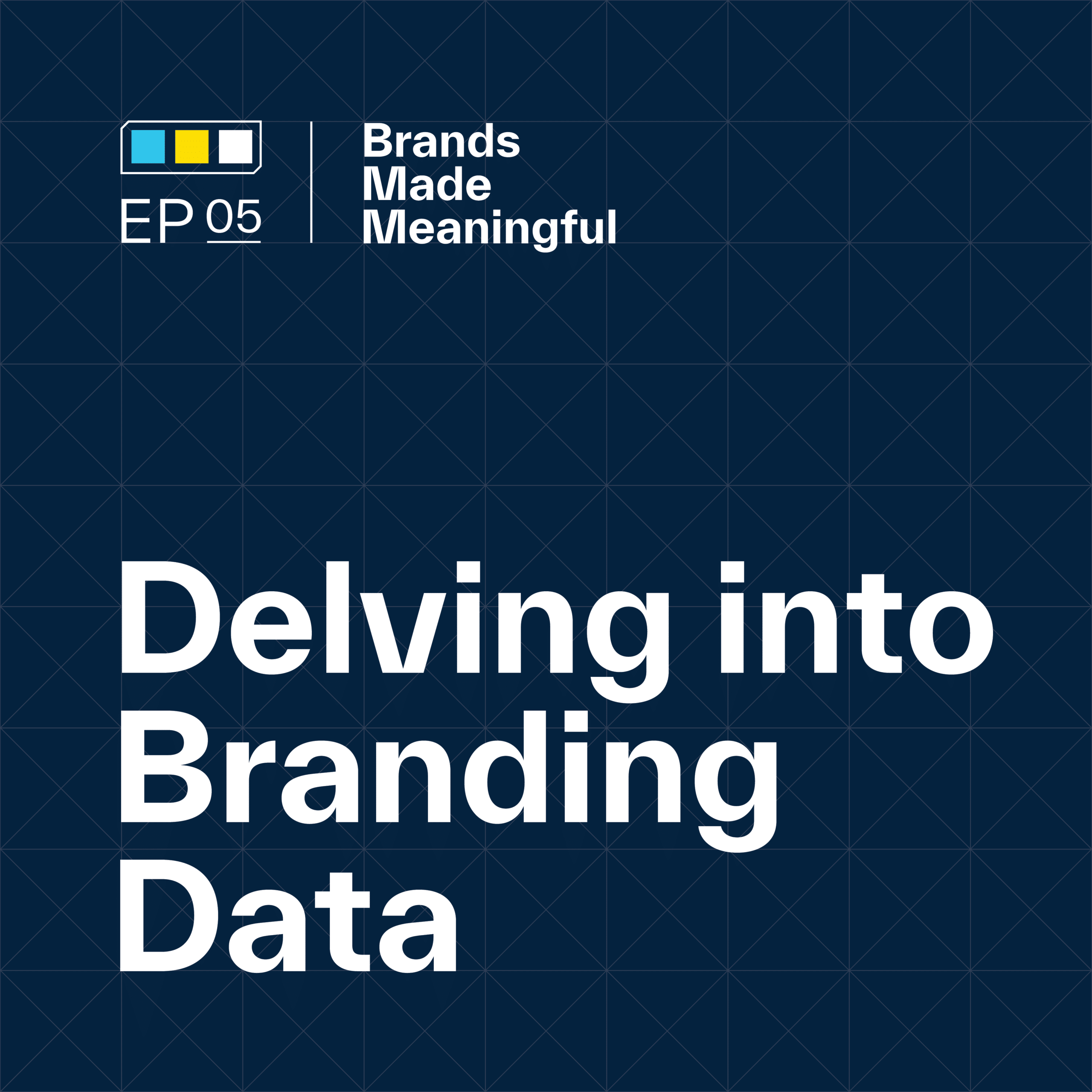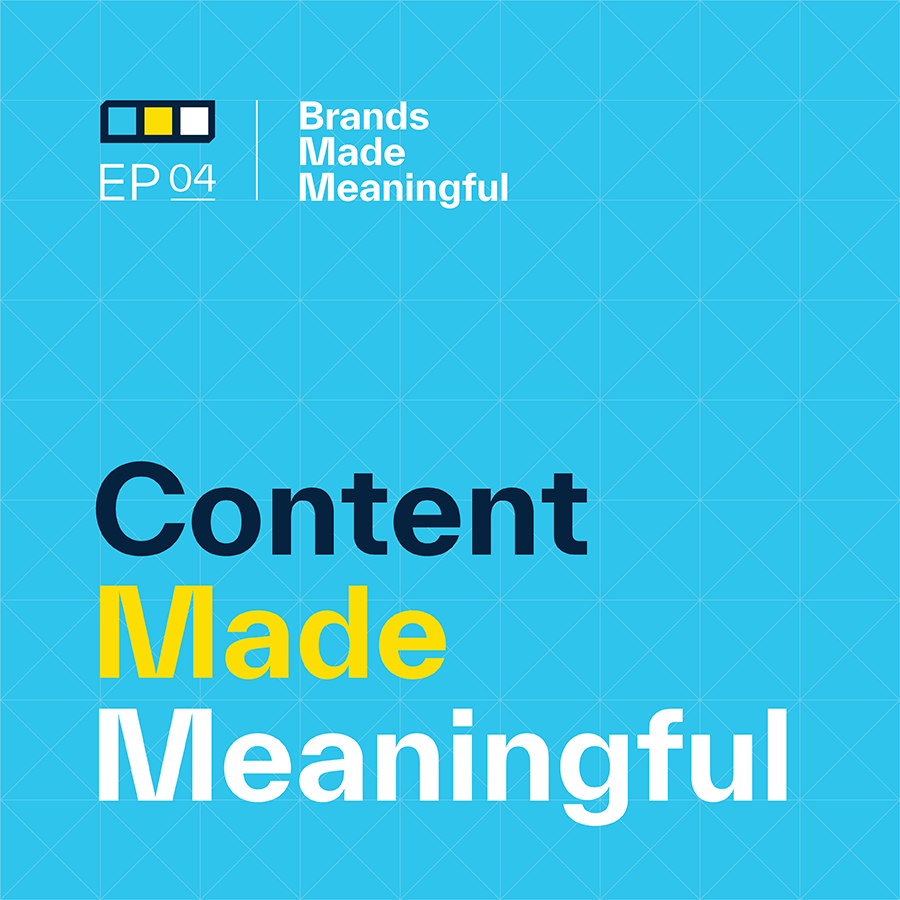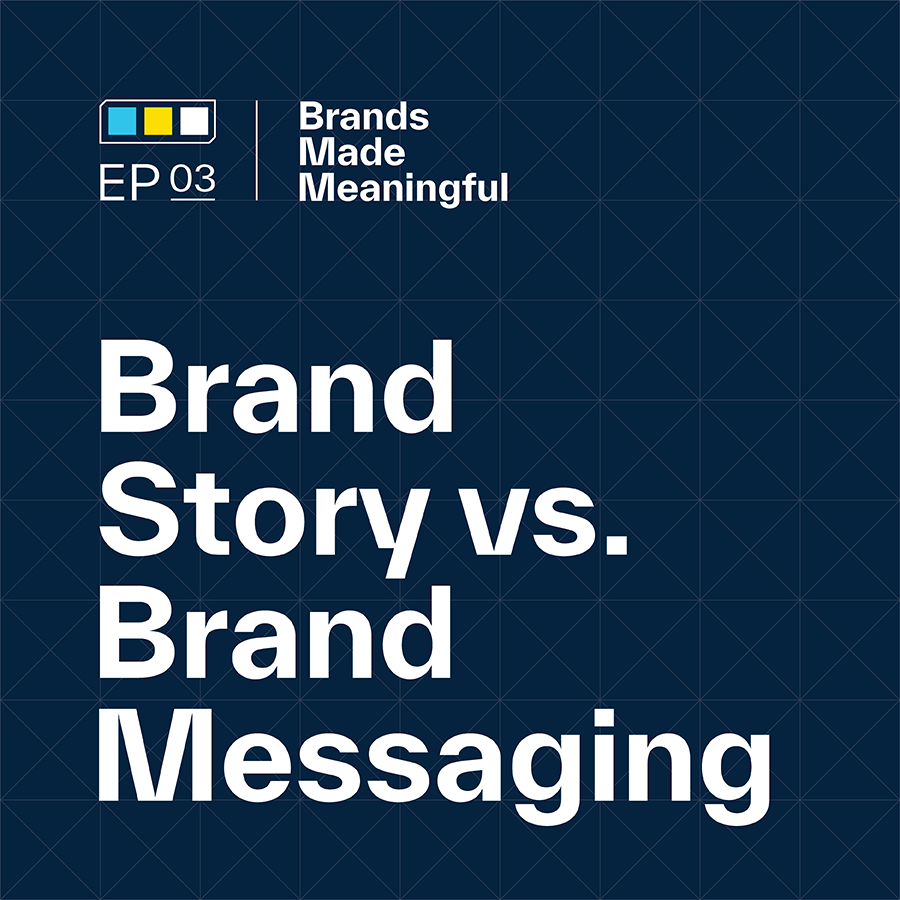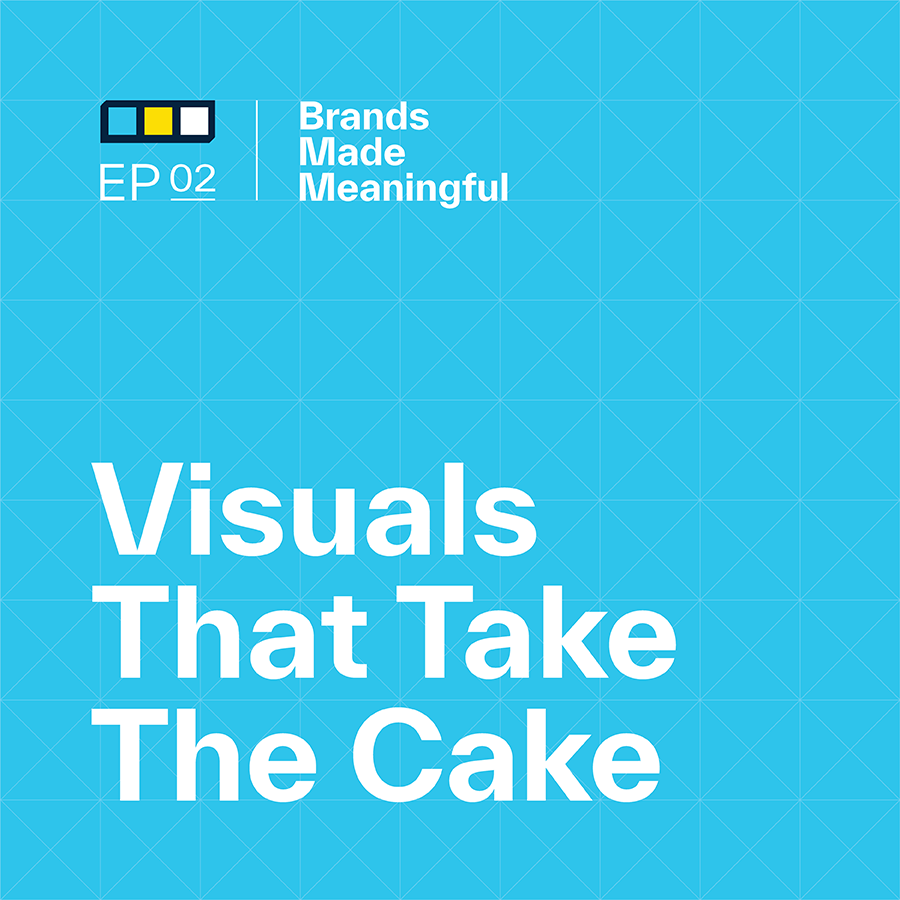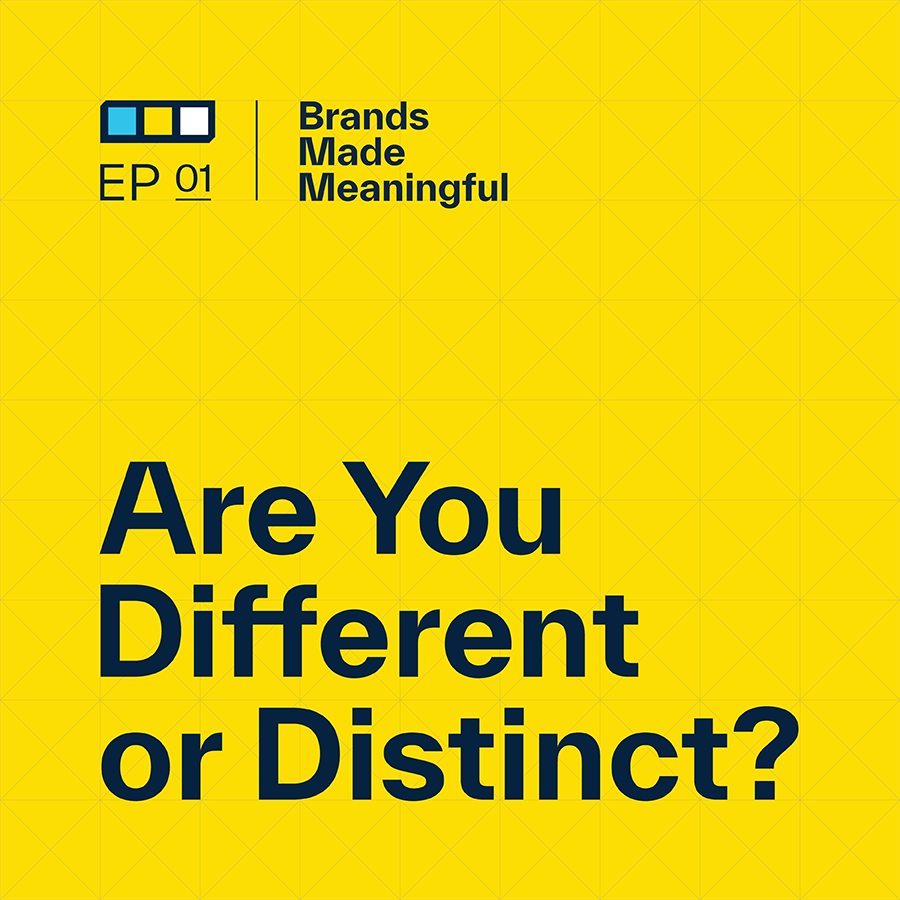EPISODE 38
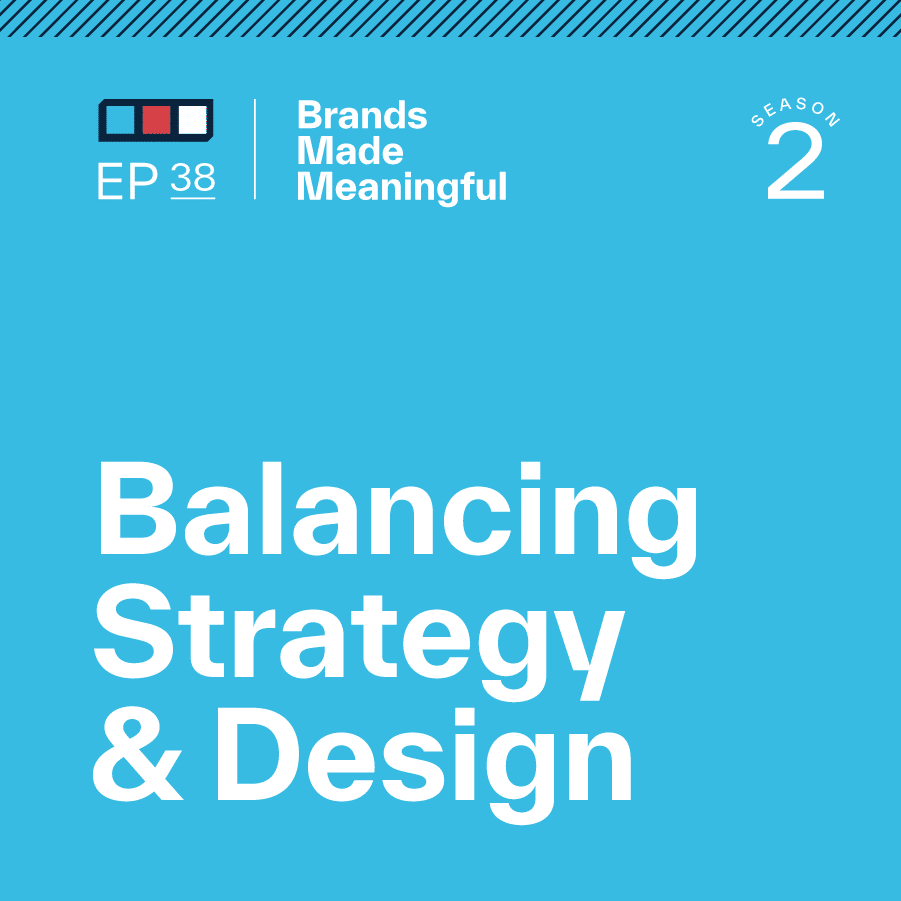
Balancing Strategy & Design
Episode 38
Great strategy is a necessary foundation for great design—and great design brings great strategy to life.
EPISODE TRANSCRIPTION
Why would I spend my marketing budget working with a branding firm?
Tucker And what makes you guys any different than any of the other marketing-type firms across the country that work with golf clubs and sporting goods companies and professional sports teams?
Expand Full Transcript
Tucker I think that this spurred the conversation today because not only am I interested in us telling that story a little bit, but also communicating the importance of the type of work that we do with the people that want to know. And so I want to get into the importance of branding a little bit. To just touch on it because it could be an hour-and-a-half-long conversation if we really wanted it to. I want to talk about the balance of strategy and design, and then I want to get into how that’s kind of made an impact for a lot of people in ways that we just didn’t see coming sometimes.
Derek We won’t go into the history of our business at all, other than to say that we were born out of graphic design. We were a group of graphic designers that then evolved into a branding firm. So then the next question is, What do you mean? What’s the difference between branding and graphic design? And I think where we’ve evolved is away from thinking about the services that companies are looking for when they think of, What does a graphic designer do? What are graphic design services? They tend to be more on the tactical end and more on the execution end, and they often fall into ephemera. Think about your favorite album covers or your favorite beer bottle label designs or your favorite brands. There’s a graphic design element to all of them, but graphic design is a tool within the branding expertise.
Tucker So you started 24 years ago now building out a graphic design firm saying, we can do that stuff. We can build beer bottle labels and we can do all of those graphical elements. But then over time, adjusting to say all that stuff isn’t as important if you don’t have strategy with it, if you don’t have an idea of the overarching brand and what that needs to do. And I think that this gets into the conversation about the difference in some people’s minds. Brand means logo for a lot of people. Brand means style for a lot of people. Whereas Brand is experience. Brand is all the different ways that you see, hear, and experience an organization, an entity, a product, all of those things. If we just did graphic design for anyone who walked through our door, then we don’t have the impact that we want to have. It’s coming back at them and saying, That’s great. We can design you a new logo or we can reimagine what your company looks like. But why? What is the importance there? What are we trying to accomplish? And how can we make sure that the money that you spend with us not only gets used to help you do things today but also helps you build upon it over time and you can grow on it? And it’s not just ephemera, it’s just this short-lived, trendy thing that can be changed now and you can modernize now, and then in three or four years are going to have to do it all again. Our goal is to say, let’s change that narrative.
Derek The reason that we shifted over time to thinking of ourselves as a branding firm instead of as a graphic design firm was that we kept asking why. We were a group of trained designers and trained creatives for years. Nobody within our organization went to school for strategy or business, and we learned those things along the way. We kept saying, We need a new logo. Why? We need a new package for our product. Why? What’s working, what’s not working? And I think without realizing it, we started honing more and more in on strategic questions to help make sure that the problems that we were solving visually and in messaging lasted longer. We’ve always wanted to make sure that the work that we’re doing is incredibly authentic in telling the story or helping sell the product or advancing the marketing initiatives of an organization that we’re working for. But I was never interested in super short-term projects like a wedding invitation and doing somebody’s wedding event. To the couple that’s getting married, that’s an incredibly important lifelong memory. But that’s a day. And when we’re looking at building a brand for somebody, our goal and anybody who does the work that we do, their goal is for this brand to last for decades not just a weekend.
Tucker A good example is that we work with sports organizations. We’ve worked with professional sports organizations, we’ve worked with all these different organizations. But we don’t do game day posters. That’s just not something we do. If a client asked us to do it because they absolutely needed us to do it, we can help them out. But we don’t go after that type of business because, to your point, it doesn’t excite us. Our team is long-term oriented.
Derek That’s a different expertise. It’s a different business model and it’s a different service offering. A game day poster or an event trade show booth are all very important parts of a company’s overall marketing or branding or advertising initiative. That’s just not our focus. That’s not what we’re best at.
Tucker I think the overarching conversation today is balancing strategy and design. It’s important for us to have strategy because without strategy we struggle to understand the importance of the specific design. If you want us to design something, that’s great, but what is it supposed to look like? What is it supposed to feel like? And what is it supposed to communicate? That’s where the strategy really comes in.
Derek Before we realize that any conversation with any potential client about what they’re building or starting or redoing, inevitably we get inspired. A designer will get inspired by that conversation and we’ll start to think about the visual way to tackle that. But what we found was we ended up throwing darts. We ended up throwing creative darts. We would do a bunch of designs. We might do three different options that we all thought looked great. And they did because, you know, we’re good at what we do. But they didn’t always resonate with the client. The client might say, Well, this looks cool, but why is this right for me? And why is this right for my customer? And sometimes we would get lucky. The dart would hit a good spot on the dart board and the visual component and even the messaging might have been really engaging and successful that way. But that success usually didn’t last very long. There was a sort of hollowness underneath. It was probably authentic, it was probably relevant, but there was some meat that was missing. And that’s why we kept looking into why that was and how do we make this more thoughtful and intentional and something that will last longer in helping this client with what they’re doing.
Tucker The market moves so fast. So if we’re building for today, it doesn’t really help you in three years because the market will change so much. But to say our goal here is to build you a brand, to build you brand assets, and we can get into brand assets in a little bit, but to build you these assets that are flexible, that move with you. So maybe your organization’s growing. Then we need to build the assets that grow with your brand versus having your brand be held back by the assets that you do have today. For us, it’s really important that if you’re not utilizing the strategy, then the design is just art. It’s not anything that’s going to last long enough to actually make a commercial impact for you.
Derek What you just described is the difference between fine art and commercial creative. We’re hired to tell somebody else’s story. And for the clients that we’re working with, we’re hired to do that to make a financial impact for them.
Tucker And we work with them on their vision and their mission. People ask us, So why do you work within those core components of the company? And to us, that is because your brand is such a core component of your company. It’s outside the marketing bubble. It’s outside all these different lenses. So if you think of marketing, advertising, branding, some people would put branding in that marketing bubble. And I would say that it absolutely affects a lot of things in that marketing space but branding also affects your culture. It affects your HR. It affects the leadership and the directions that you take. It affects your product development, customer service, and all these other things. So for us, it’s unfair for a lot of people to take that and say, Well, your brand is just a part of your marketing strategy and that’s how it works. When we work with organizations, we don’t just talk to their marketing team. Most of our conversations are actually with the entire C Suite. We’re going to bring everybody in because we know that everyone’s going to have to execute this. So when we talk about your brand strategy and then the way it rolls out when we work on designing and writing and crafting experiences for an organization or a product, we don’t work with just the CMO. We work with the CMO and the CEO and maybe the CHRO on how this gets rolled out within core values internally and all these other components. To your point, 24 years ago, graphic design firm all the way. Fast forward to today – branding firm. The big differences are is it’s not all about design. Design is a great way to showcase all of these things. We were talking before we got on here today that it’s really about the design having to be able to communicate that story. If we’re not communicating it, it’s almost like it feels like all of it’s unauthentic. So if you go and work with a marketing communications company and they have a graphic designer on staff, but they are not really trained thoroughly in graphic design, they might be able to design you something, but it’s probably not going to tell that story in a really, really authentic, deep way.
Derek That person’s probably trained in graphic design, but they’re not trained in branding. What you said, which is a critical part of what inspired us to have this conversation today, is brand strategy is not a marketing department role. The organizations that we work with that realize the most impact throughout the entire organization when it comes to their brand, include their brand in their business strategy, not just their marketing budget strategy.
Tucker And when you take that and break it out, not only does it help you understand we’re working with something a little bit bigger than just the way our audience sees us now. It’s the way our employees see us. It’s the way that our leadership kind of believes in what we’re doing. When you break that out and you have a conversation with the whole company, it starts becoming more than just the way we look. And that’s where it becomes really impactful for what you do. So our brand is more than the way we look. And I think that if we can get that across in this conversation, then it’s done enough because there’s value in there to say, and we say it a lot to a lot of our clients, is that your brand is more than your logo. And I think that as we keep going, as it becomes more familiar, I think people understand that. But it’s more than just your logo. It’s more than even your tagline. It’s more than the way you sound. It’s the way you answer a phone call. It’s the way that you type out an email to somebody. It’s the way when somebody comes into your office and they haven’t been greeted yet but they see your wall, what did they see and how do they experience it? What is the smell of your office? If it smells terrible, then that’s going to give them a perception that is negative. And is that marketing? No, not really. But it is a part of your organization. So there’s this balance of how you build out a brand without having a ladder or a silo in your organization that’s owned for it. But everyone has to have ownership of it in order for it to be successful.
Derek The debate of what’s more important, strategy or the creative, is always fascinating. When we sit around the table with our team and what comes first – well, I don’t think what comes first is the right question because we know what comes first. But what’s more important? Can you do one without the other? Or the client’s budget is limited. If we had to figure out how to help them, is there a way to scale back on one or the other? Those are great conversations from a design standpoint. We were coming back from a trip and I was on the airplane looking for a movie to watch and all I had was the three words of the title of the movie and a thumbnail picture of the movie and the visual, the poster of that movie, which was 90% of the deciding factor of whether I paused and clicked on it and then read the preview. The visual of the can of beer in the cooler at my local craft beer shop makes an incredible difference in what I decide to engage with. So the creative is incredibly important. You could have a killer brand strategy. You could have a great story. You could be unified internally with happy employees and have the best customer service in the world. But if nobody is aware of you, which might be more marketing or advertising, or if the way that you visually present yourself or if somebody’s impression of you, the colors, the look, the symbols, the graphics, the words that describe that organization fall flat, then you’re not going to attract the customers that you’re looking for.
Tucker I’m thinking back to that beer example. You’re walking through a craft beer area at your local grocery store or liquor store and you’re looking at the labels and you see all this stuff and you see a label and it’s bright and colorful and you pick it and you’re like, Wow, this looks awesome. It says all these things like it’s creamy and tastes like vanilla and you go home and you open it and you take a sip and it’s a dark beer and you’re like, Whoa.
Derek Or it’s flat.
Tucker I’m saying, it’s not fruity. Like the label looks colorful and it looks creamy and nice and you drink it and it’s not any of those things. And that is the detached feeling. I won. I got you to buy my product, but the chances you buy it again are extremely low.
Derek Or tell anybody else about it in any positive way.
Tucker And so for us, it’s to match those experiences. It’s to take all of those things to say what we are trying to get them to experience and how we are trying to get them to understand what we’re trying to do and then communicate that within design and communicate that within writing and keep moving forward in a positive direction.
Derek You and I were just at a conference in Florida that caters to general managers, primarily of golf clubs, and we were showcasing a couple of projects that we’ve done recently where we’ve rebranded a couple of golf clubs. And one of the GMs who stopped by and was looking at some of the visuals that we did started asking us some really designerly questions. And one of them was, How did you land on the colors that you did? That sounds like a simple question. You could go, Well, we started with Roy G. Biv and we went down the color palette. Or why did you choose that symbol? He started asking very getting in the weeds designerly questions and the answers didn’t go into the technique, the software that we used, or the approach or the style or our internal process. It all went back to the story that we had uncovered when we dug into the brand strategy portion of figuring out the spirit and culture of this place.
Tucker When we do color, we do it in a very intuitive but very meaningful way. It’s not like we pick the color because we like the color. You hate the color green. But we have plenty of brands who we work with that use green.
Derek And they should.
Tucker They should because it makes sense to them.
Derek Think you’re wearing green.
Tucker Yeah, because I like green. And when we talked to this client, we walked through this thing and we basically nailed the color right on the first round. And she came back and she said, I’ve never seen someone do color like this. I’ve done this for 30 years. I’ve worked with companies, I’ve done all these different things. I’ve never seen someone talk about color like that. And for us, it only makes sense. So if we’re going to do all this work, and that’s what bothers me about other people’s processes, if we’re going to do all the strategy, we’re going to walk you through what this all means and how this all used in different ways and the experience you’re trying to create in the story we’re trying to tell, that needs to be used in all different aspects. We had another client who said, You guys are like a Native American tribe with a buffalo. You use every single piece of it. So when we do a strategy, we pull it all apart. We use every single piece to try to inspire everything so that it makes sense. And then we give it to our clients to say, Now you guys inspire other things, to inspire the inspired, the experiences that you create, inspire the employees that you have in different ways.
Derek And subjectively you might like green or not like green, but by the time we’ve gone through the process of understanding what you as an organization are about, what the goals are of this very specific initiative or project, by the time that gets to color, there’s a really intentional and purposeful reason and rationale as to why we’re presenting that color as an option. It’s not by accident. That doesn’t say that then the subjective nature will come in and we’ll have that conversation. It’s not scientific, but it’s not just done all by intuition and gut. There’s a blend of process and then meaningful telling of that story. We use the term purpose over preference, and I wish I could take credit for having come up with that slogan because now we use it every day. When we presented the color and the reasoning and even the names of the colors that we gave to each of the colors in their proposed color palette and we talked about why we did it, one of our clients sat back and went, So you’re picking colors on purpose instead of just based on personal preference. So purpose over preference.
Tucker Yeah, that was Andrea Ponto. Shout out.
Derek Shout out to Andrea.
Tucker That was great. And it’s so true to say everything is done with purpose over preference. Tagline has to be a purpose over preference. I might not like this one word, but that doesn’t mean I can’t understand why we got there and why it makes a big difference.
Derek I think some graphic designers that people listening to this podcast would work with will push back on the strategy. They’ll push back on the information and the direction of the creative brief because for some super artistic people that will feel limiting. But those tend to be the designers that lean to the more fine art side. Versus, if we asked our lead designer what it was like to design something for a company without any information other than just an initial conversation with a client, is it now easier and more impactful to design something with the story, the information, the direction, the brand essence defined? Which one makes it easier to choose the color? And it’s night and day. I’m thinking back to one of a couple of instances over the years where the creative that we presented failed, didn’t work, and didn’t resonate with the client. There is one case that to this day I think about when we keep asking, Why didn’t this work? What did we miss? And I believe that that project became a presentation only in a visual exploration because somewhere along the way I inadvertently skipped, missed, overlooked, or didn’t complete the strategy portion of the project.
Tucker When we look back at projects, and we say this to clients too, they’re not surprising. They shouldn’t be surprising. At no point should you be shocked. When we walk through this, our process is a super simple, high-level run-through. We do discovery. We tell you what we heard, tell you what direction we’re going to go, write a strategy based on that direction, and then based on that right messaging and visual directions, design off of that. It’s built off of so many processes and checkpoints along the way with everybody that by the time we get down to it, it feels like we went on this journey together and we knew where we were going versus us going away for three months, coming back, and here you go, and you’re shocked in a good way or a bad way or indifferent. I think for us not to shock our clients is a great goal, but for them to understand where we’re coming from and understand that power. I think our hope is that they leave our engagement smarter about how they should be looking at their brand. We help clients do a lot of different things, but as long as we understand what they’re trying to accomplish and how they’re trying to move forward, then we can help them be successful.
Derek Design’s not only defined by the graphic design or the person or the people who are actually creating things. Design is just being thoughtful and intentional about everything that you do in every way that your customers come in contact with the experience of you, your brand, and your products. Starbucks is my favorite example. Every component from the music, to the smell, to the words that the employees are trained to use when they greet you is a designed experience and incredibly thoughtful and intentional and consistent.
Tucker And it’s for a specific person. You might not like Starbucks. That’s probably not because they did a bad job. It’s probably because it’s not for you.
Derek It’s because they’re too expensive for a cup of coffee.
Tucker Okay. Well, that’s not for you. There you go. I think you can see that across the board with a lot of different great brands – like Chick-Fil-A does a great job. There are people who love Chick-Fil-A. They’ll sit in lines around the building for Chick-Fil-A and they have a consistent brand experience. Whether or not you love that is totally a subjective thing, and you might not be their target audience.
Derek But what Chick-Fil-A and other brands, any brand restaurant, store, any place that you frequent, that you love, that you tell your friends about because the experience was so great, started with establishing a strategy of what are we trying to do and why? And then the design. We could talk about whether or not the Chick-Fil-A logo and the color red are appropriate logos for that type of restaurant. I’m not talking about that kind of design. I’m talking about designing everything that’s in that experience.
Tucker We have some people at these conferences that we go to that come up and they go, Hey, what do you think of this logo? And the and default answer is it depends on what their strategy is. I don’t know what they’re trying to go after so I can’t tell you. I don’t know enough about what they’re trying to accomplish to say whether they have accomplished it or not. So a good logo is dependent on if you are accomplishing what you set out to accomplish. So if you have a logo that doesn’t accomplish what you’re trying to accomplish, then yeah, it’s a bad logo. It didn’t do what you want it to do. And that’s where you start getting into these conversations of it’s hard. It’s hard for some people to justify if they have a good brand or a bad brand. If they have no strategy, then you have no idea. And so then you can default into, well, it’s probably not doing what it needs to be doing for you. All right. That’s a lot. I think this is a great conversation. I love talking. Well, I love talking about strategy and you like talking about design. So that’s a good jumping-off point. I think that from here, as we keep going forward and as people keep listening, start looking at your strategy, start looking at that and then be critical of your design. I think that there are not enough people who look at their design objectively. They look at it subjectively. If you’ve been there for ten years and you go, I’ve been here for ten years and this logo means this to me. Well, that’s different because you’ve been with it forever. Imagine someone coming off the street and seeing it for the first time – does it do what it needs to do?
Derek If the design is falling flat or you look at it and it’s uninspiring or you’re bored by it, then ask yourself if it was built with the strategy and the meaning that it needed to be. On the other hand, if your creative is crushing it, then it’s probably because your strategy is crushing it too. So it’s not one or the other. It’s both. I don’t think you can have a great strategy without the great design to bring that strategy to life in those experiences. And I don’t think you can get to great design without a killer strategy first.
Tucker Well said. All right. Until next time.
Derek See you next time.
Tucker Thanks.
Derek Sussner is a branding firm specializing in helping companies make a meaningful mark, guiding marketing leaders who are working to make their brand communicate better, stand out and engage audiences to grow their business. For more on Sussner, visit sussner.com.
More Episodes Like This
Changing a Club’s Membership ModelEpisode 83
Derek and Tucker discuss key considerations and challenges when changing your club’s membership model.
Connecting a Club with its Story with Jackie CarpenterEpisode 82
Derek and Tucker are joined today by Jackie Carpenter, author of People First.
Branding a Club AnniversaryEpisode 81
Derek and Tucker discuss the unique opportunity presented by milestone and anniversary dates for private clubs.
Private Club Storytelling with Ricky L. Potts, Jr., CCMEpisode 80
Derek and Tucker have the pleasure to speak with Ricky L. Potts Jr. about how powerful storytelling can be for your club members.
Opportunity in Club Facility RenovationEpisode 79
Derek and Tucker discuss pivotal key moments in your legacy and how to transform your story through renovation.
The Evolution of Club Members with Jon LastEpisode 78
Derek and Tucker are joined by Jon Last from Sports & Leisure Research Group to discuss the evolution of club members.
Member Branding vs. Product BrandingEpisode 77
Derek and Tucker discuss the challenges their client's have moved through when approaching differing styles of branding.
The Role of a Private Club's LogoEpisode 76
Derek and Tucker take a look back on private club logos they've designed over the years and explain the strategic reasons behind their choices.
Club Brand GovernanceEpisode 75
Derek and Tucker divulge the steps to evolving your brand while retaining your core values.
Seasonal Member MerchandiseEpisode 74
Derek and Tucker take a look at crafting specific merch to celebrate landmarks and special times of the year.
Who is Sussner?Episode 73
Derek and Tucker take a break from talking shop to talk about who they are and what they stand for.
Club Identities Beyond AmenitiesEpisode 72
Derek and Tucker discuss what it takes to stand out in unique ways for your club.
Little Things Mean EverythingEpisode 71
Derek and Tucker take a look at the often missed and easy to overlook.
Build Flexible Brand SystemsEpisode 70
Derek and Tucker break down the building blocks for long lasting branding.
The Club at Golden ValleyEpisode 69
Derek and Tucker take a close look at one of their recent rebrands.
When to Launch a Club RebrandEpisode 68
Derek and Tucker break down how to find the perfect timing when launching a club rebrand.
Steps to Launching a Club RebrandEpisode 67
Derek and Tucker break down the steps to take and the reasons why you should consider a club rebranding.
Brand Marketing vs. Brand DesignEpisode 66
Derek and Tucker define the line between marketing and design and how they intersect to inform one another.
Building Brand GuidelinesEpisode 65
Derek and Tucker show us how to build infrastructure guidelines to unify your brand experience across the board.
Club Identity SystemsEpisode 64
Derek and Tucker cover what Identity Systems entail and how to discern between internal and external methodologies.
Navigating Branding With a BoardEpisode 63
Derek and Tucker bring clarity to uniting your company under one cohesive vision.
Putting a Committee TogetherEpisode 62
Derek and Tucker assemble your need-to-know facts when putting together your committee.
The Guiding Principles of Private ClubsEpisode 61
Derek and Tucker go over the top ways private clubs can find the balance between pleasing old members while attracting new ones, all while making moves towards the future.
How Color Affects PerceptionEpisode 60
Derek and Tucker cover how to best convey your business with color.
Brand EcosystemsEpisode 59
Derek and Tucker break down how to craft effortless experiences when considering your brand as a whole.
6 Types of Brand TransformationEpisode 58
Derek and Tucker dive into 6 distinct types of transformations for a wide range of brands.
Tournament Branding For ClubsEpisode 57
Derek and Tucker discuss designing and delighting your club members with tailored events.
Brand Promoters & DetractorsEpisode 56
Derek and Tucker discuss how high level promoters increase your NPS and how to turn the tides on your detractors.
The Loudest Voices in the RoomEpisode 55
Derek and Tucker talk about gathering feedback while prioritizing every voice.
Determining A Primary AudienceEpisode 54
Derek and Tucker discuss if and when you should be honing in on your audience vs. casting as wide a net as possible.
Branding For ExclusivityEpisode 53
Derek and Tucker discuss the intricate process of naming your brand.
Measuring Brand SuccessEpisode 52
Derek and Tucker discuss how we measure our success in branding and a few key KPIs that help us understand our impact.
Branding For ExclusivityEpisode 51
Derek and Tucker breakdown how brands can create the perception that they are exclusive and only for a certain type of consumer.
What Makes A Brand SurprisingEpisode 50
Derek and Tucker break down the Sussner formula that we believe leads to a surprising brand.
Breathe Life Into Brand TraditionEpisode 49
Derek and Tucker discuss the intricacies and common pitfalls of branding for Private Golf Clubs.
They Key of Visual DifferentiationEpisode 48
Derek and Tucker break down the importance of differentiating your brand on a visual level.
Branding For Private GolfEpisode 47
Derek and Tucker discuss the intricacies and common pitfalls of branding for Private Golf Clubs.
Dealing With An Identity CrisisEpisode 46
Derek and Tucker breakdown how to identify and remedy a brand's identity crisis throughout thoughtful and intentional brand management.
Branding vs MarketingEpisode 45
Derek and Tucker discuss the differences between Branding and Marketing and how to make the two compliment each other.
Build Your Brand's FoundationEpisode 44
A brand's foundation is a critical element in being successful in the long-term.
Building a Constructive Branding ProcessEpisode 43
Derek and Tucker break down the steps required to build the most constructive and meaningful branding process.
What Makes a Brand Relevant?Episode 42
Relevance is a key piece of a brand's identity for creating clarity and connection.
Your Right to WinEpisode 41
Derek and Tucker discuss the “Right to Win” and the odds of your brand's success within your target market.
An Intro to Sub BrandingEpisode 40
Derek and Tucker discuss the nuances of developing sub-branding and strategies.
Conquer Branding FearsEpisode 39
Derek and Tucker dive into how to overcome the fear of change and the nature of constant refinement of your brand.
Balancing Strategy & DesignEpisode 38
Great strategy is a necessary foundation for great design—and great design brings great strategy to life.
Branding PrioritiesEpisode 37
Branding priorities are the actions and initiatives that shape or enhance a brand's identity, perception, and market position.
Invest in Your BrandEpisode 36
Investing in your brand benefits your company as a competitor in the marketplace, builds trust with customers, increases perception of quality, and drives employee engagement.
Why is Positioning Scary?Episode 35
Narrowing the brand's position is really a strategic decision to focus the brand's offerings, messaging and target audience on a specific niche or segment within the market.
What Are Brand Consultants?Episode 34
Derek and Tucker discuss the importance of hiring expertise with a wider breadth of knowledge than just visuals.
Hire for Brand FitEpisode 33
Hiring people that fit your brand is key in order to maintain brand authenticity, positive culture, and consistent messaging.
Your Brand’s Stance MattersEpisode 32
Your stance can help define your brand from a core level and make branding, hiring, and marketing not only easier, but more meaningful.
Levels of Executing a Brand RefreshEpisode 31
If you have a brand strategy in place, how do you execute it?
The Role of Features & BenefitsEpisode 30
Derek and Tucker discuss the importance of features and benefits within the context of branding, selling, and marketing your products and services.
Should You Listen To or Lead Your Customers?Episode 29
Within the challenge of any rebrand is the challenge of managing customers' perception of change.
Managing a Brand TransformationEpisode 28
Episode 28 discusses the highlights and challenges of rolling out a new brand, both internally and externally.
Living Your BrandEpisode 27
Your brand is not this shiny trophy on the shelf. It is something that you are molding every single day.
What Makes a Brand Authentic?Episode 26
Season 2 starts off with a discussion about building authentic brand experiences, both internally and externally.
Reviewing your Competition's CreativeEpisode 25
Derek and Tucker discuss the process of reviewing your competitors' creative strategy to better position your brand within the market.
Interviewing your Audience for InsightsEpisode 24
This episode details the process and benefits of interviewing your audience as part of the branding process.
Assumption ReversalEpisode 23
Derek and Tucker discuss how we change our thoughts and get into a different mindset to refine and revise our branding.
Developing vs. Amplifying a BrandEpisode 22
Another way to say it is, development is building and crafting your brand story, and amplification is then telling it.
Refreshing a Sporting Goods BrandEpisode 21
This episode shares the steps behind Sussner’s work in refining the Shock Doctor brand.
Defining PerceptionEpisode 20
Derek and Tucker discuss the positive and negative impacts of brand perception.
What is a Brand?Episode 19
Derek and Tucker discuss what defines a brand and what makes them successful.
Branding Golf Courses vs Golf ClubsEpisode 18
Derek and Tucker further hone in on golf course design.
Refreshing a Golf CourseEpisode 17
Derek and Tucker discuss the bar for golf course design – and how to push past it.
Let’s Talk Taglines Episode 16
Derek and Tucker talk taglines in today's episode.
Refreshing an Athletic DepartmentEpisode 15
Derek and Tucker sit down today to discuss what logos mean within branding.
Branding a Club Episode 14
Derek and Tucker discuss how to brainstorm branding a club.
An Intro to Internal Branding Episode 13
Derek and Tucker discuss the power behind internal branding.
The Value of Stereotyping Episode 12
Derek and Tucker sit down today to discuss the meaning of stereotyping within the branding world.
We’re on a Mission Episode 11
This episode digs into the rallying cry for the greatness your team is going to accomplish.
Aren’t Brands Just Logos? Episode 10
Derek and Tucker sit down today to discuss what logos mean within branding.
The Business You Are Really In Episode 09
Derek and Tucker sit down today to discuss how to discover what business you are really in to better understand your mission statement.
Clarity of Vision Episode 08
Derek and Tucker discuss the importance of looking ahead towards the big picture to better hone the purpose behind what we do in the now.
Branding B-2-B Environments Episode 07
Derek and Tucker discuss the Branding of Spaces.
It’s All in the Name Episode 06
Derek and Tucker discuss what a name can say - and not - about your company.
Delving Into Branding Data Episode 05
Derek and Tucker jump into the discovery phase of branding before it hits the drawing board.
Content Made Meaningful Episode 04
Today Derek and Tucker discuss the concepts within content and its common misconceptions such as the phrase "Content is King."
Brand Story vs. Brand Messaging Episode 03
Your story matters.
Visuals That Take The Cake Episode 02
Derek and Tucker sit down to discuss visual impact and what that could mean for your brand.
Are You Different or Distinct? Episode 01
It's not about being the only option, it's about being the right option. Join Derek and Tucker as they discuss Differentiation & Distinction.



